BMW is updating its 2 Series Active Tourer and 2 Series Grand Tourer for the 2018 model year with some slight changes to the bodywork, some new bits on the interior, and a few modifications to the drivetrain. Beyond that, the two cars carry on unchanged from their 2015-model-year introduction.
Since BMW’s naming scheme is a bit ambiguous, some explanation is needed. The Active Tourer and Grand Tourer are basically the same car. They ride on the same platform and share the same design, interior styling, and powertrain. The difference comes with the number of seats and the wheelbase length. The Active Tourer seats five while the Grand Tourer is 8.2 inches longer, 1.9 inches taller, and has room for seven people thanks to the added third-row seat.
Click past the jump to read more about the BMW 2 Series Active Tourer
2014 - 2020 BMW 2 Series Active Tourer
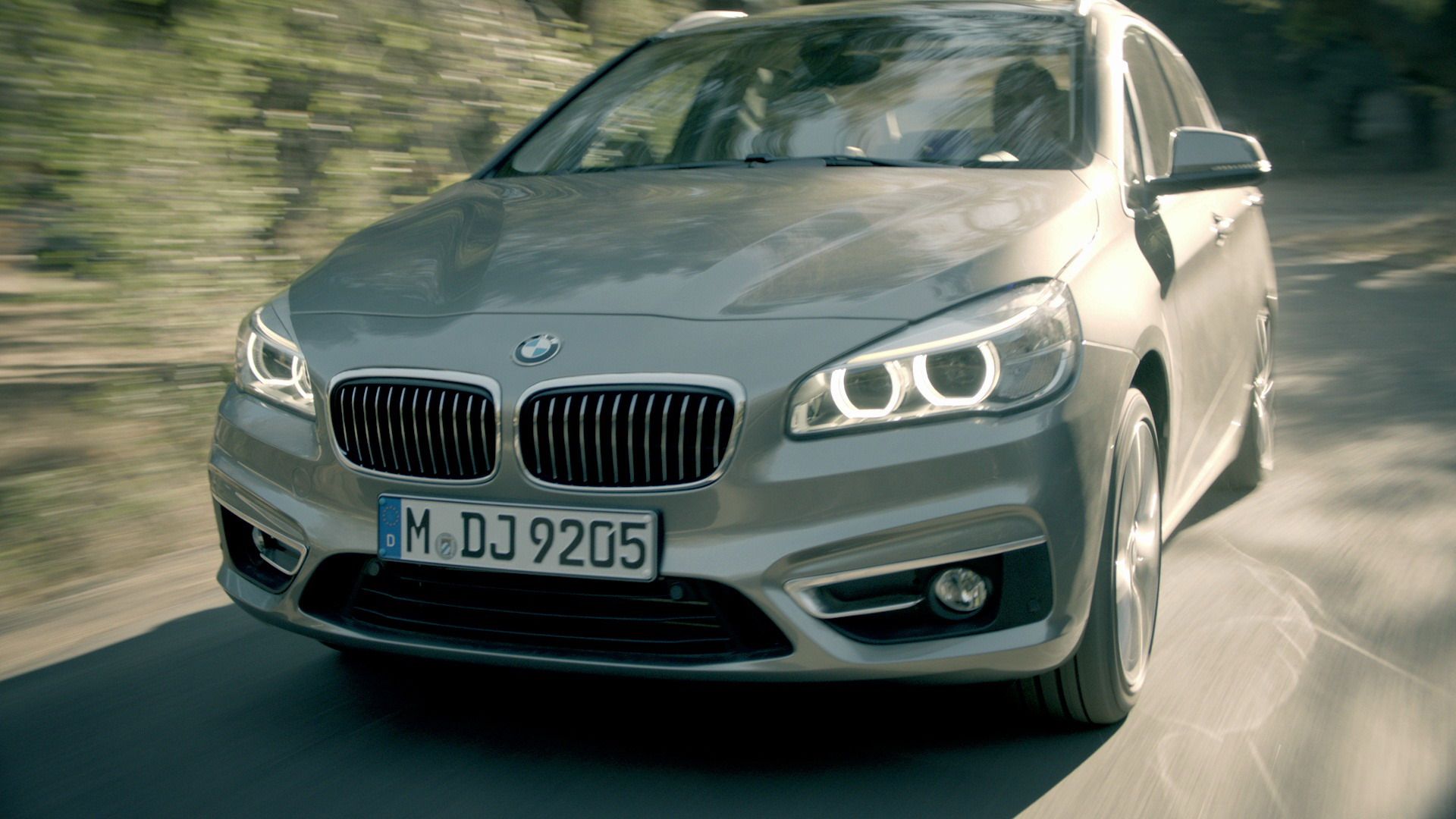

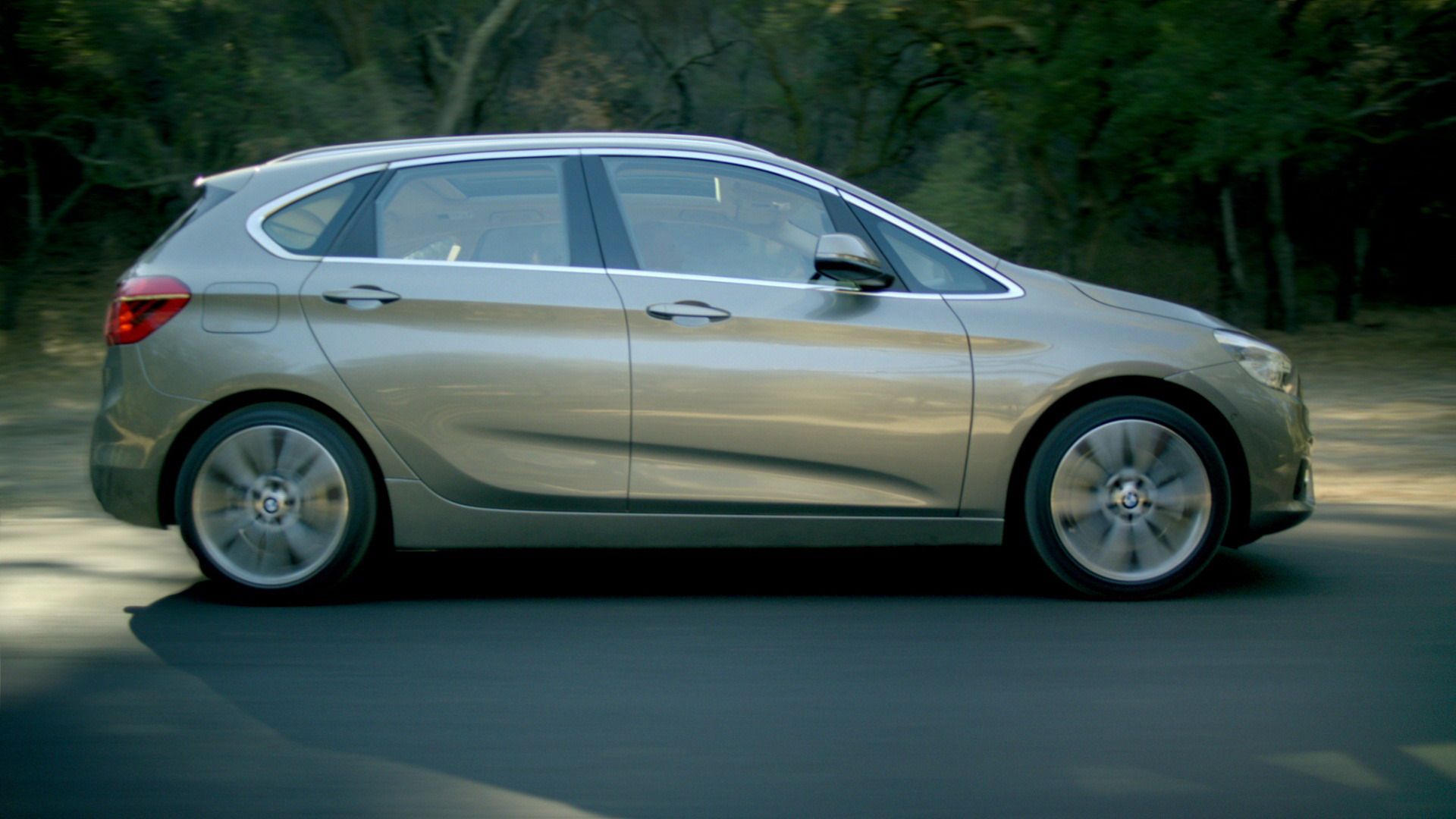
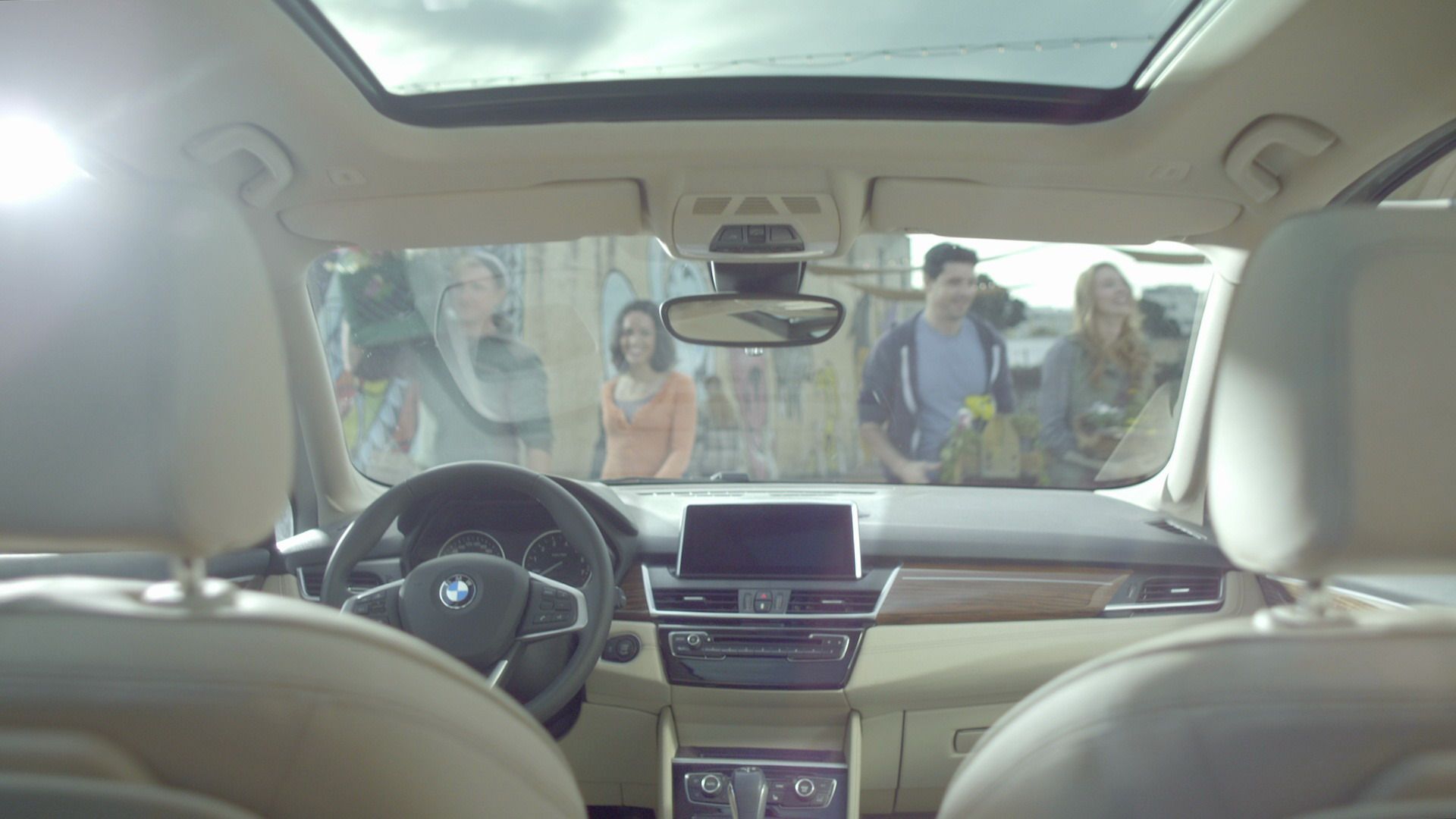
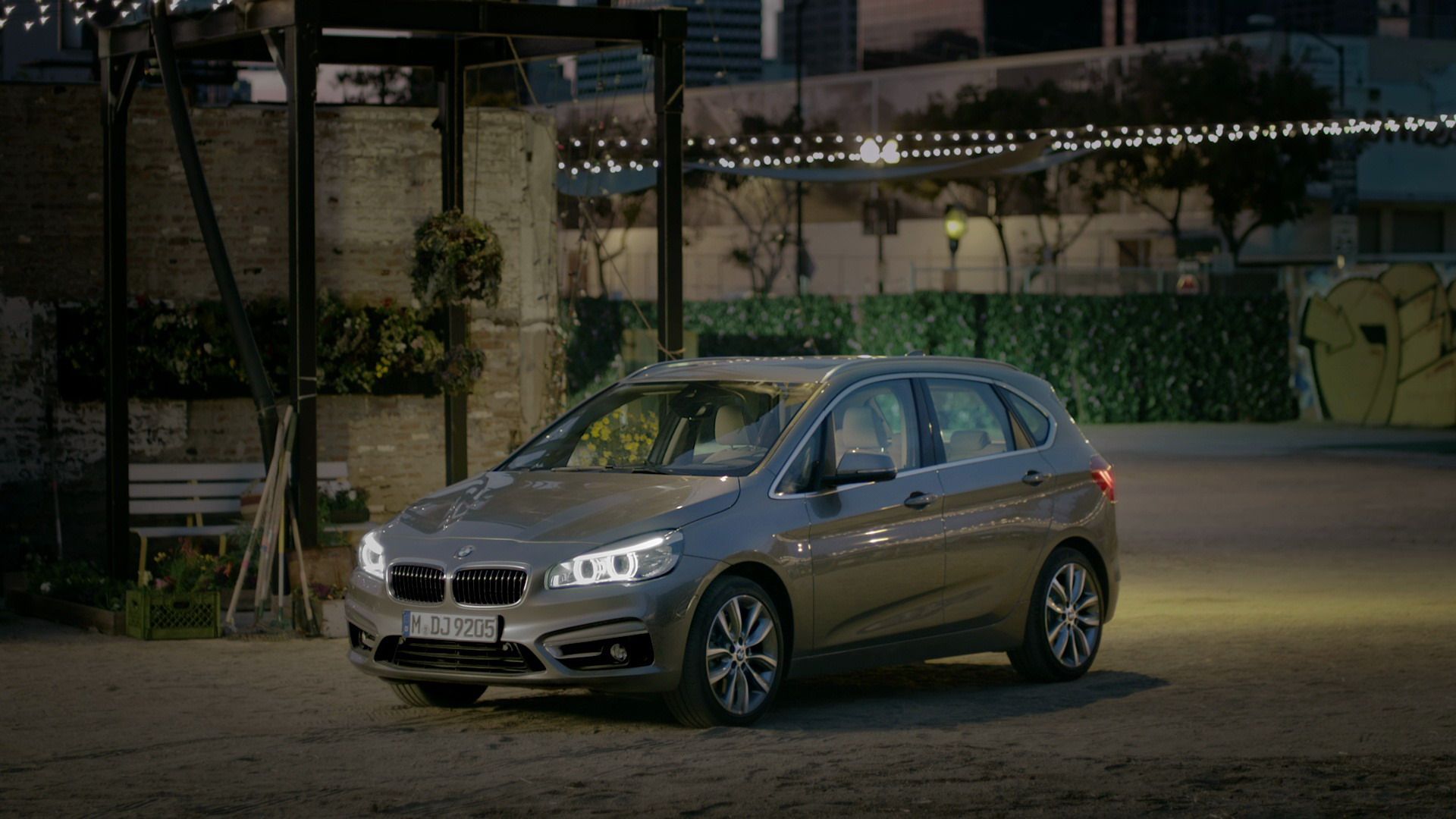
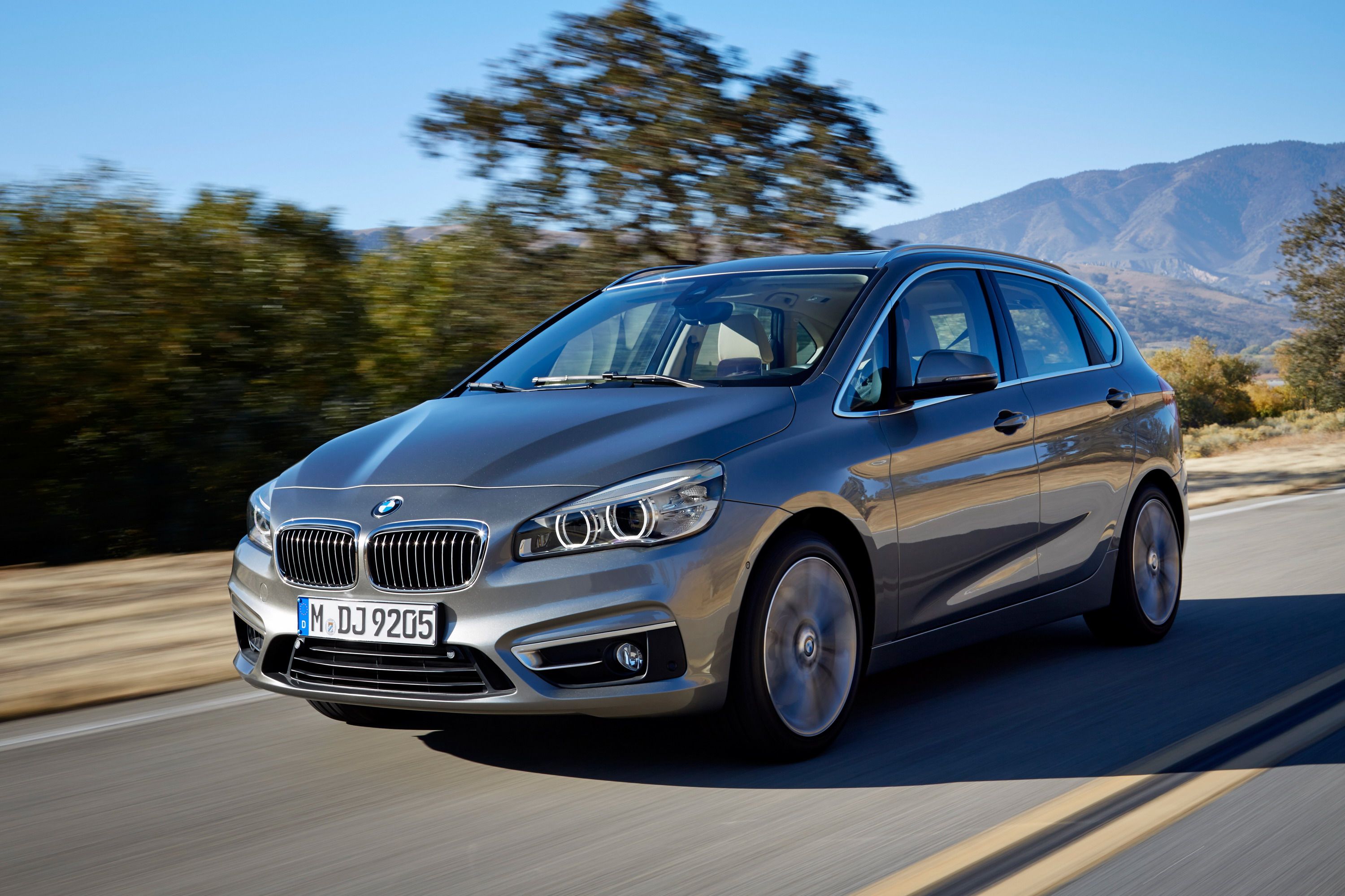
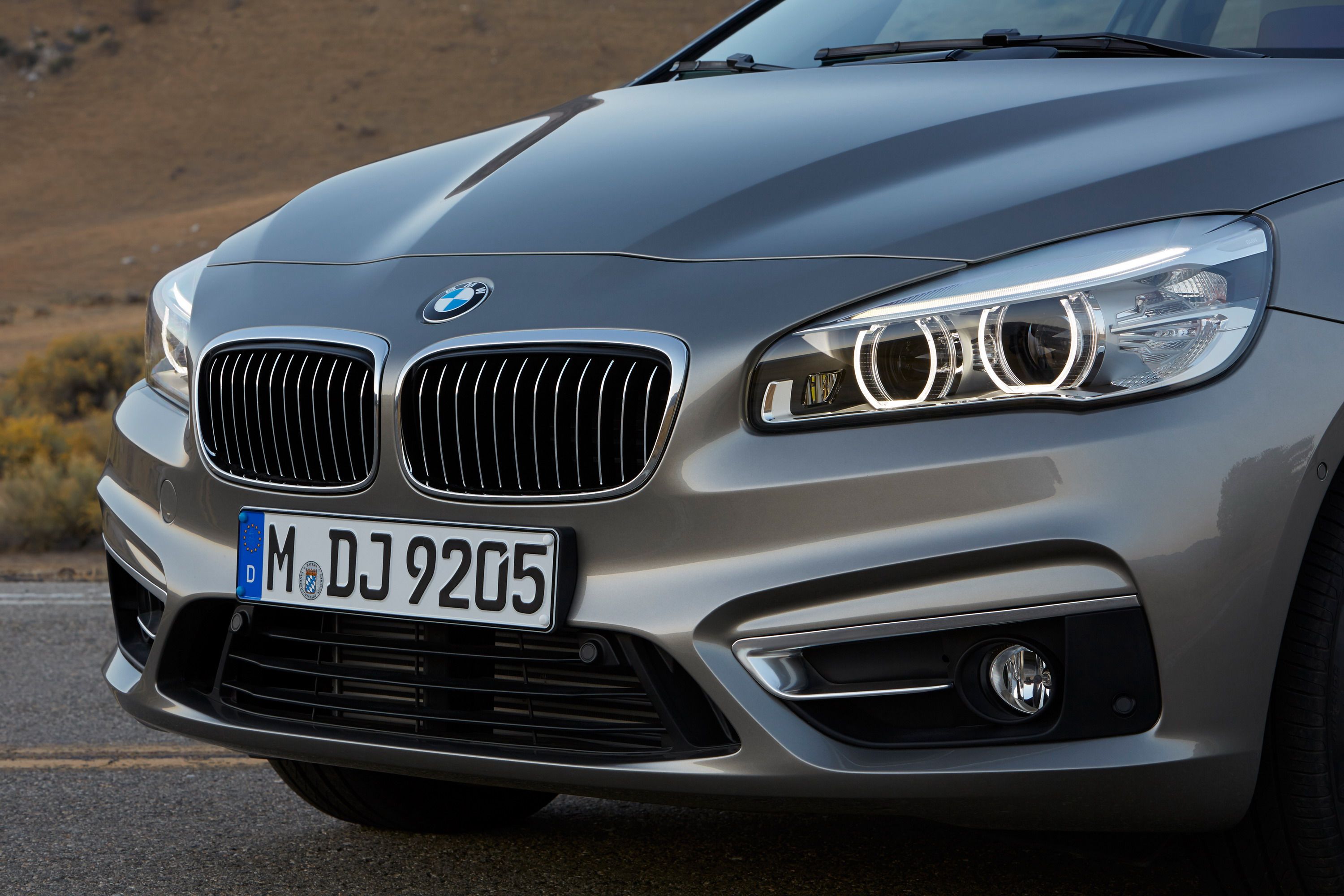
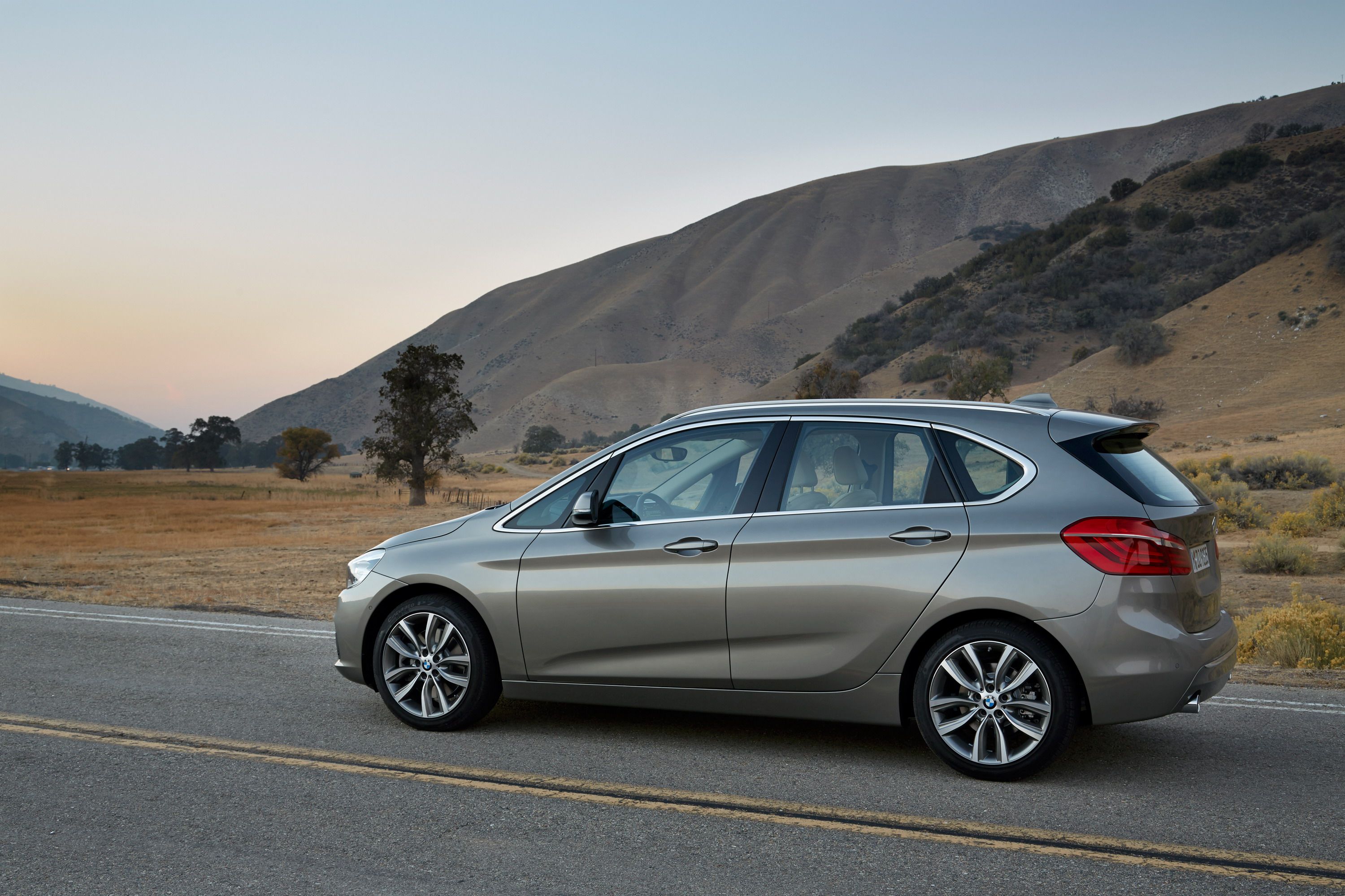
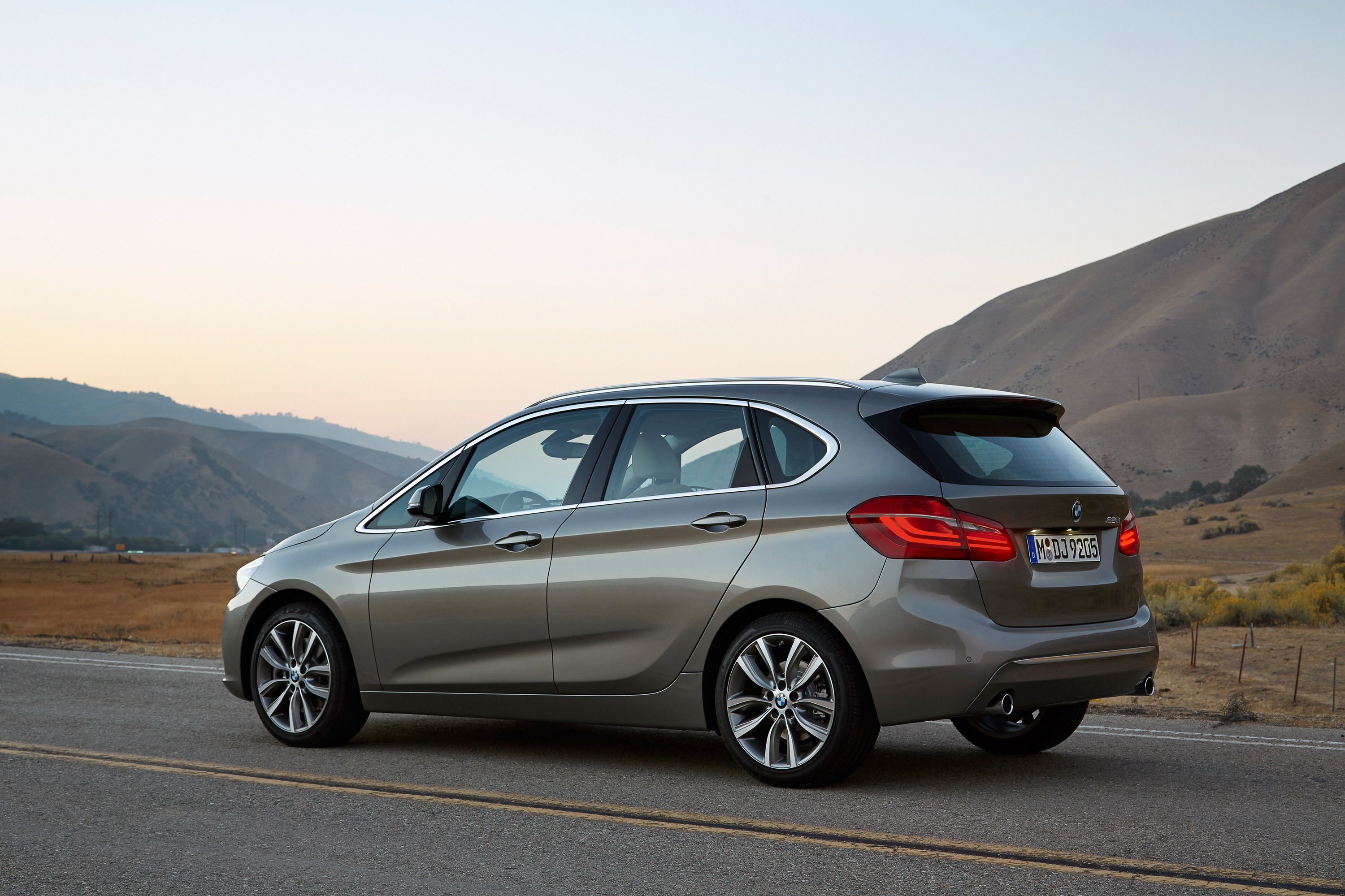
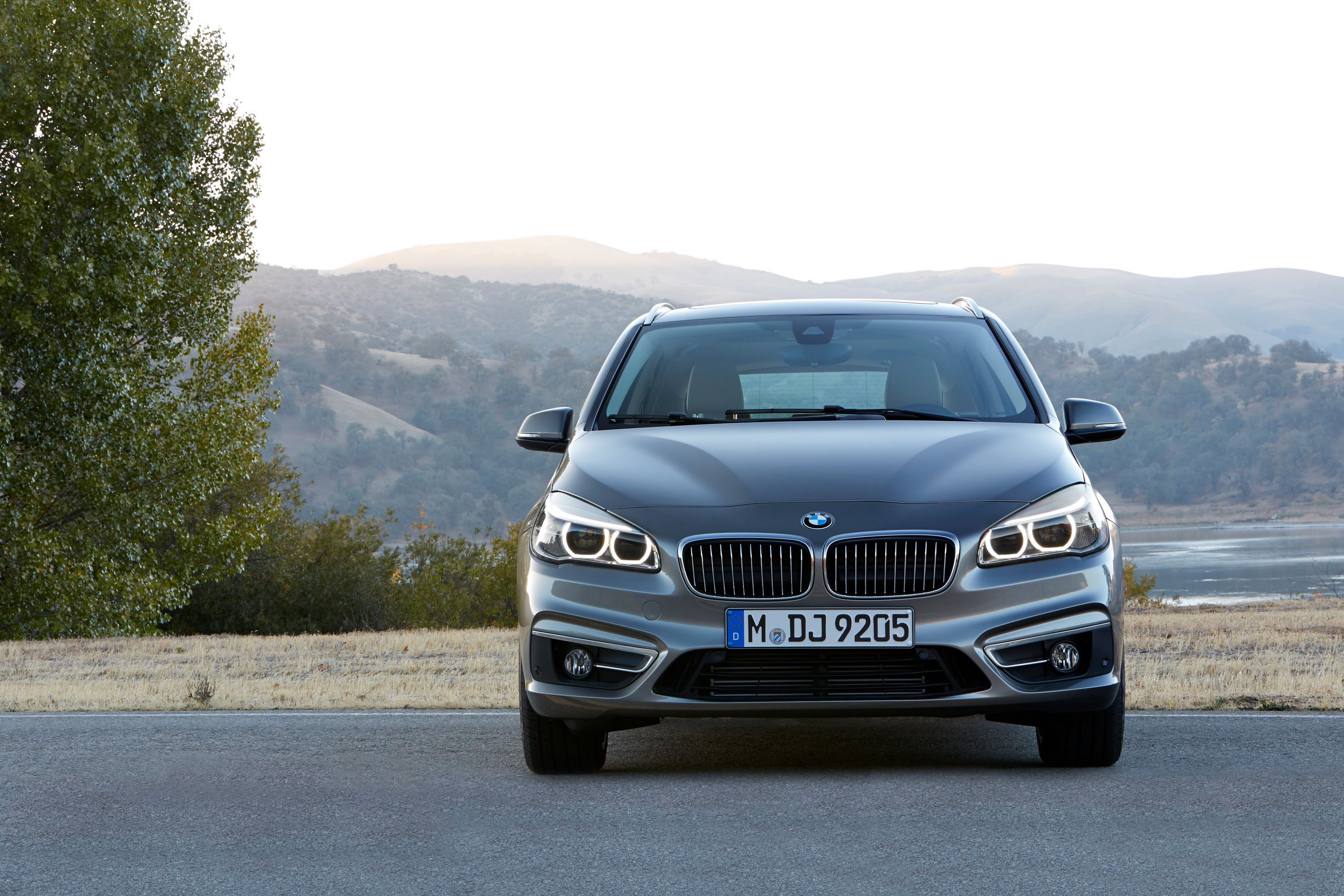
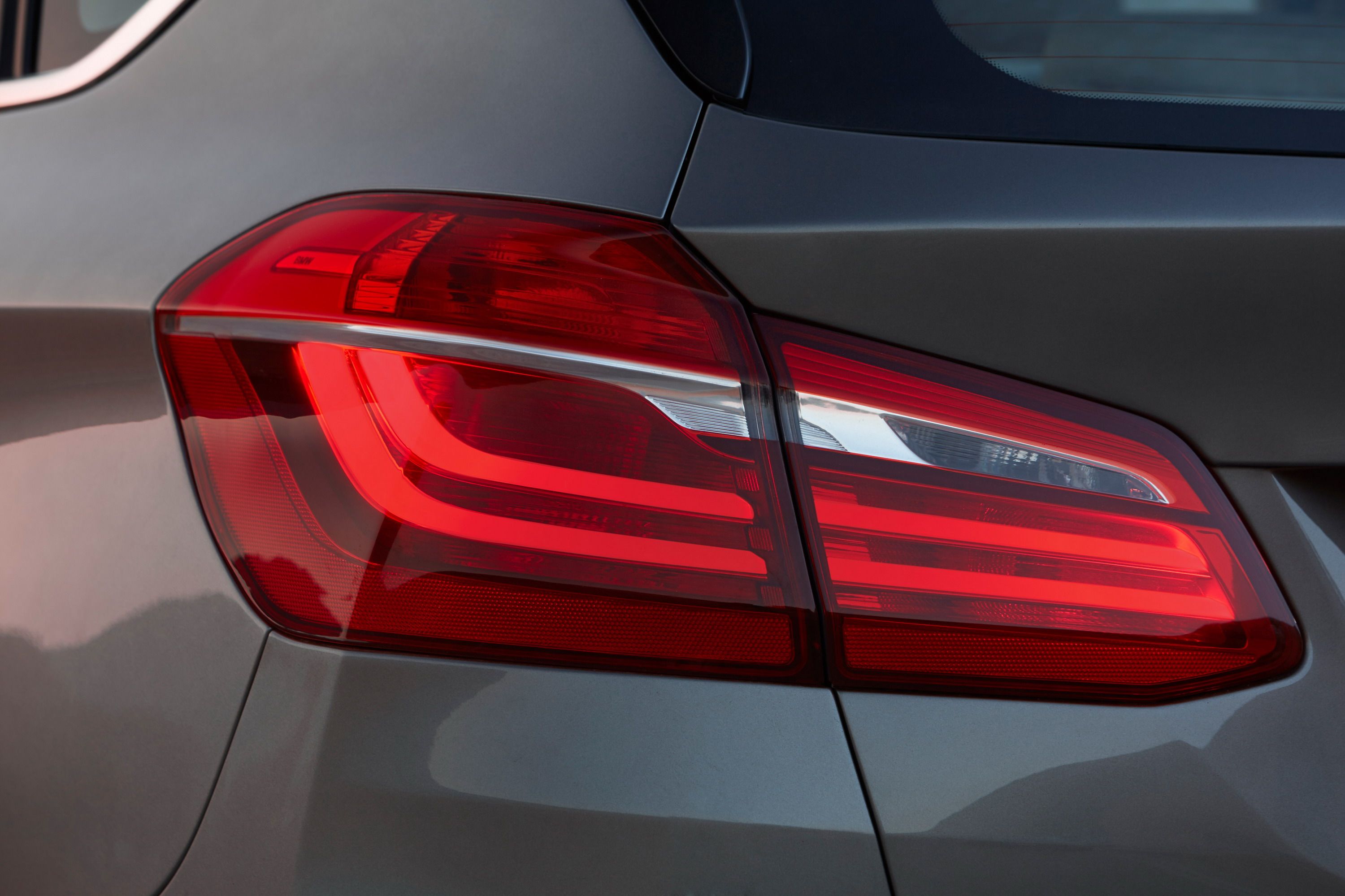
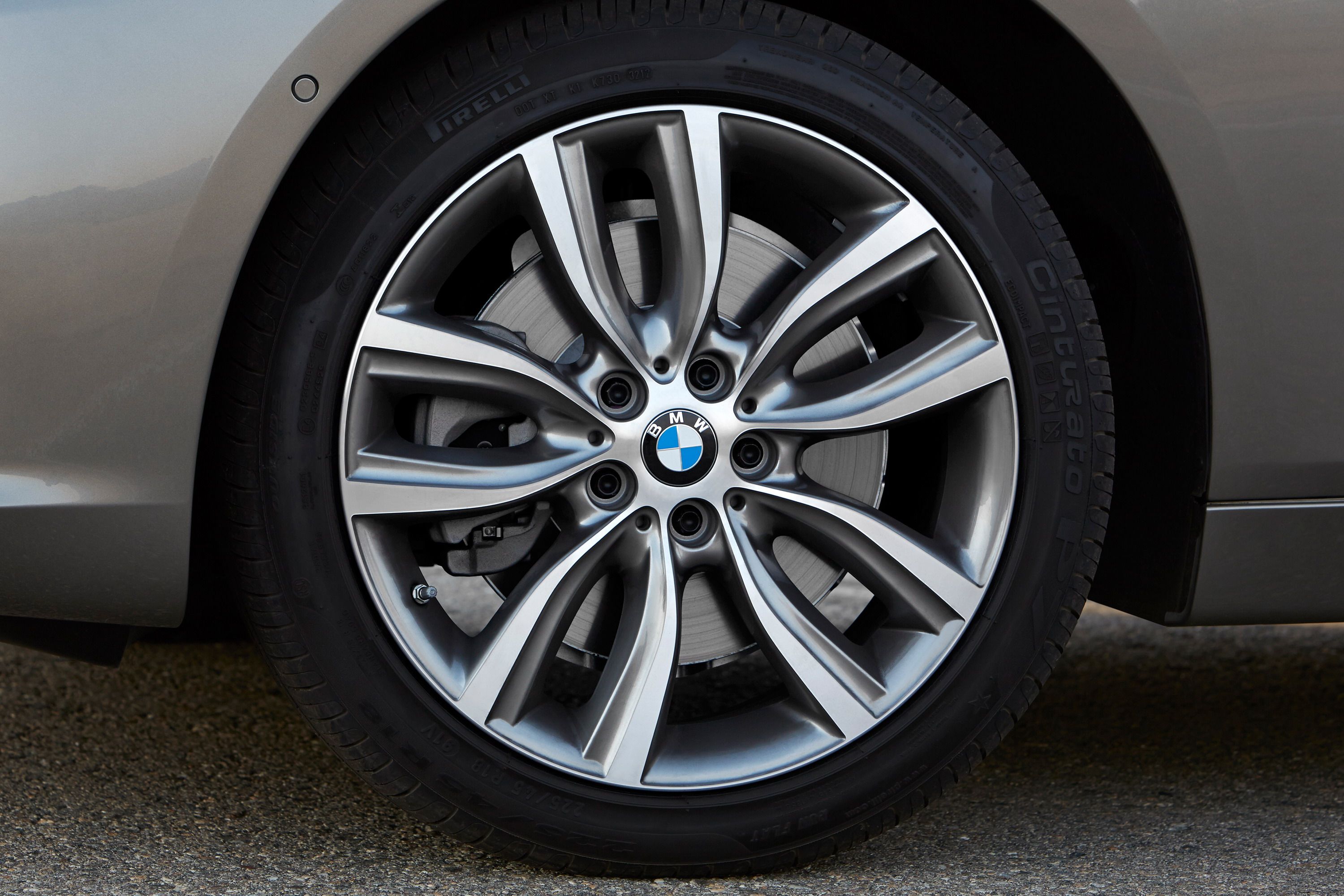
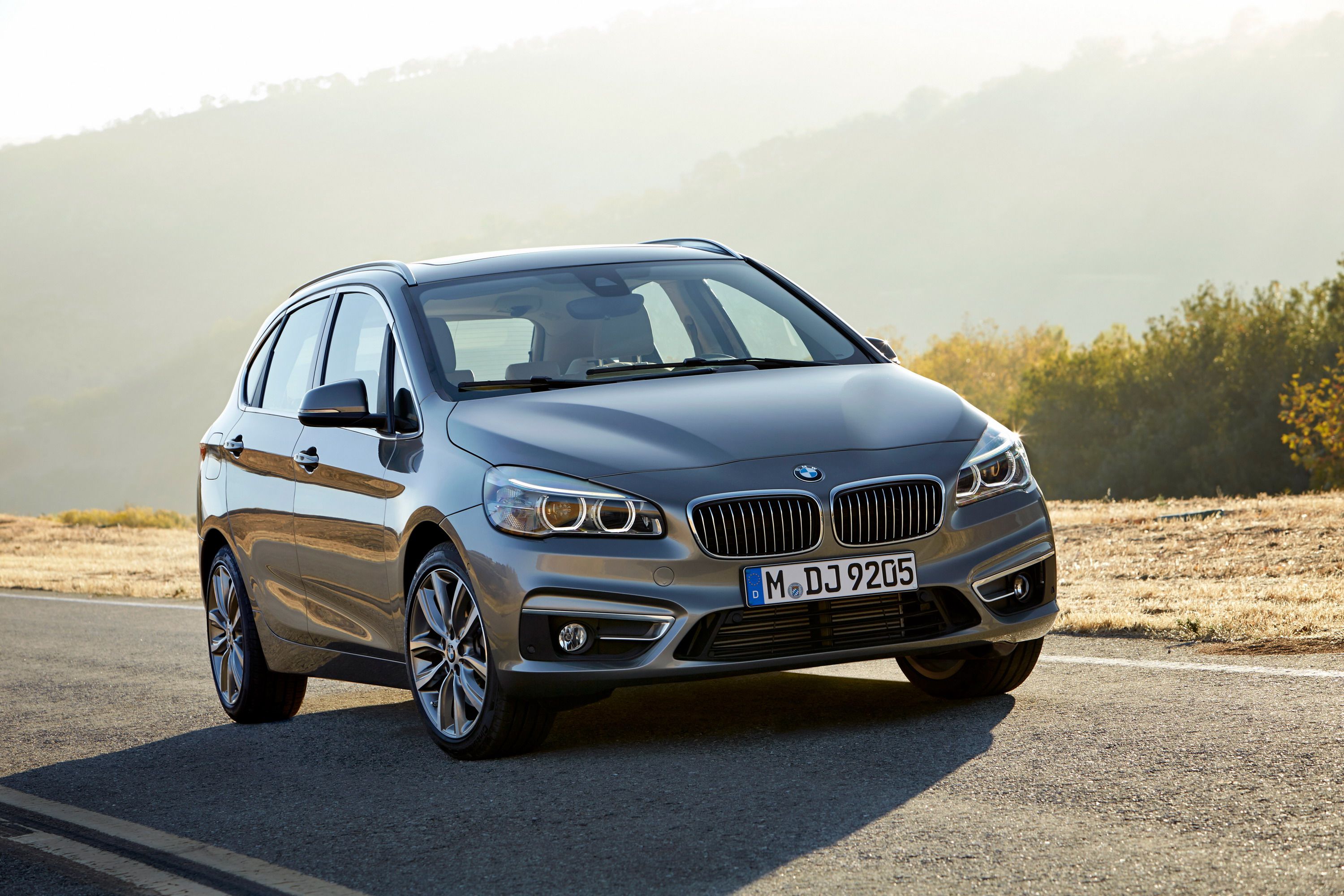
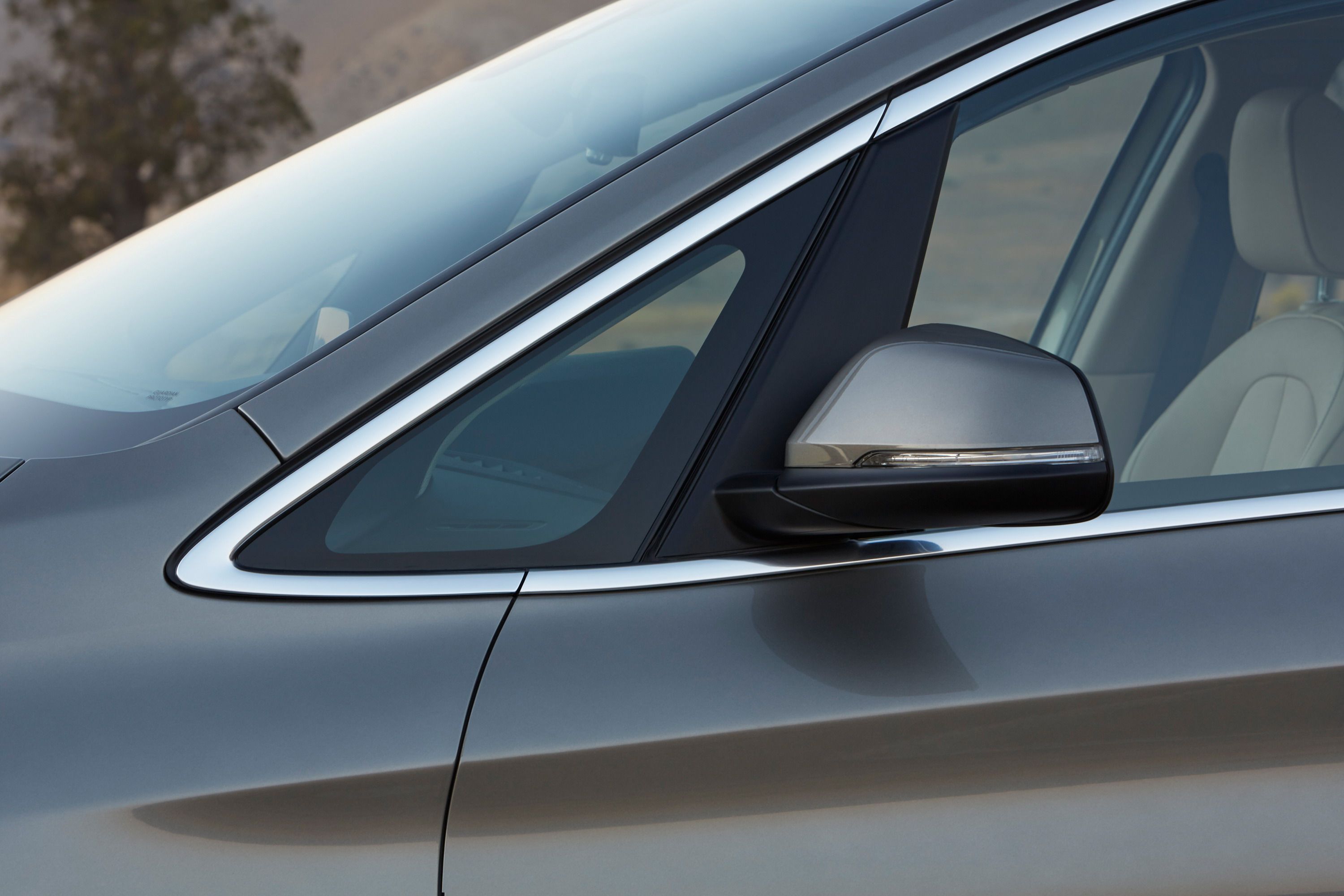
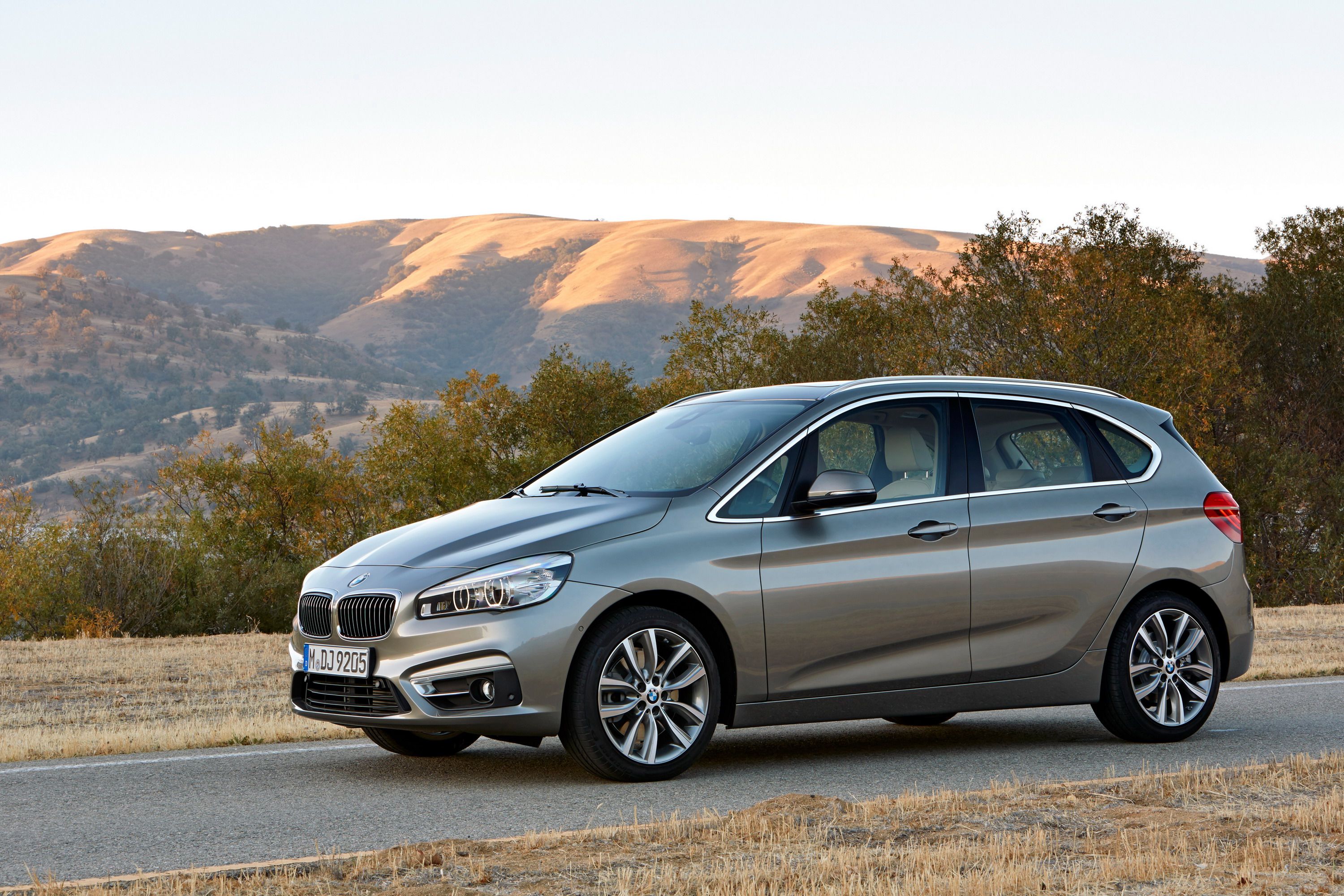
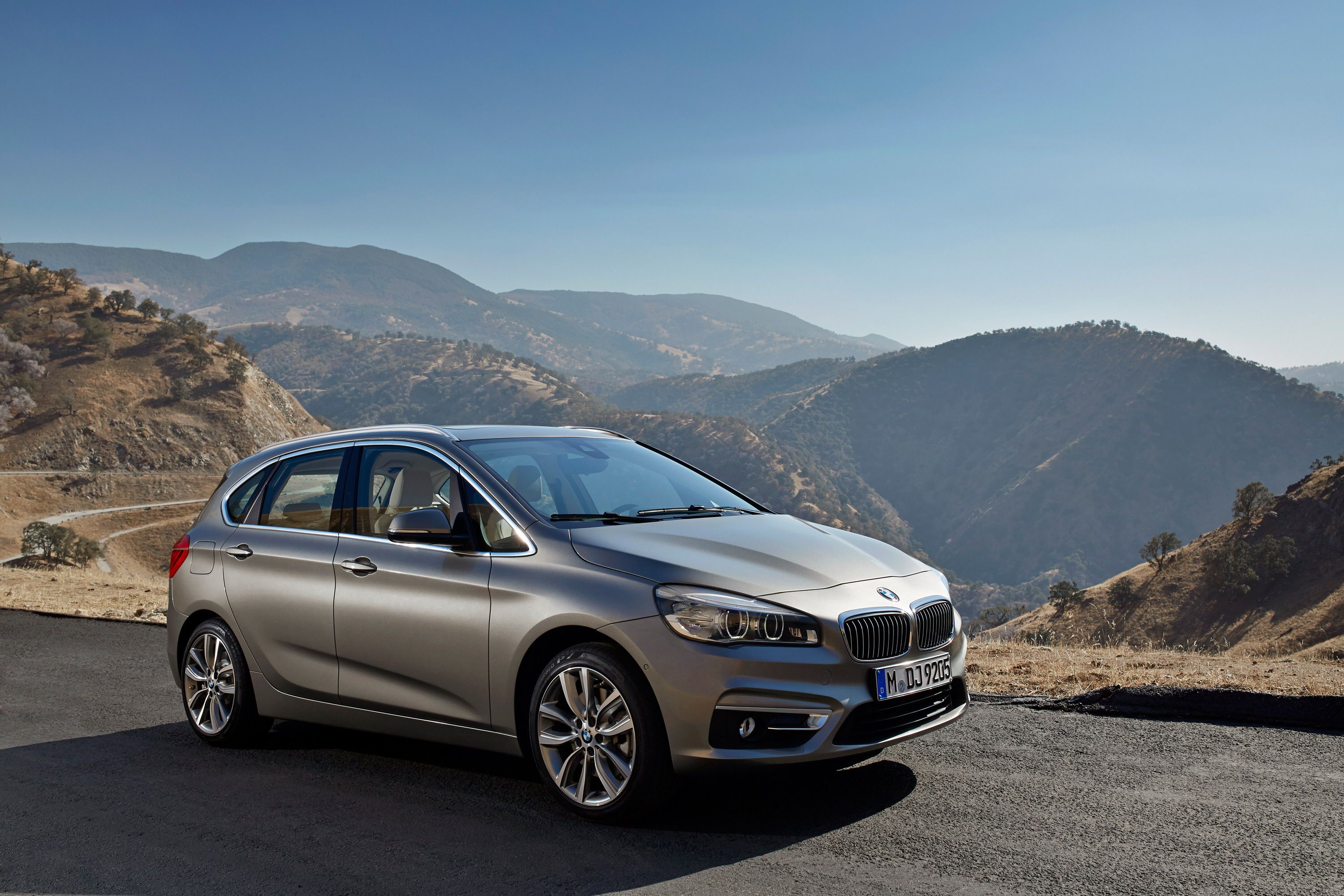
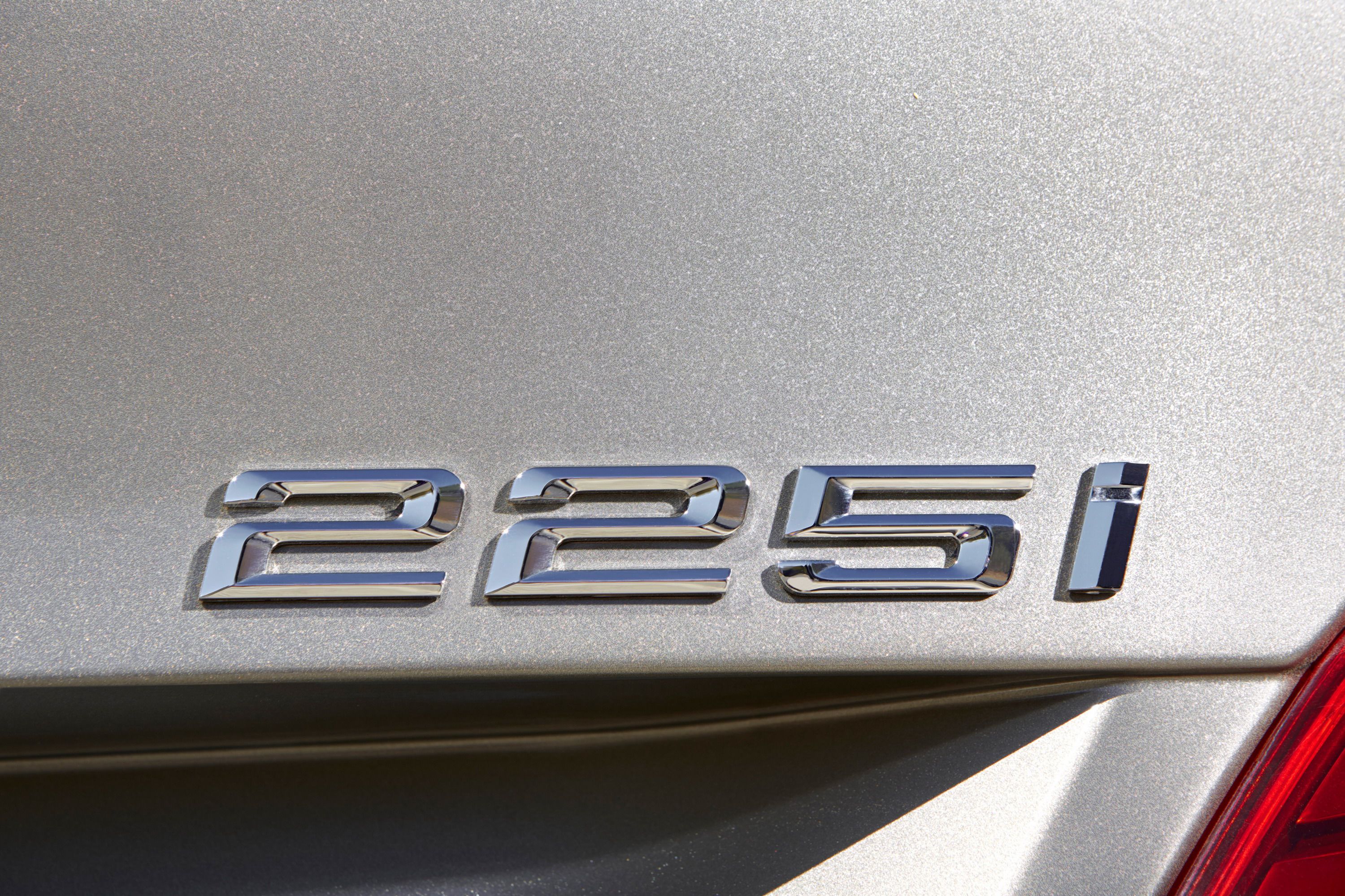
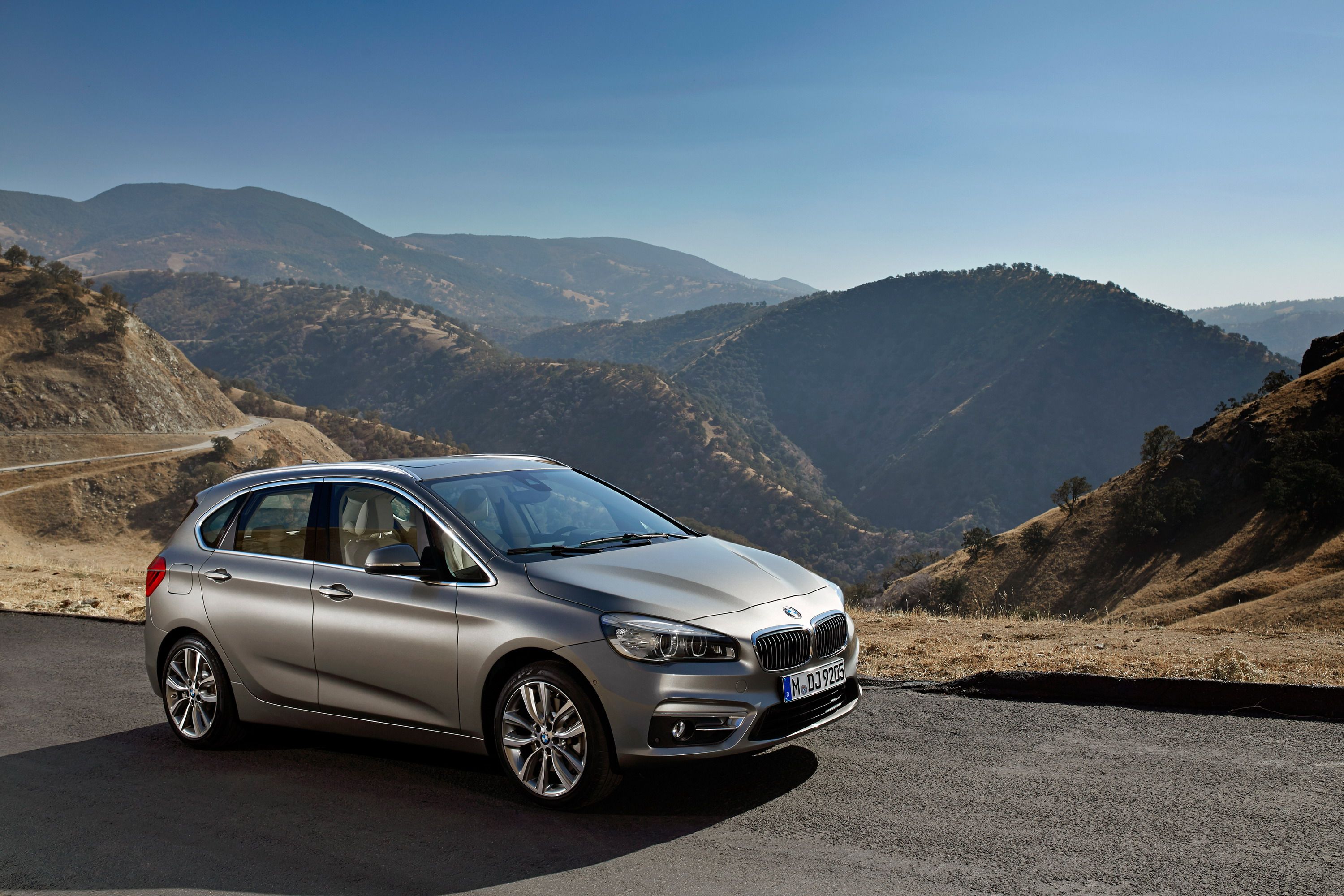
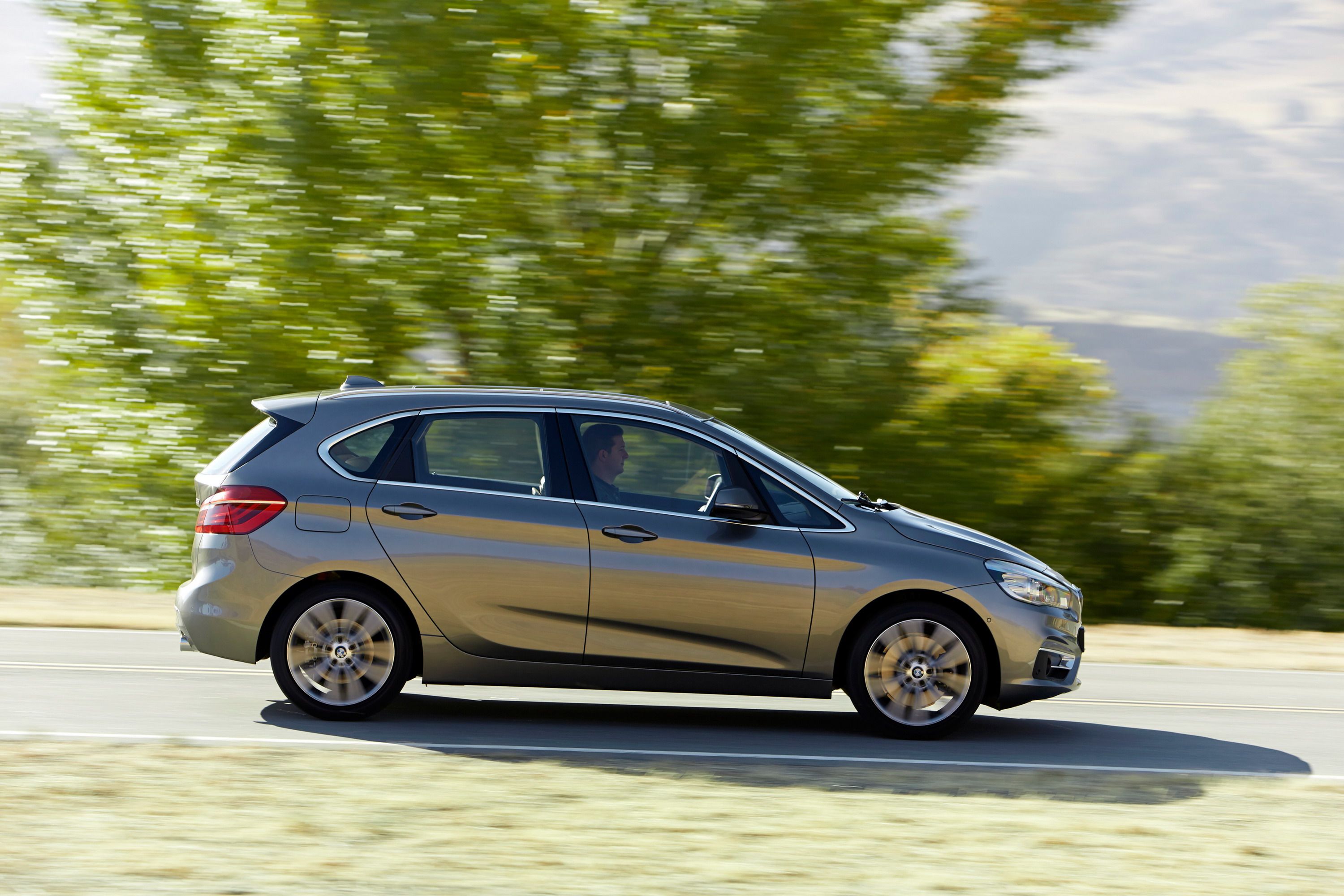
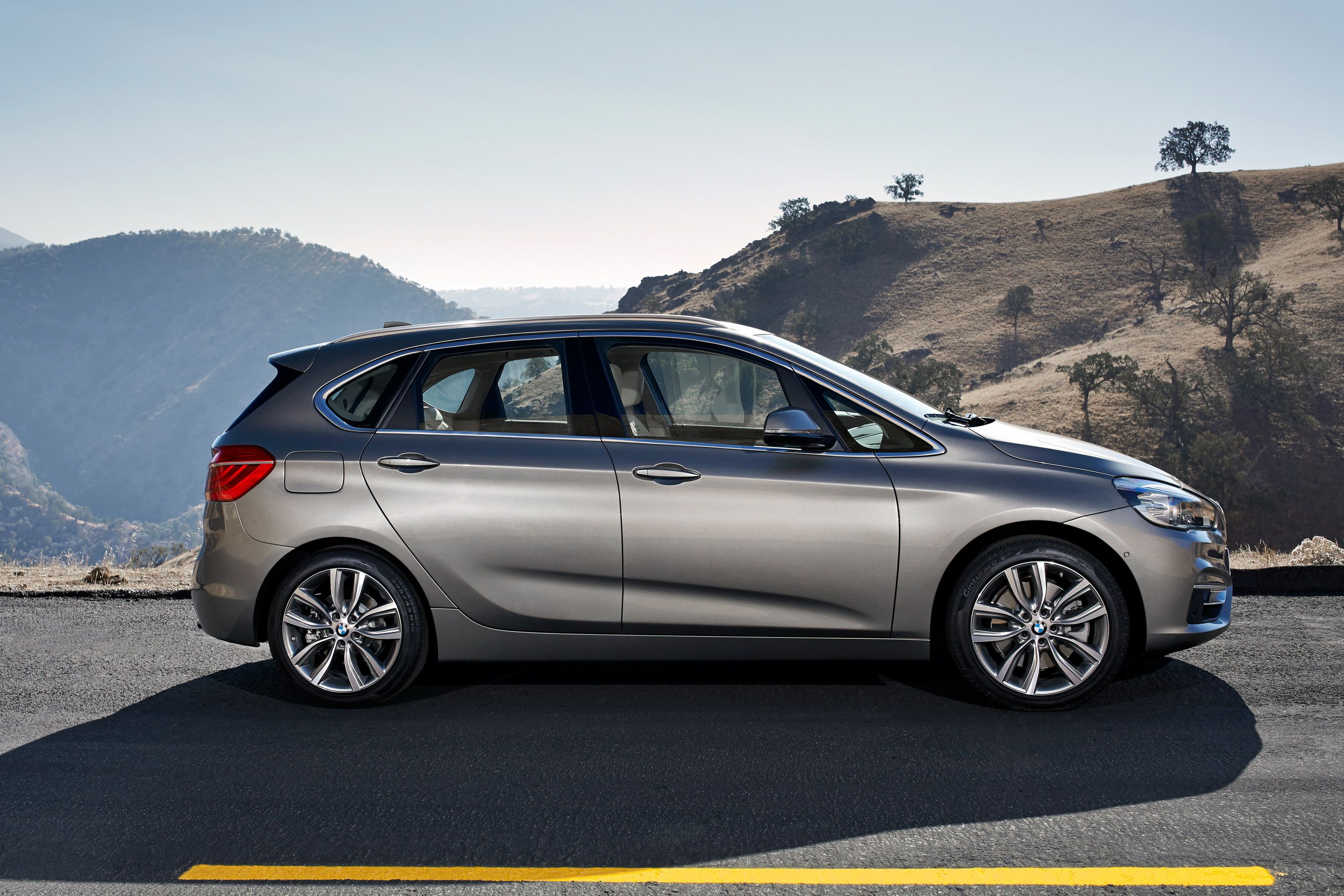
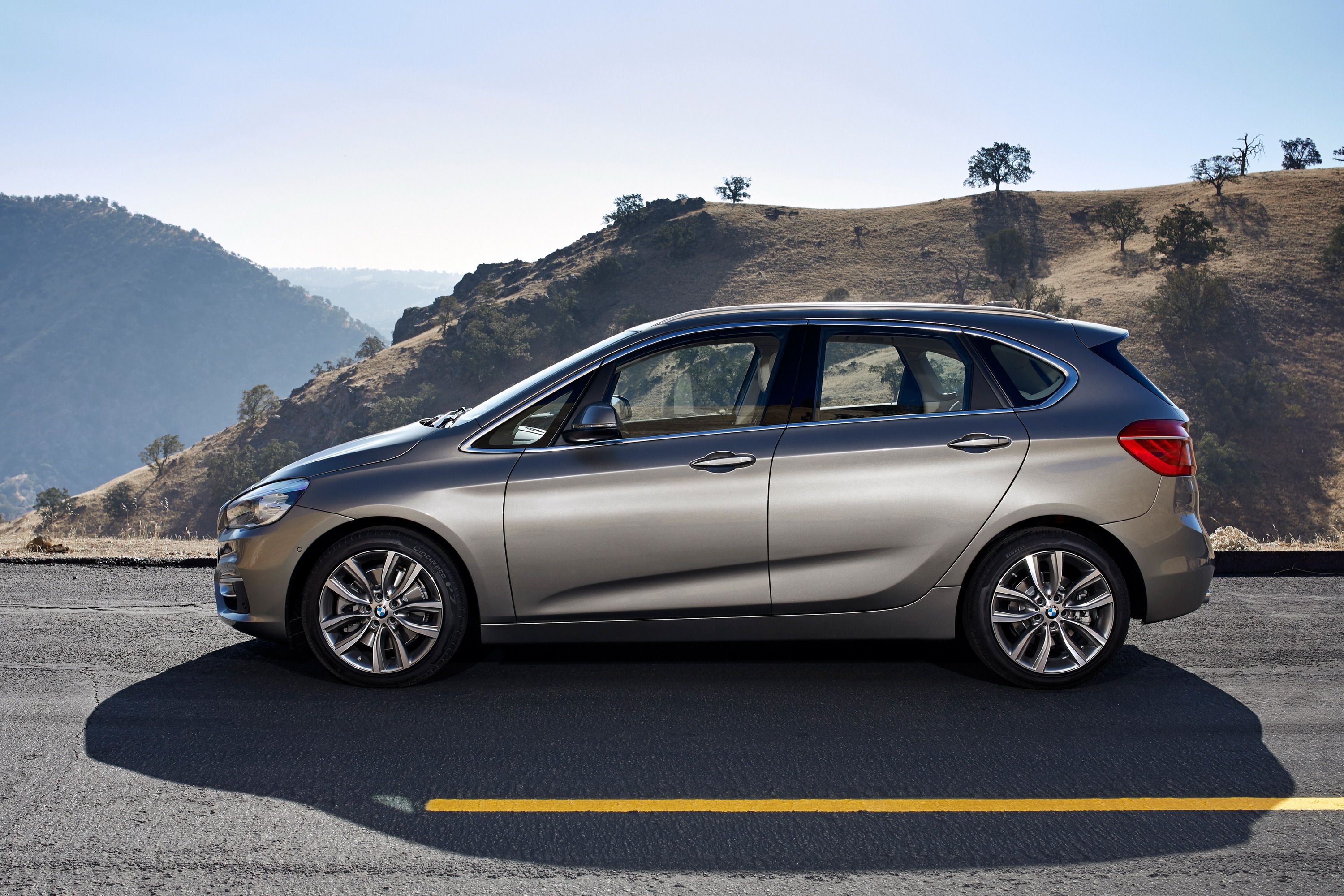
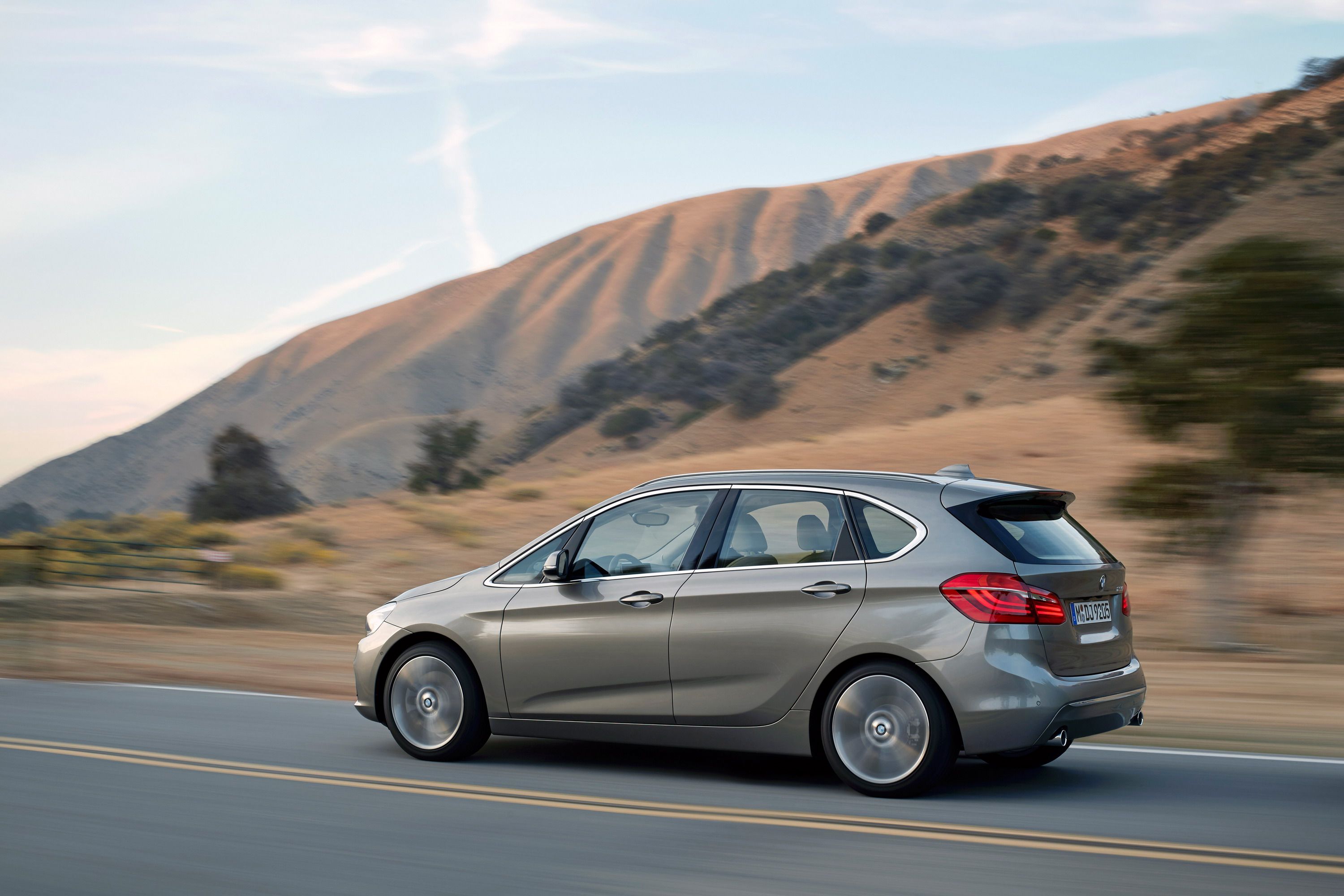
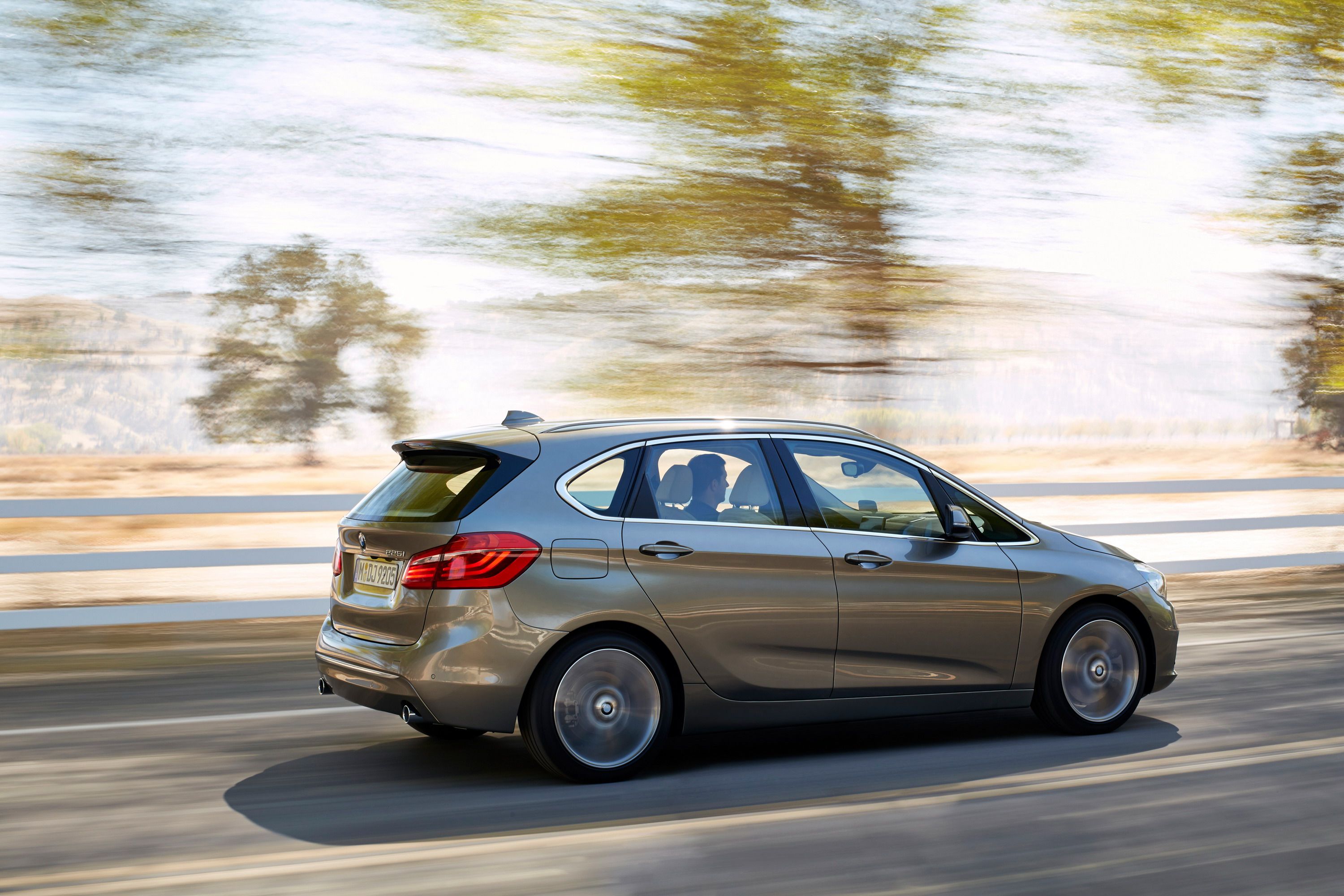
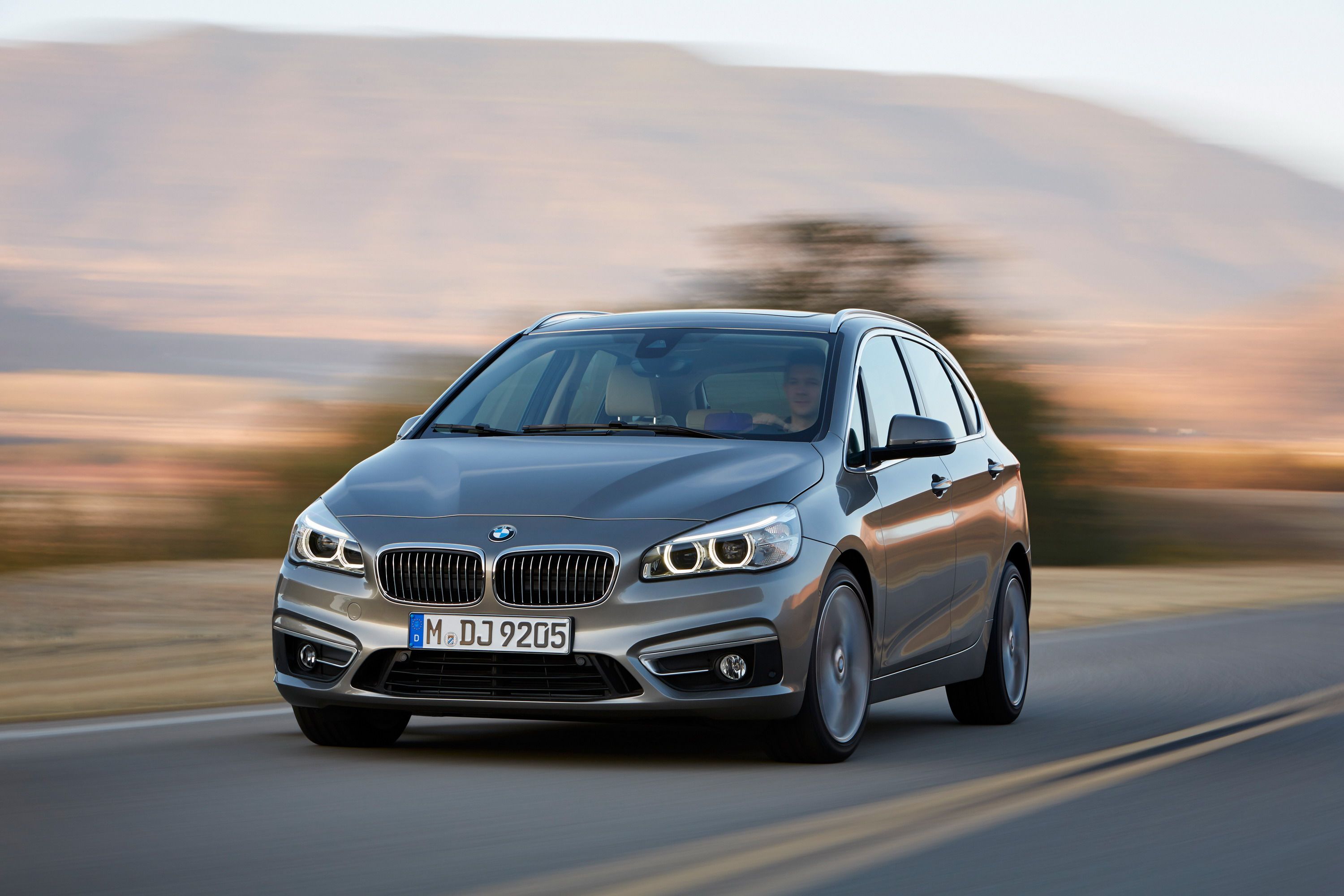
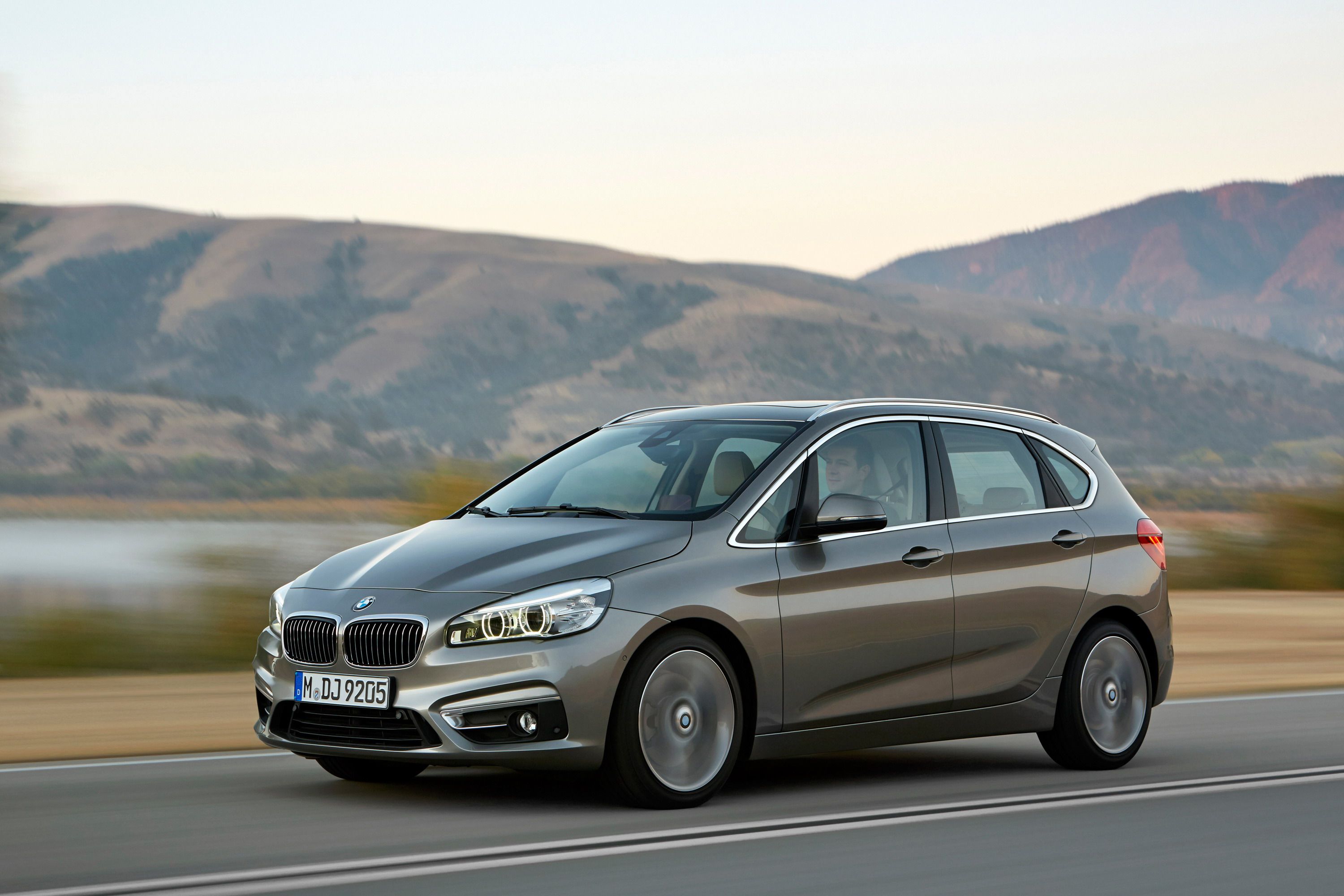
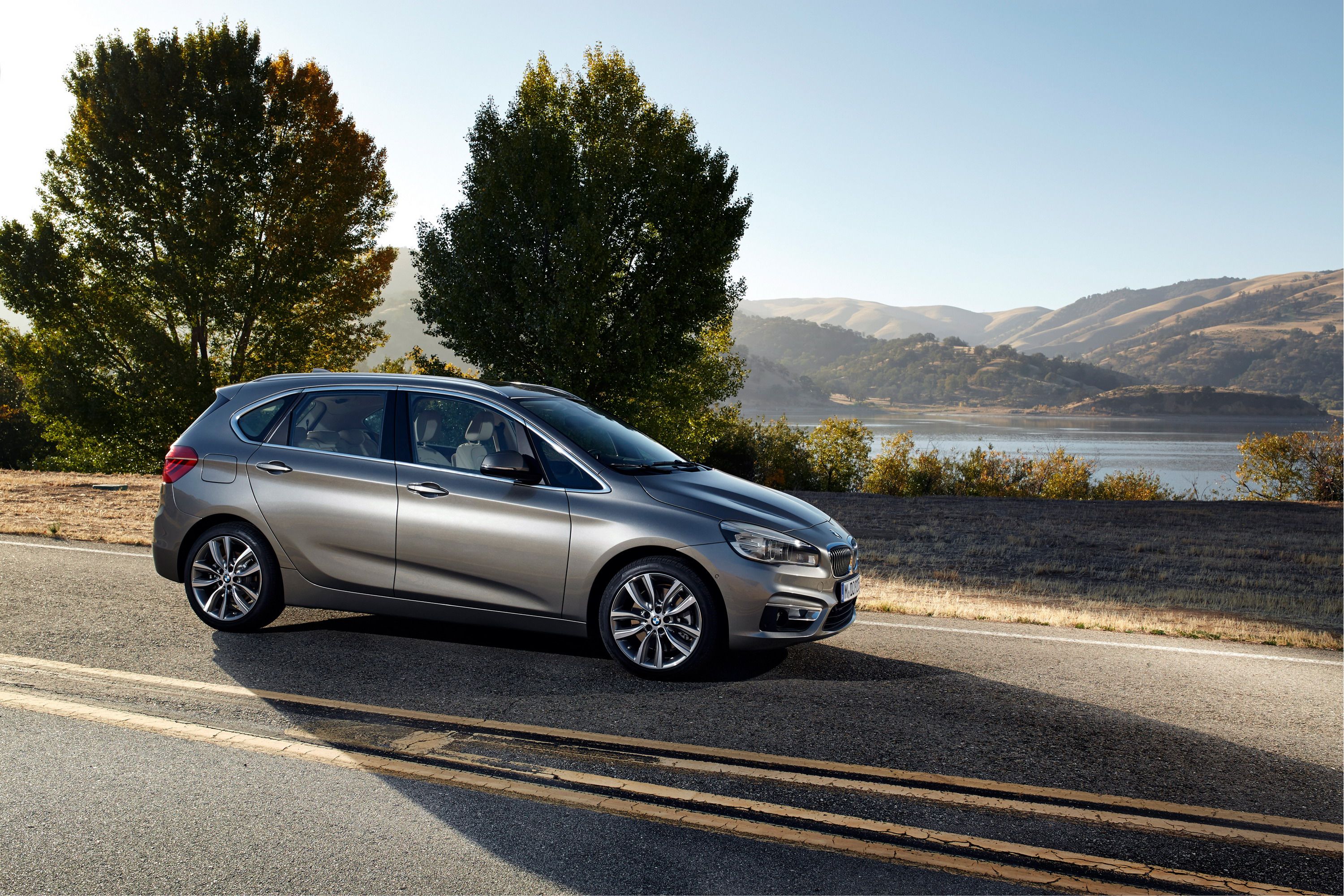
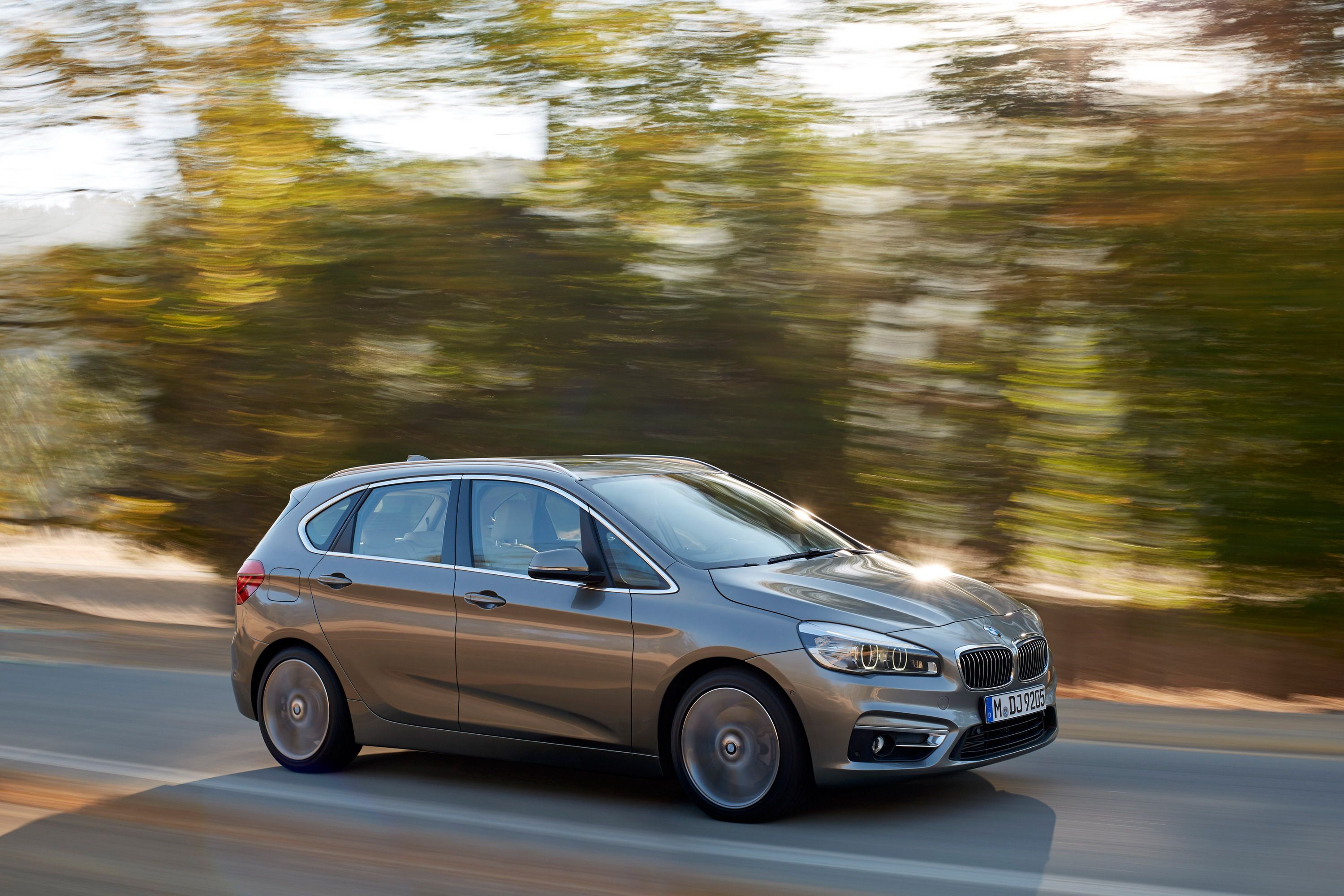
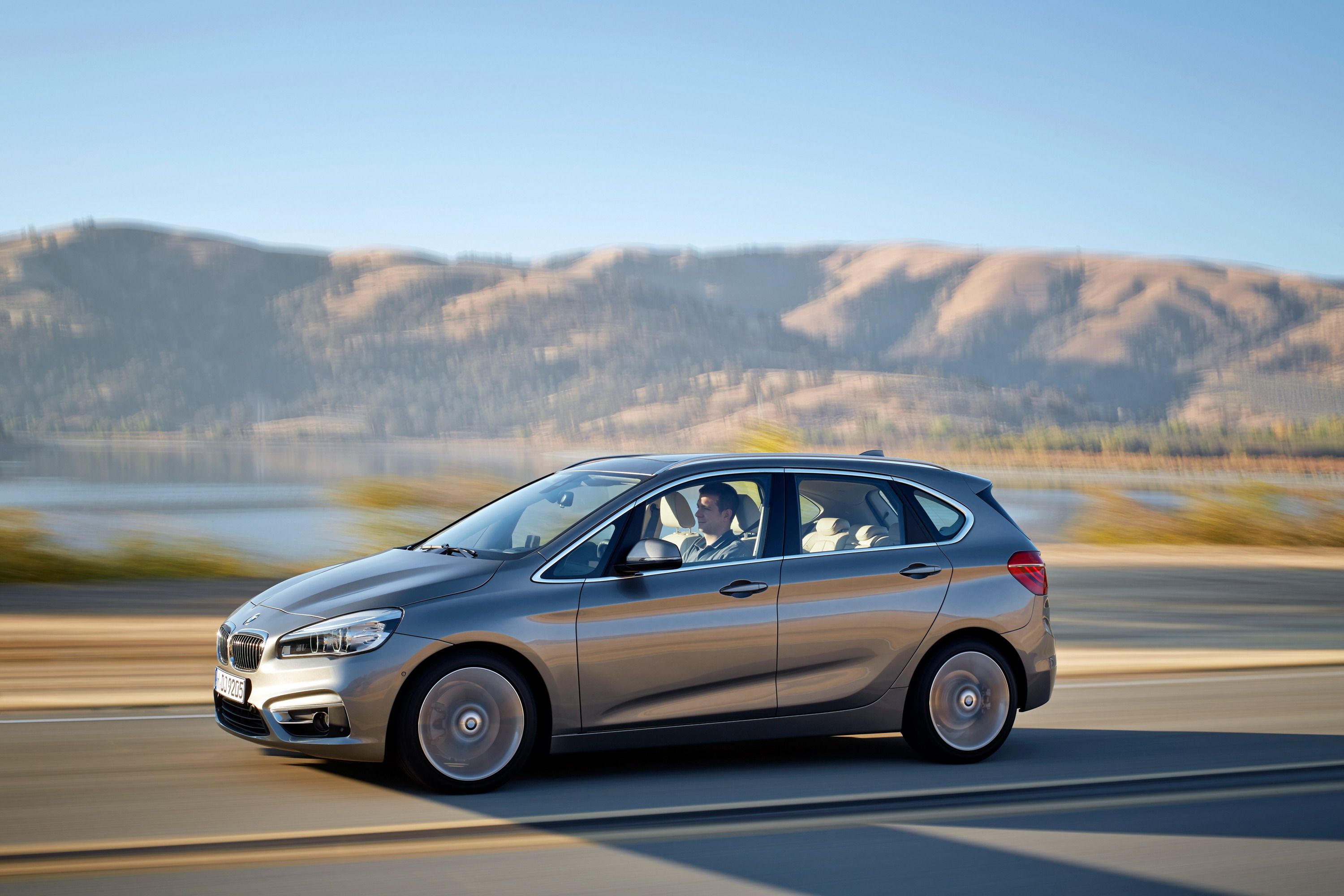
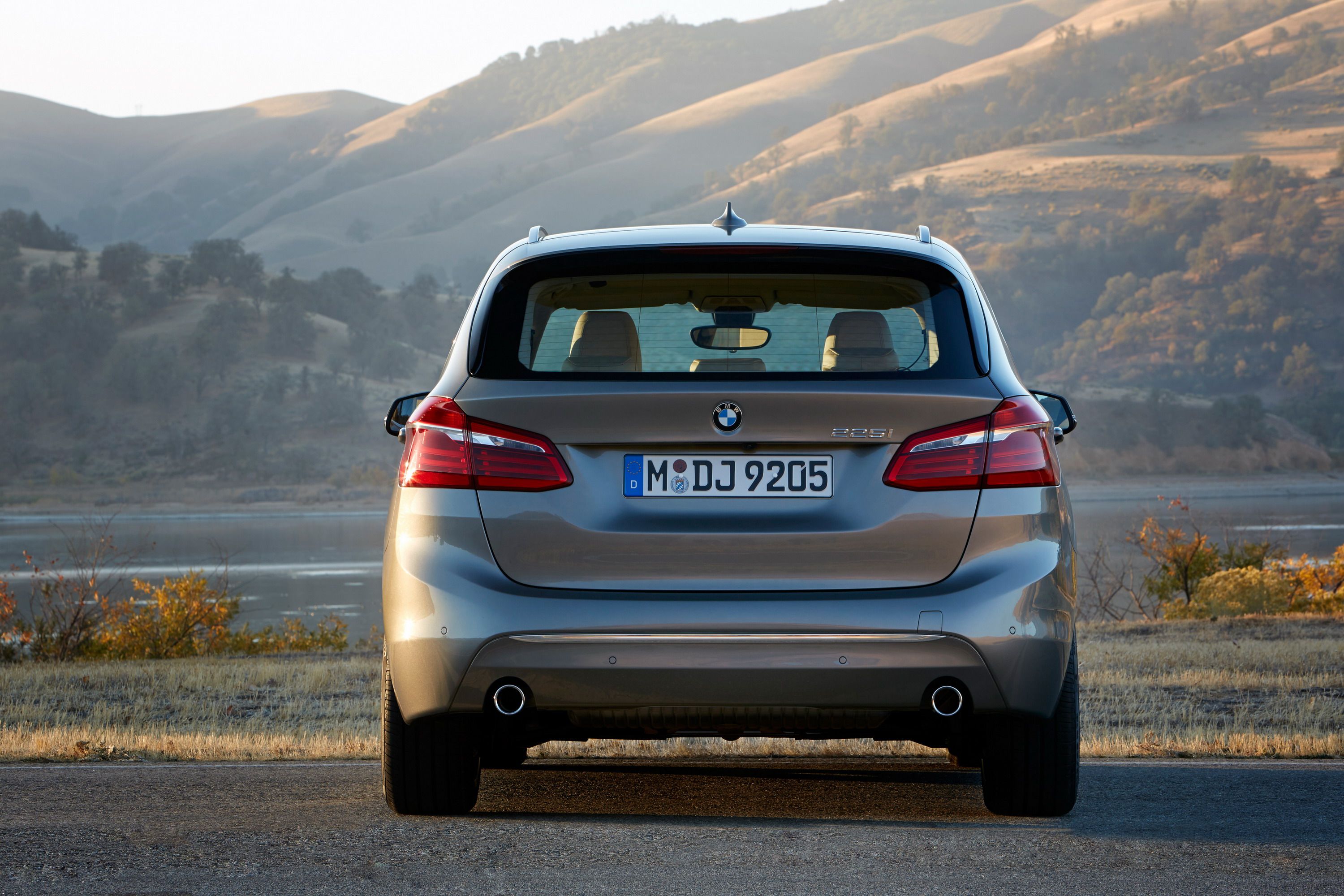
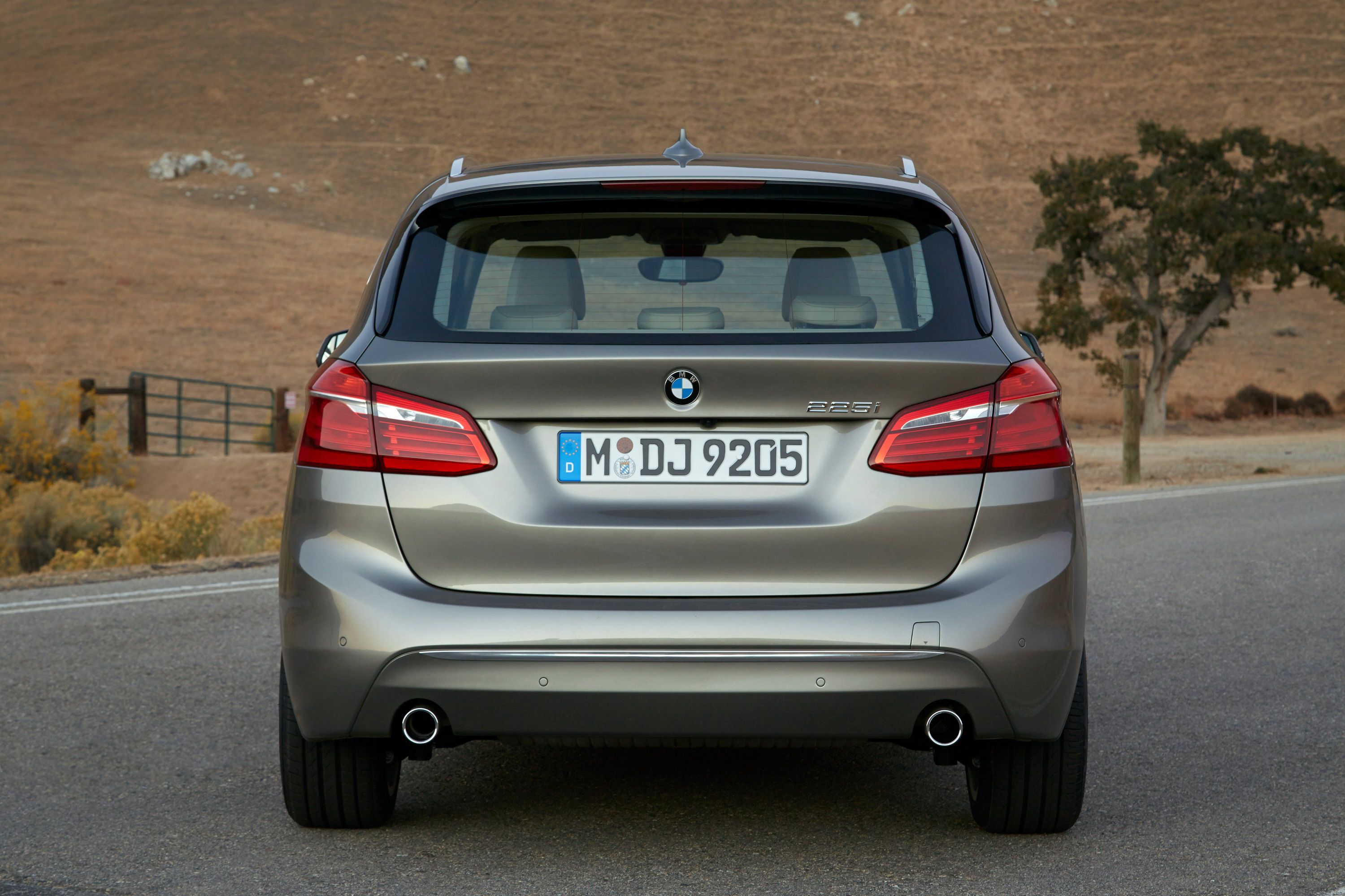
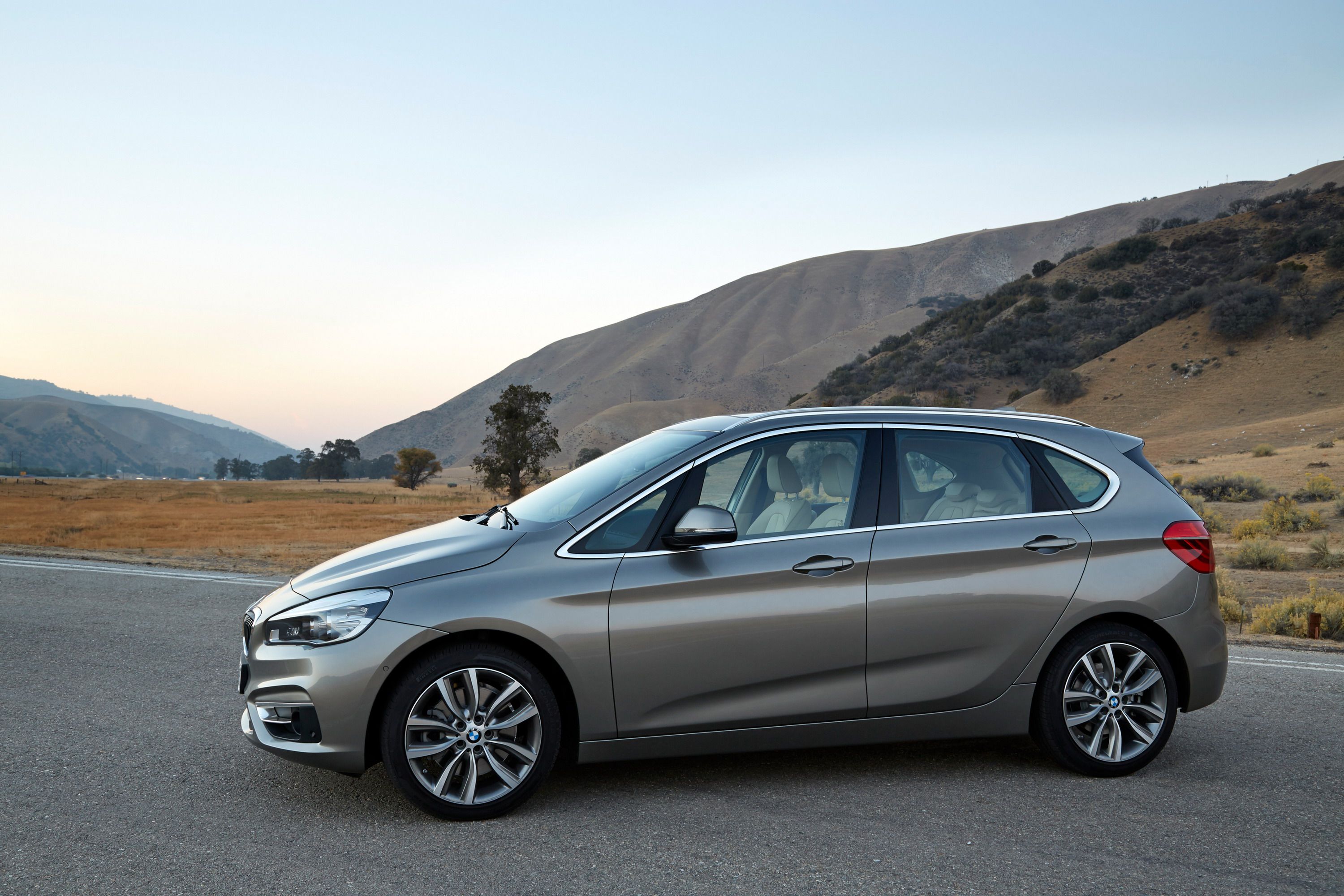
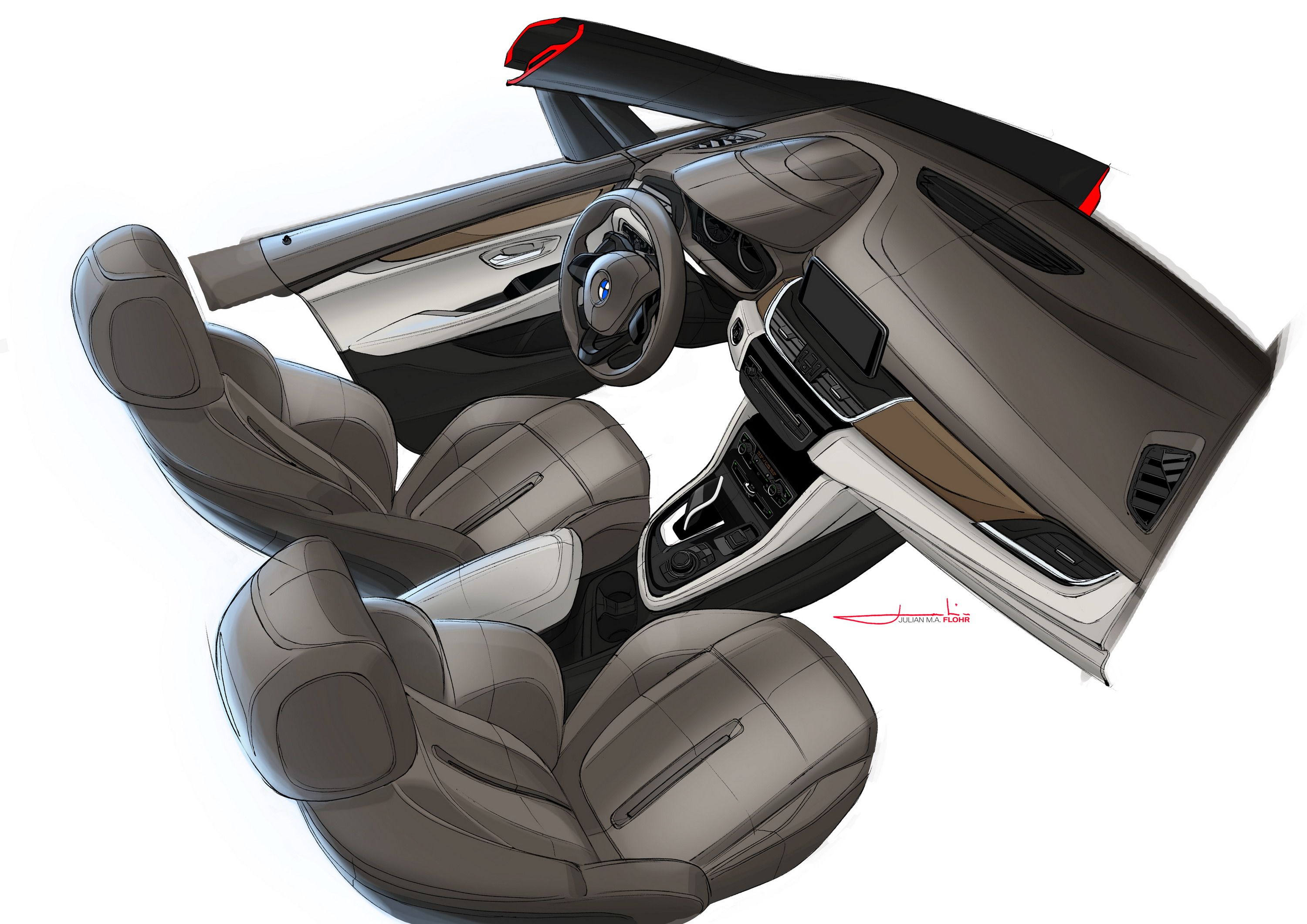
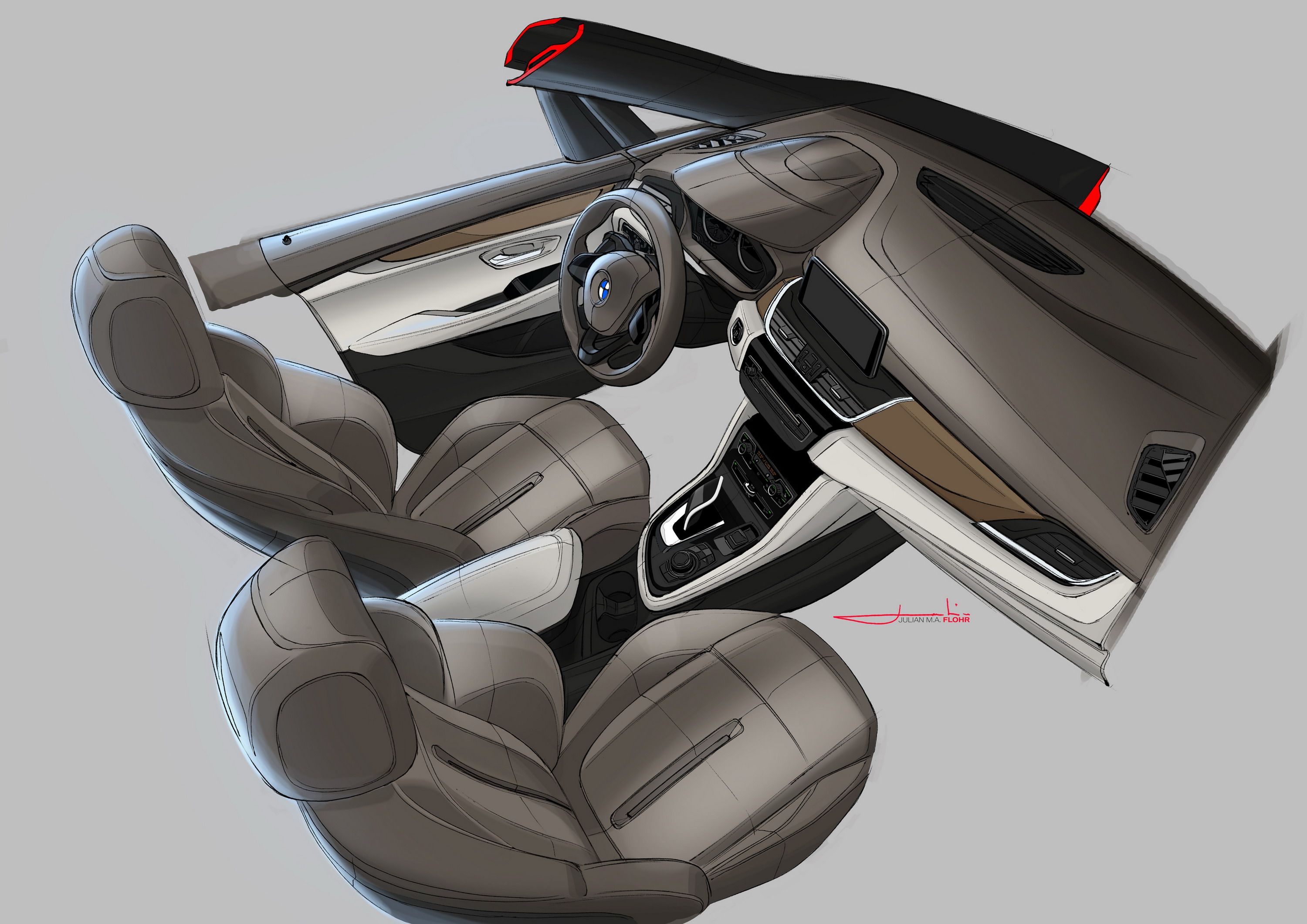
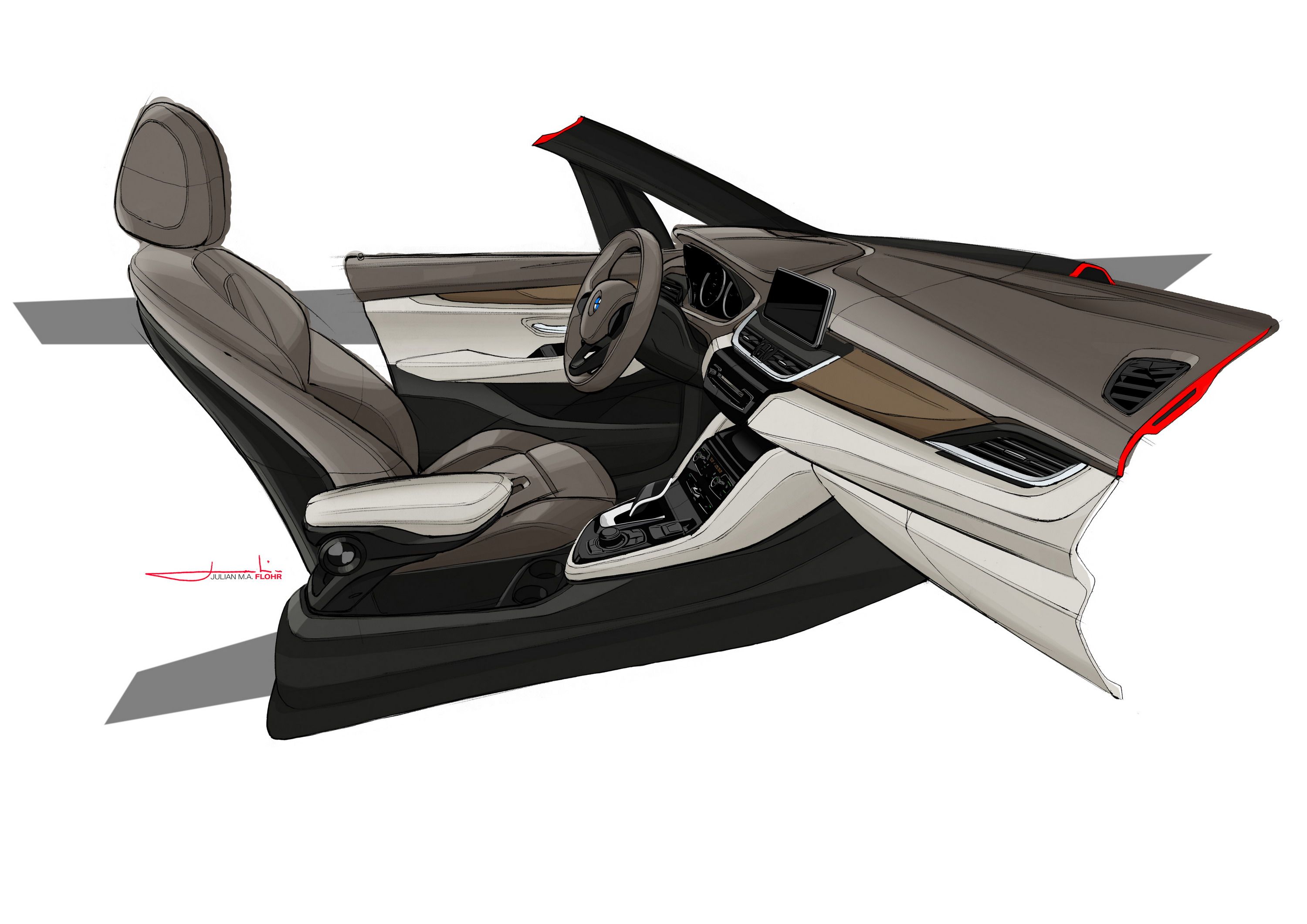
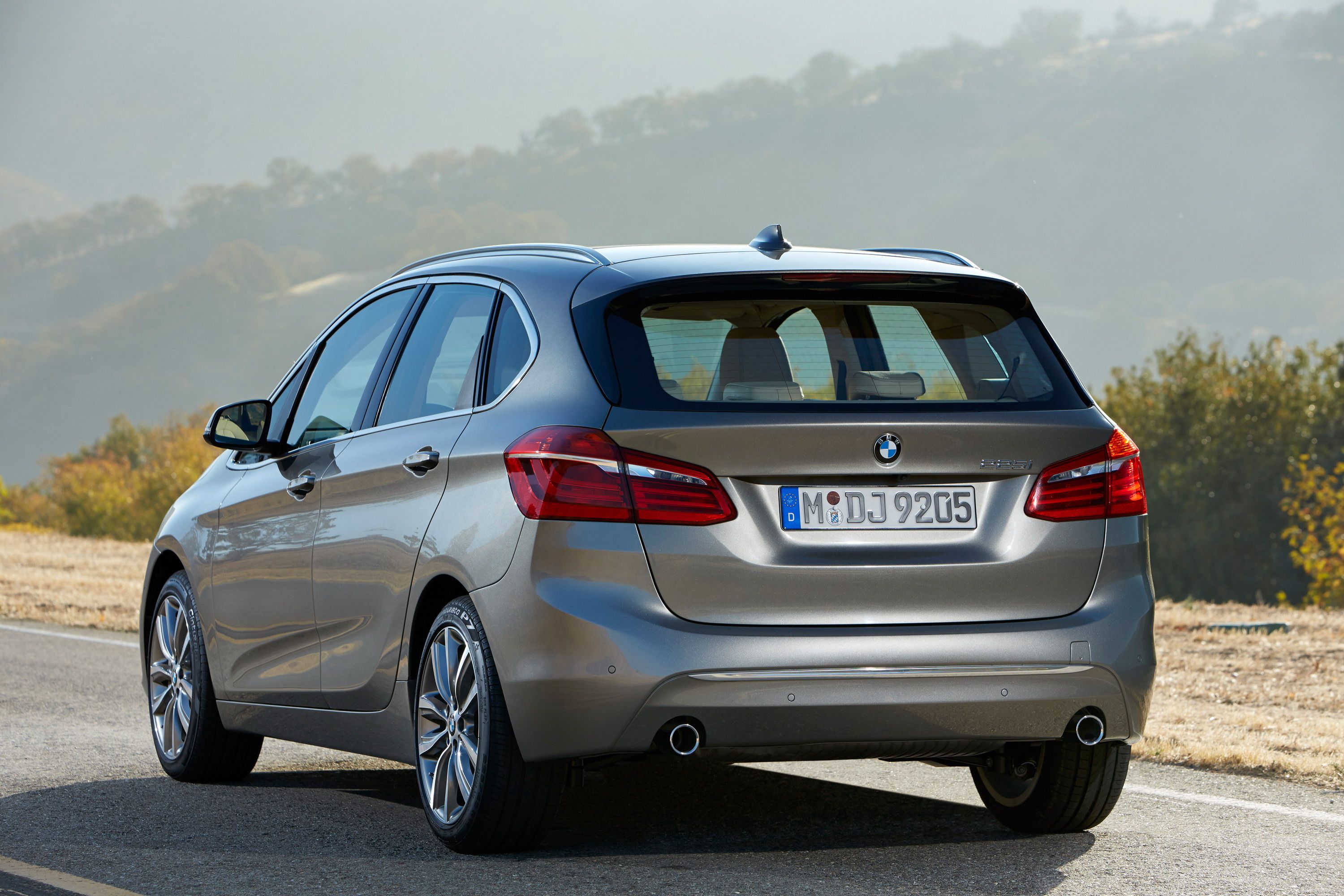
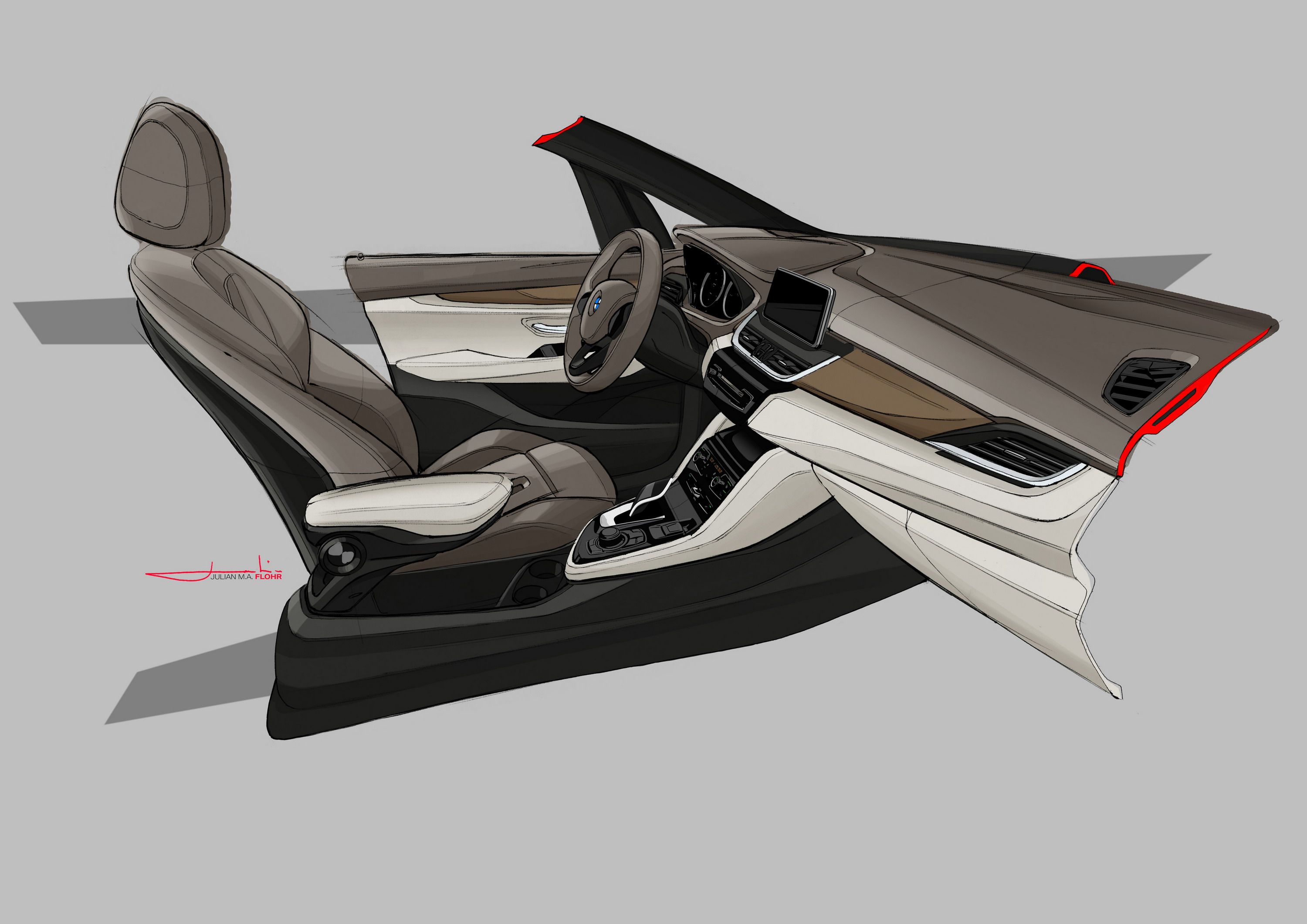
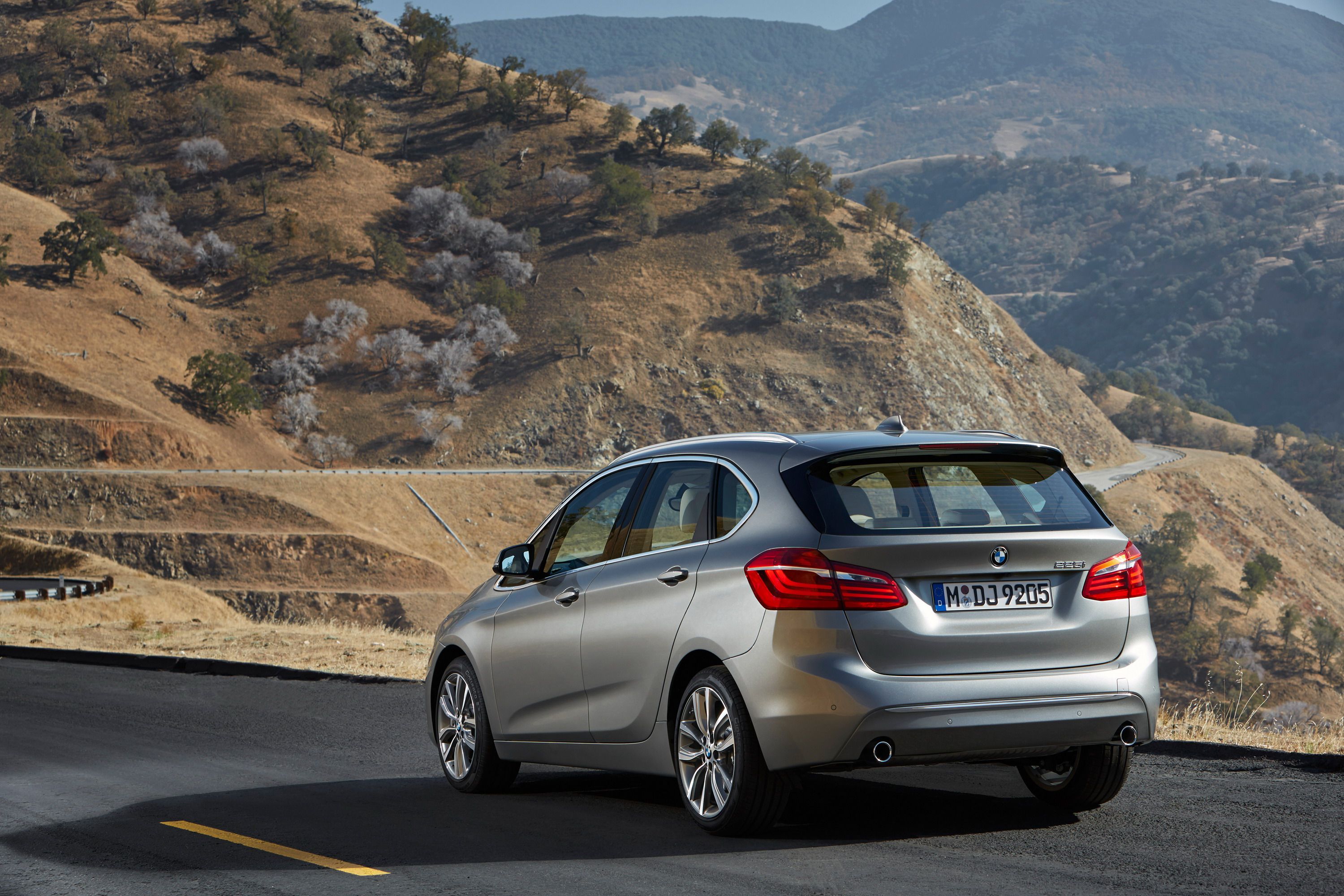
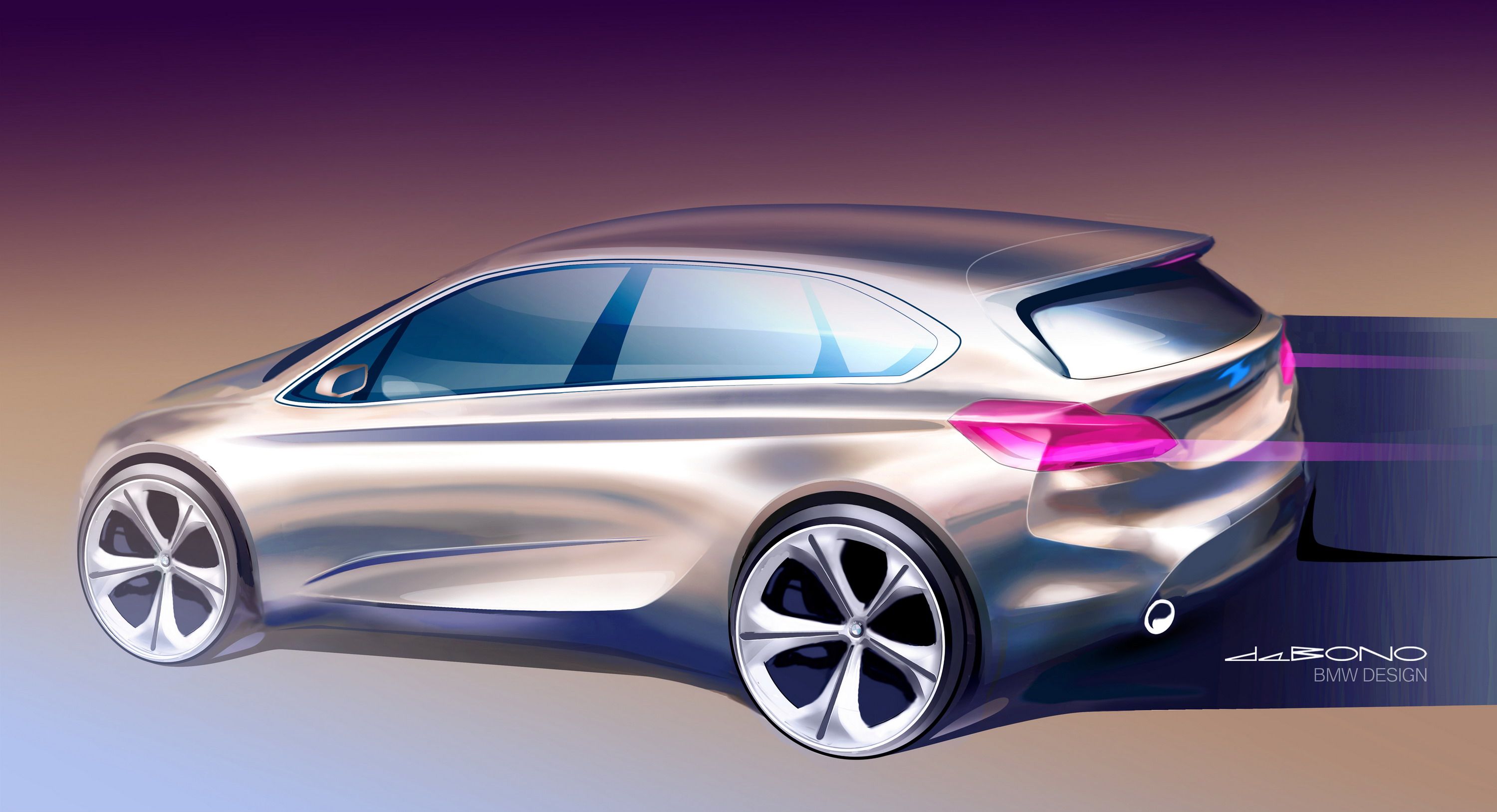
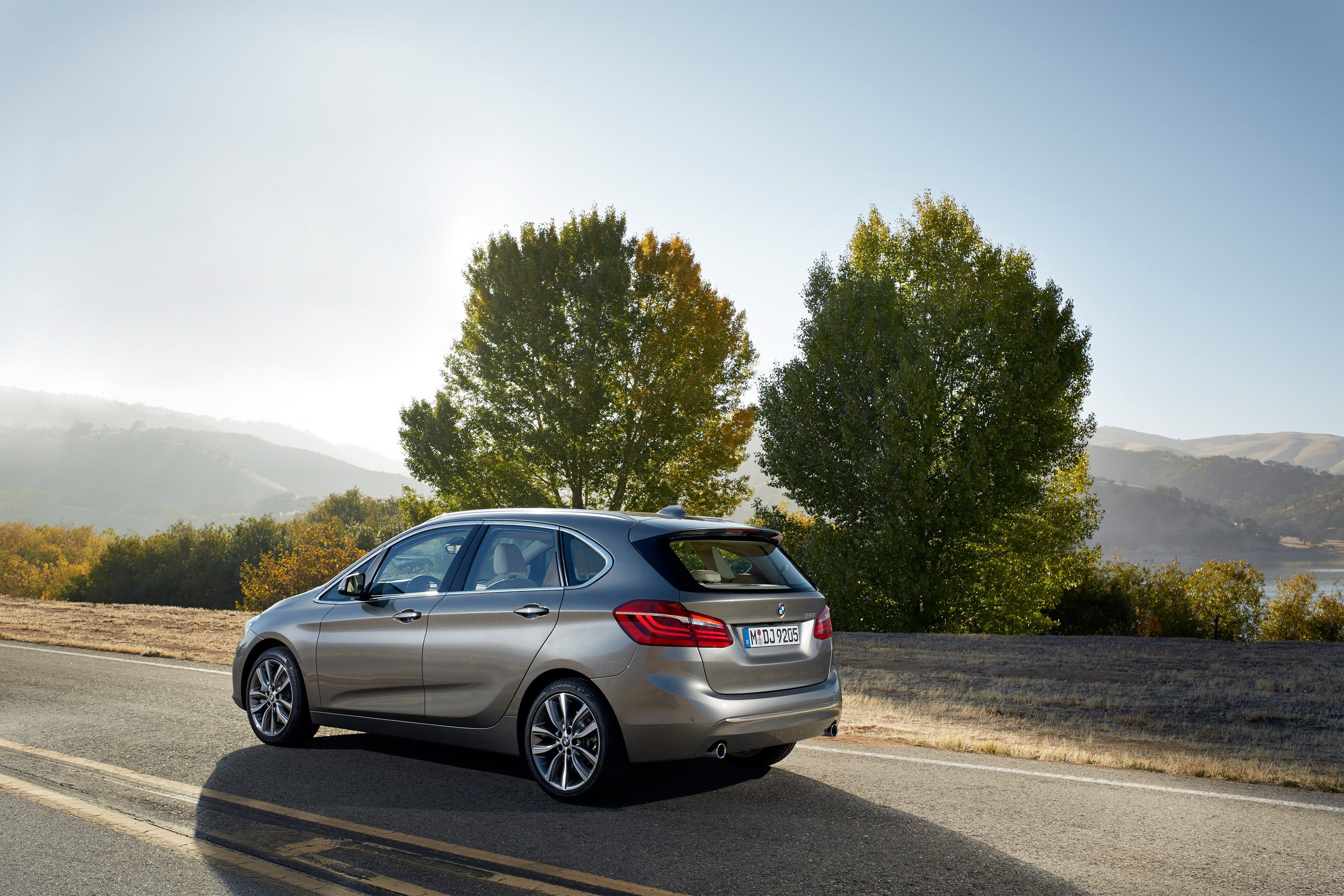
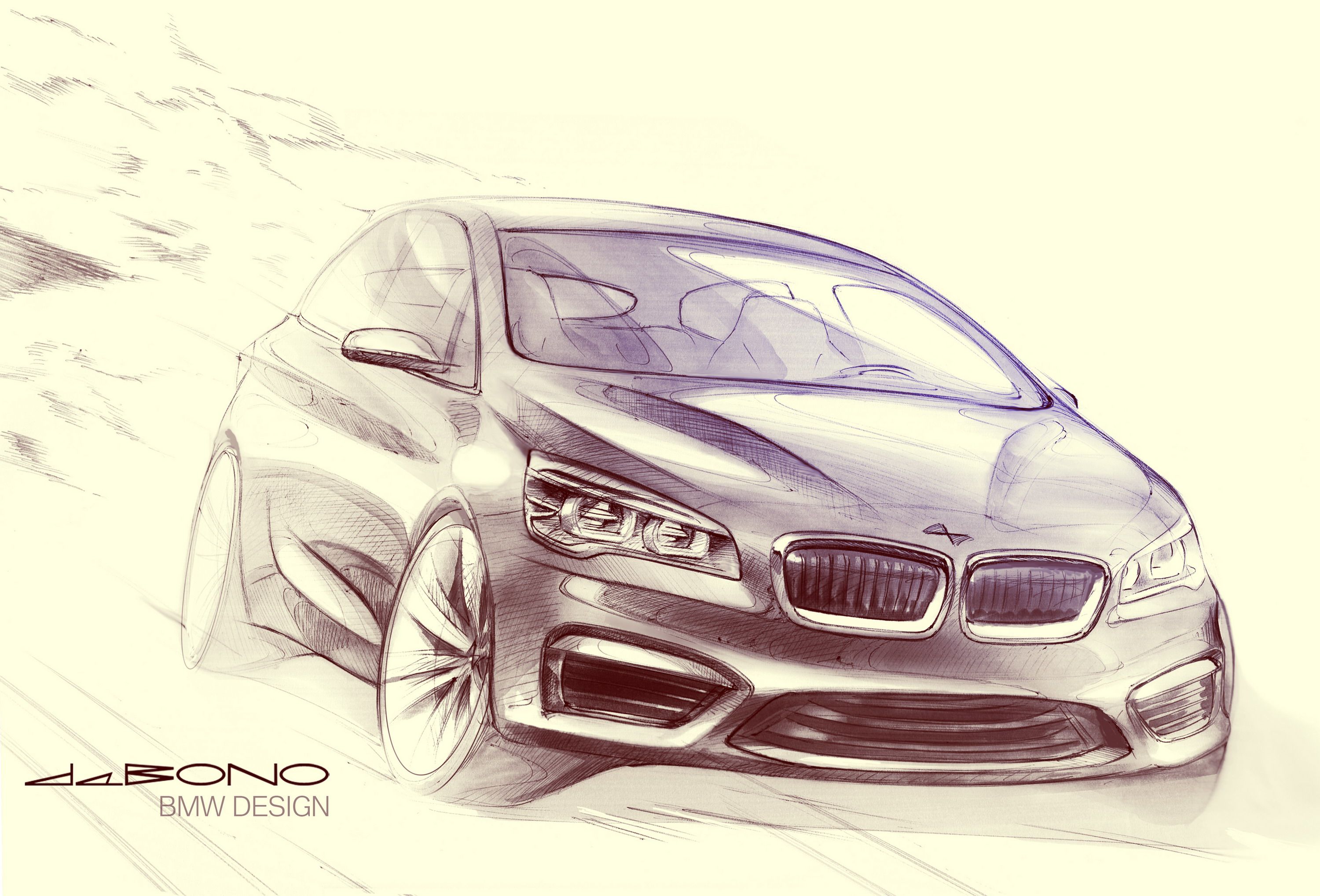
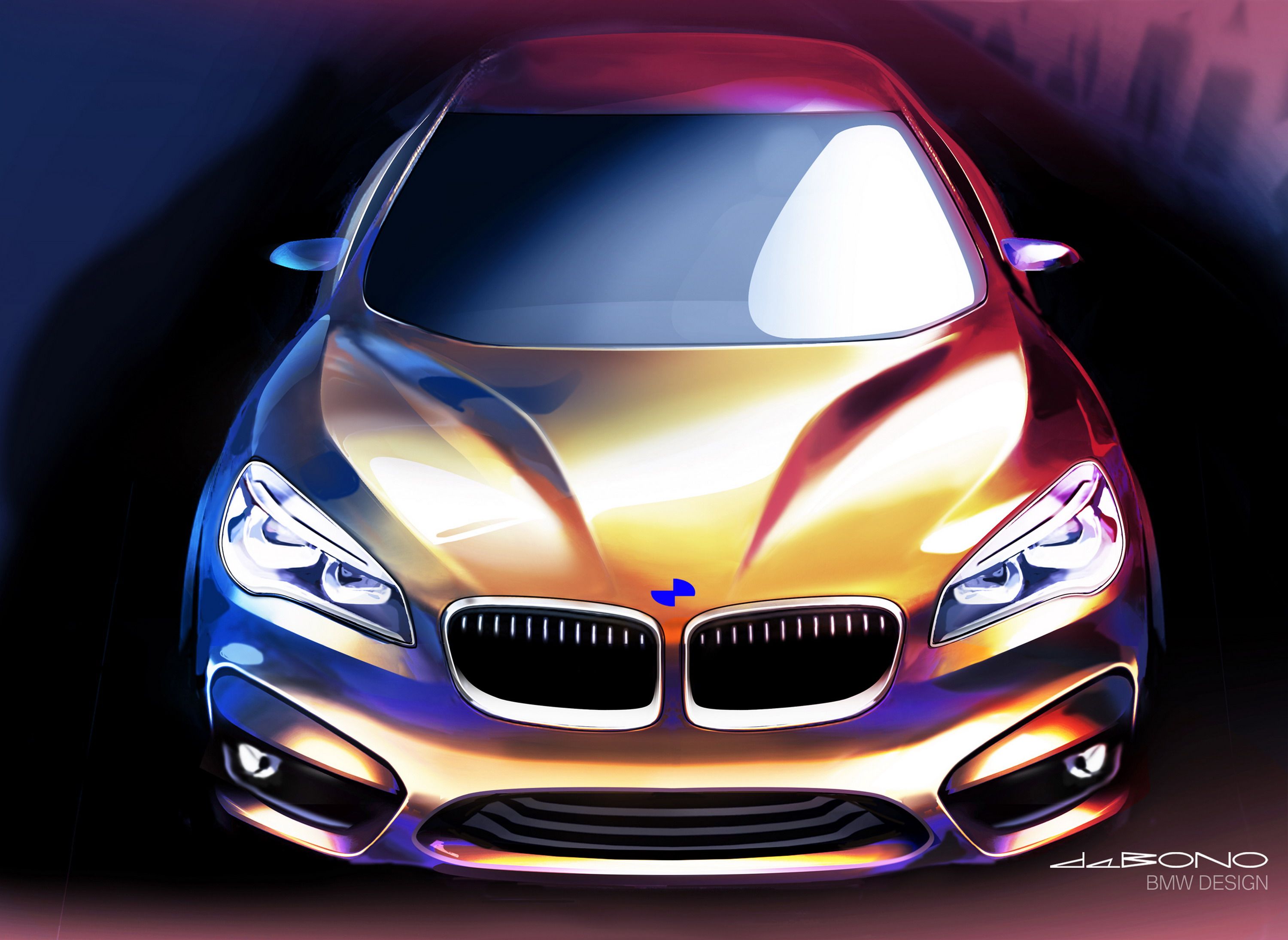
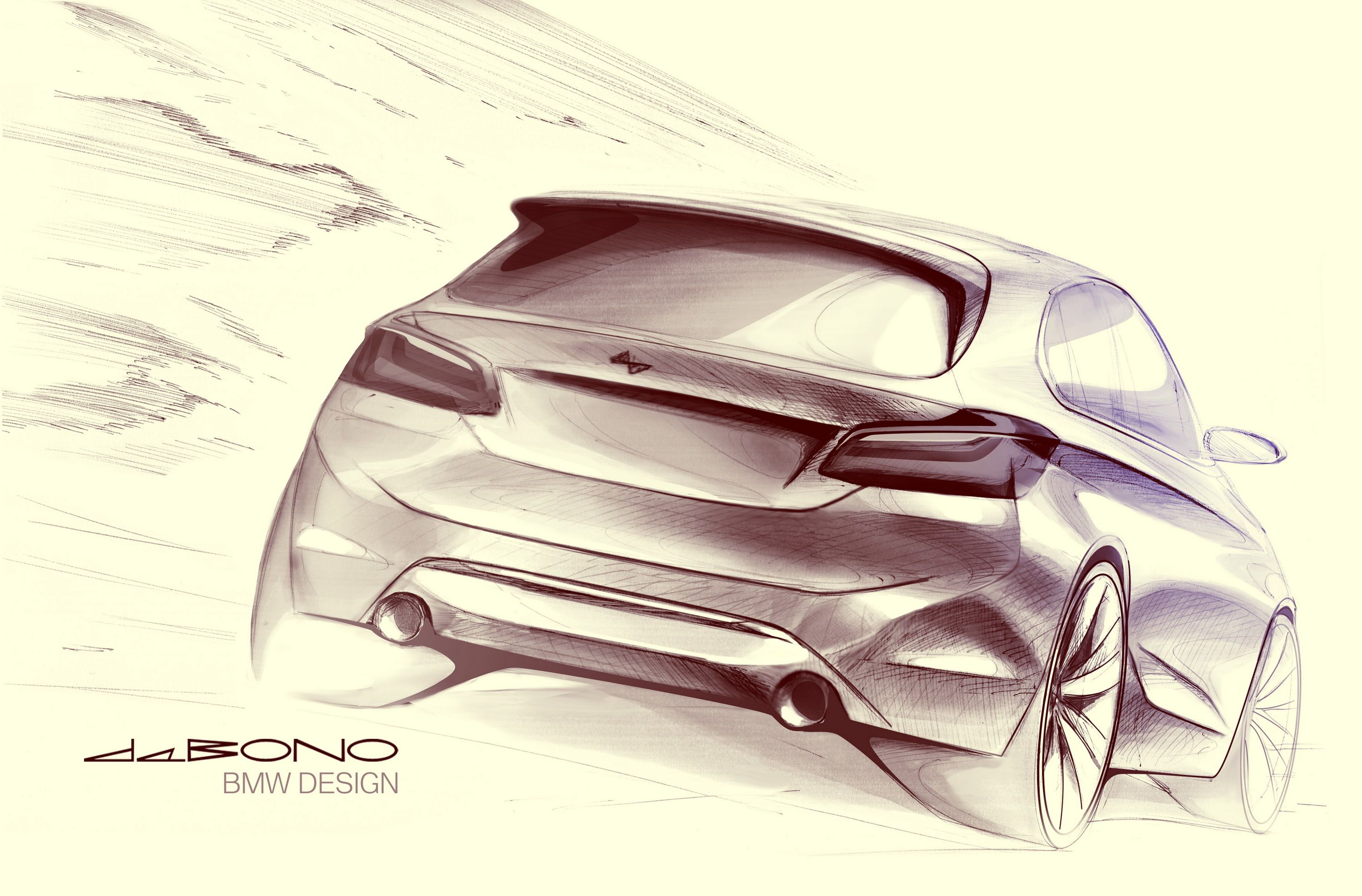
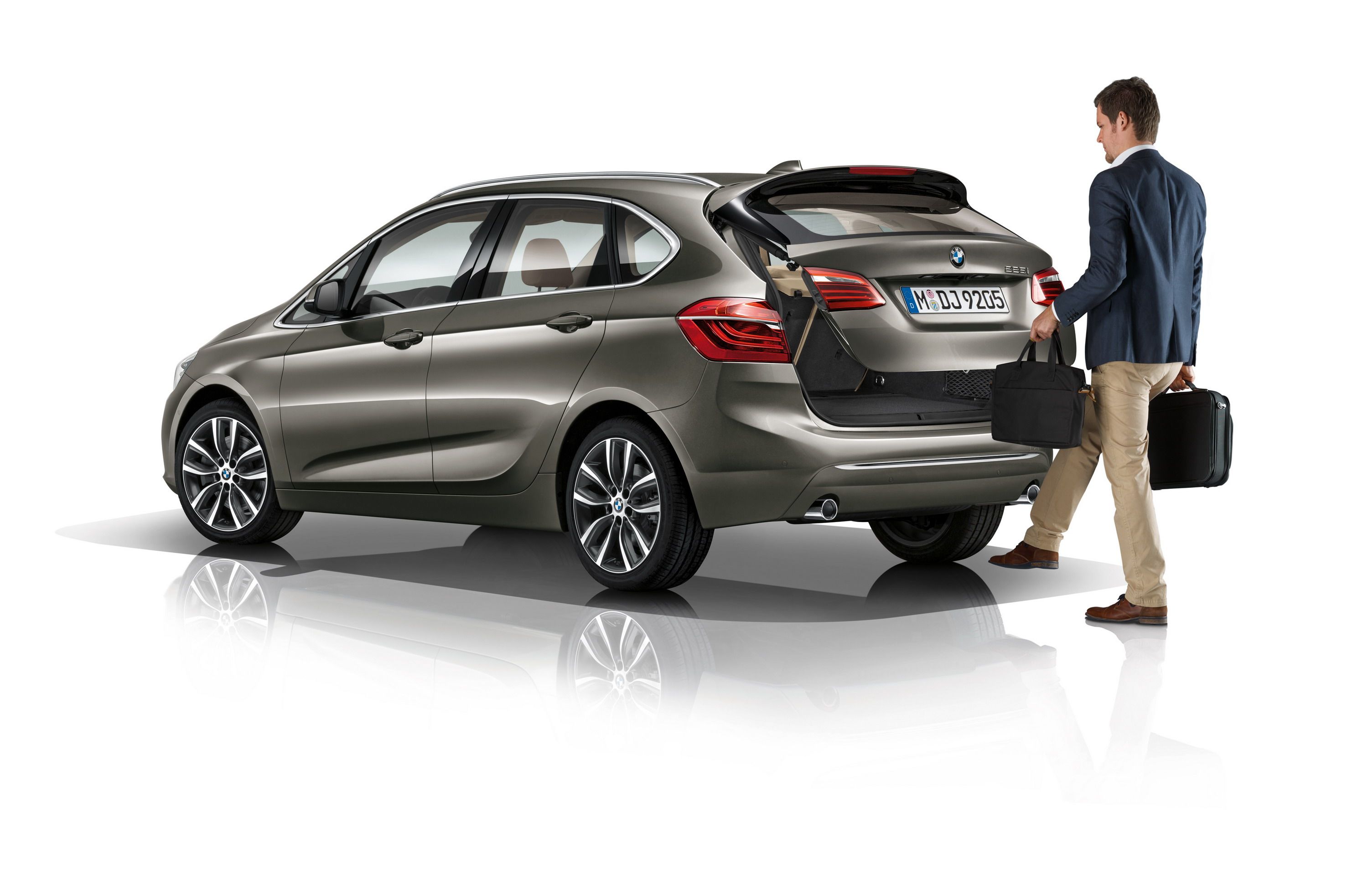
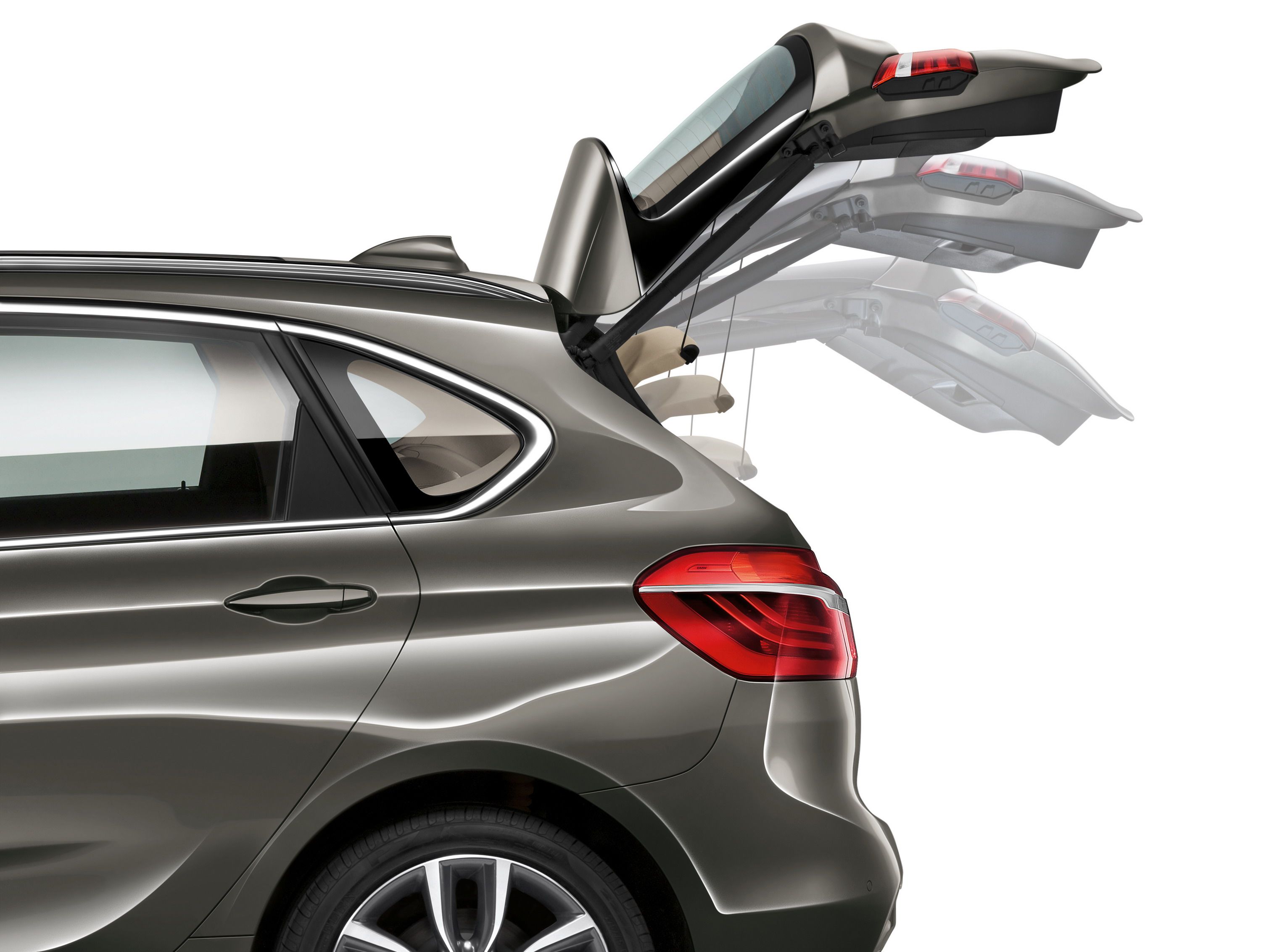
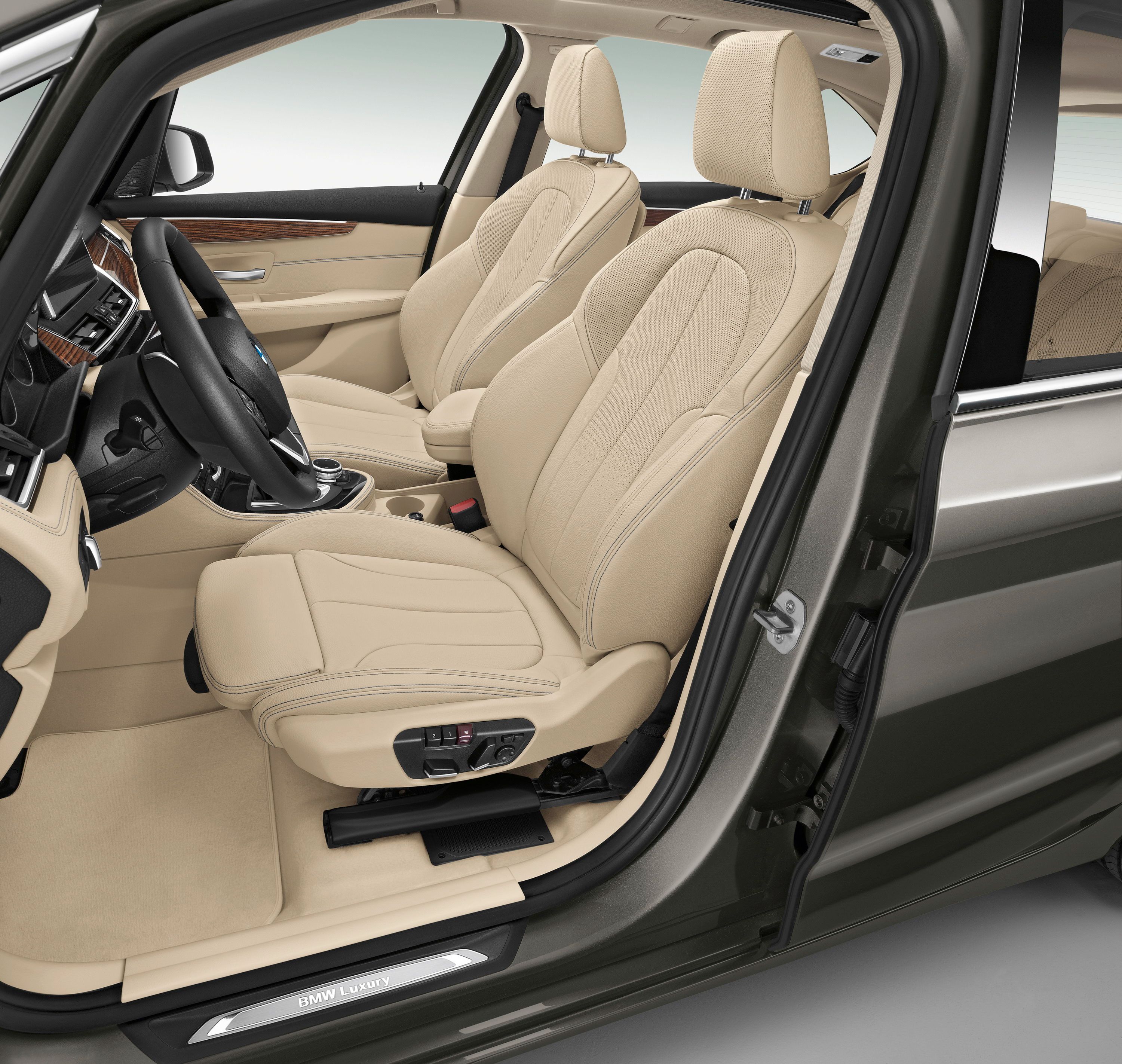
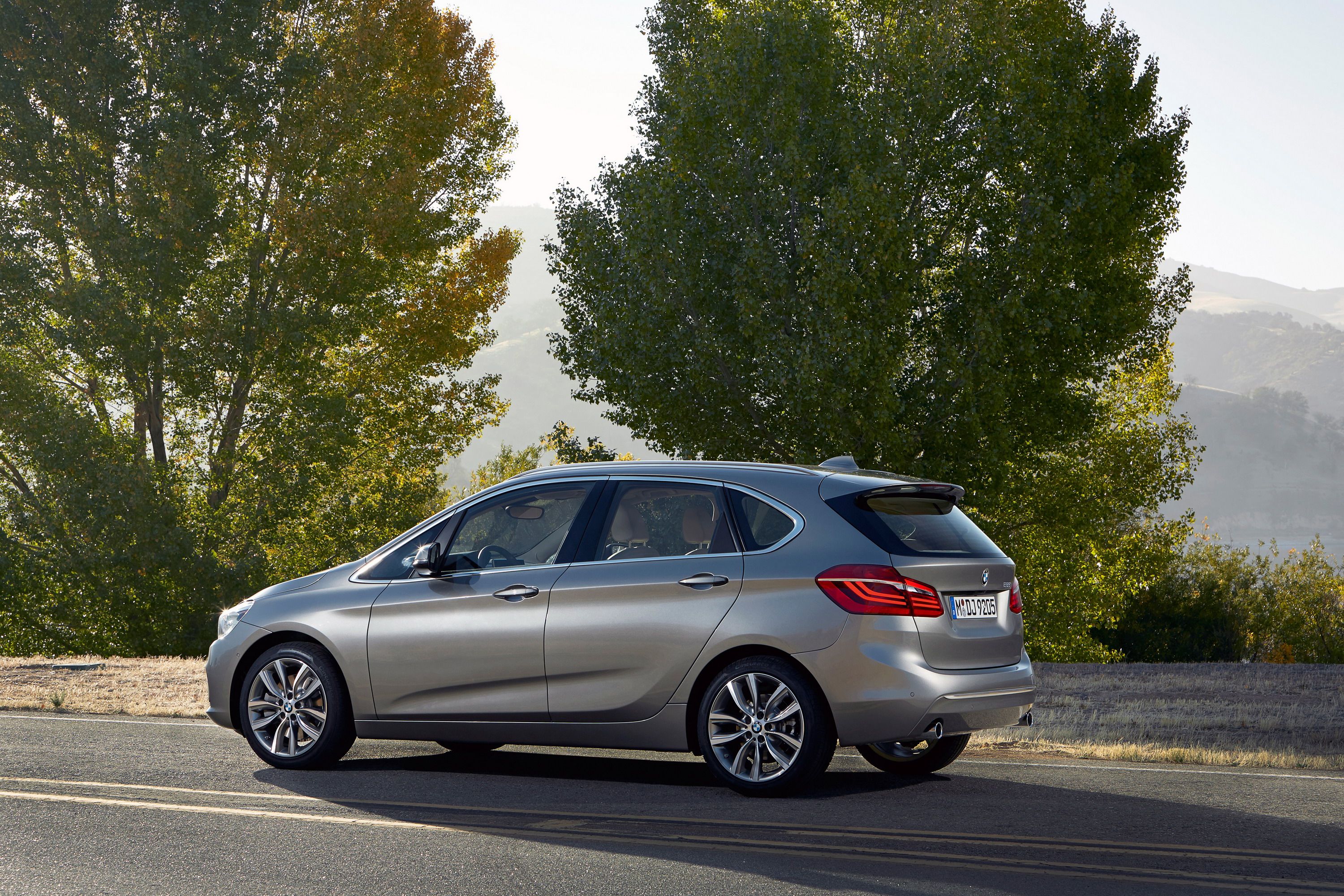
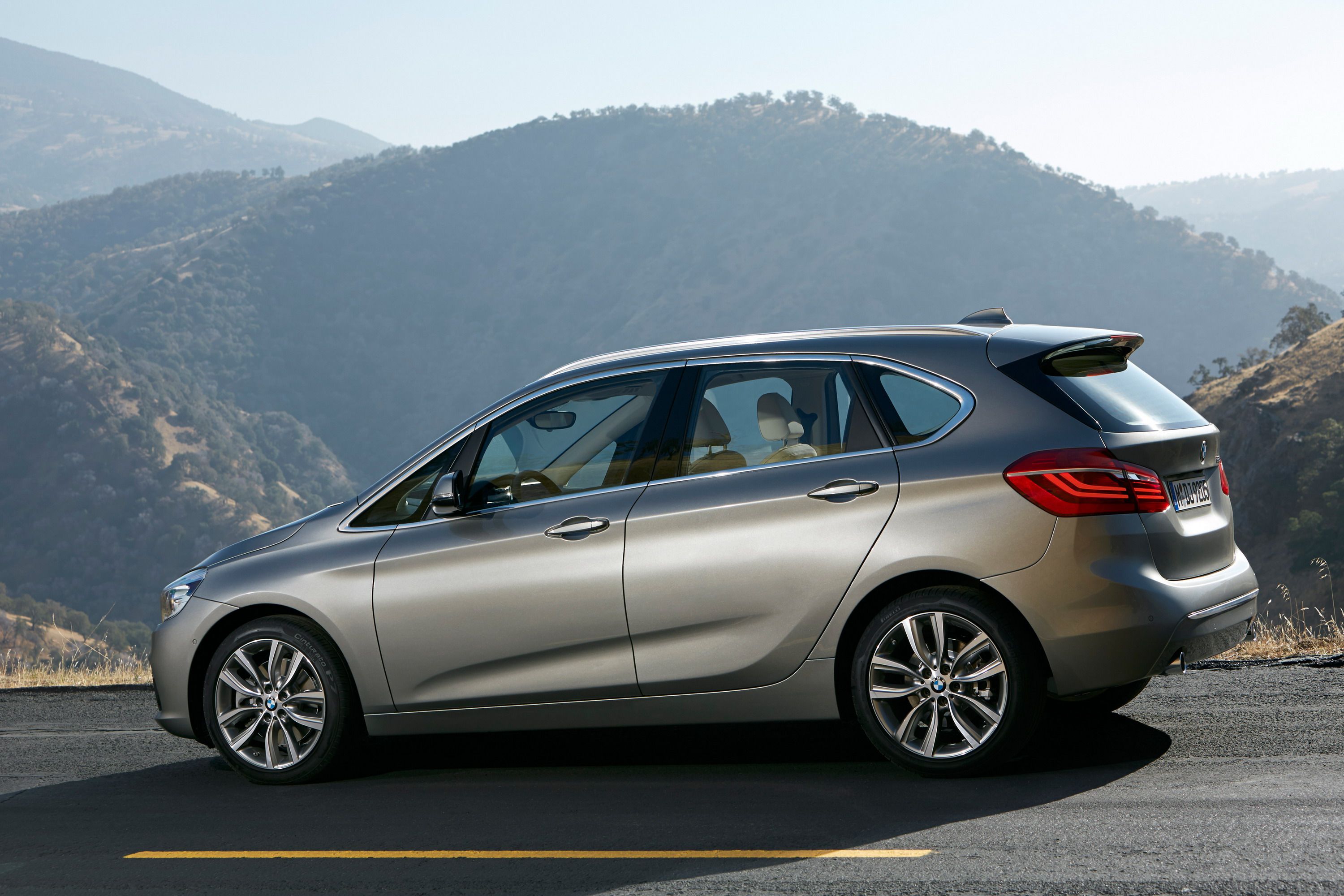
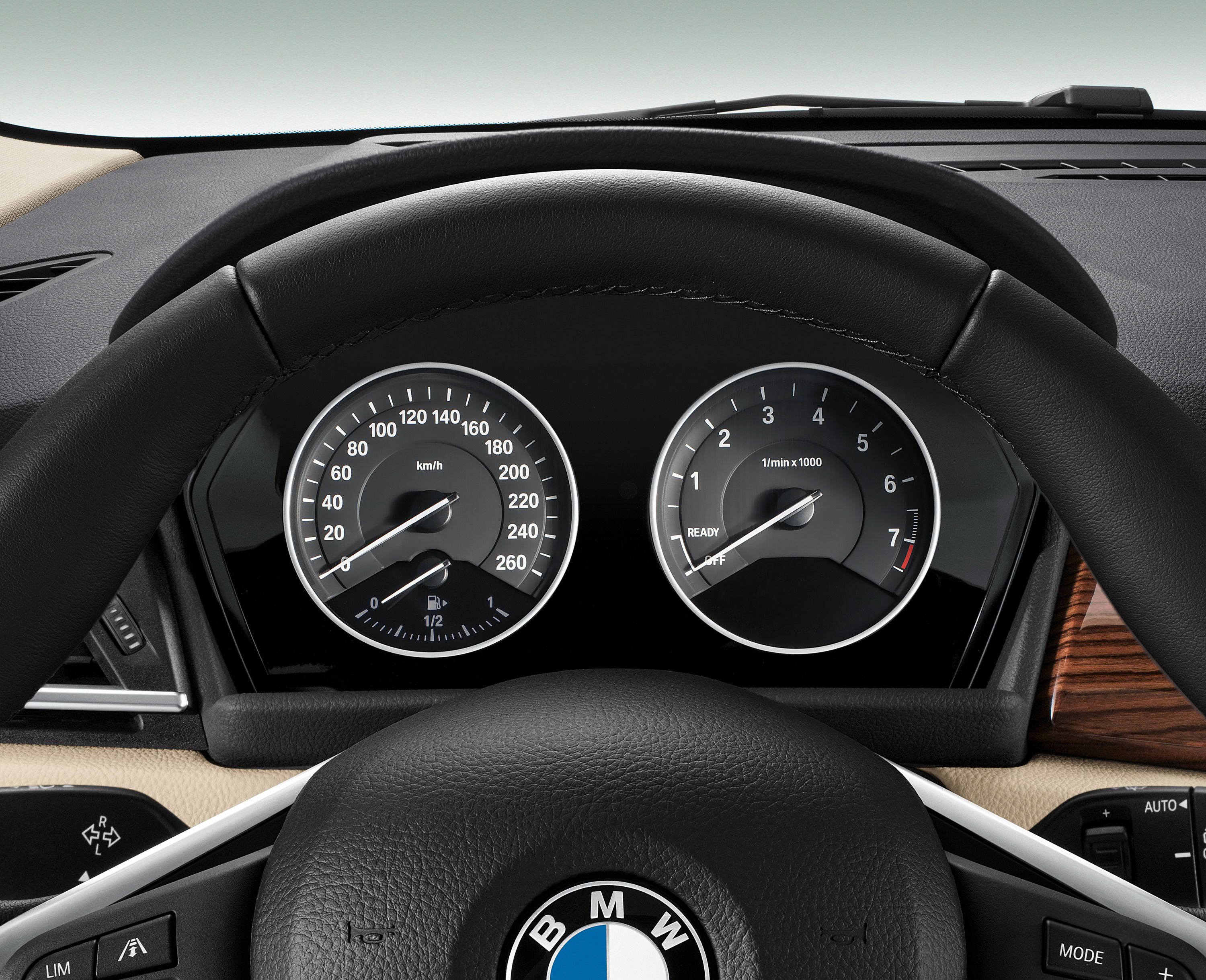
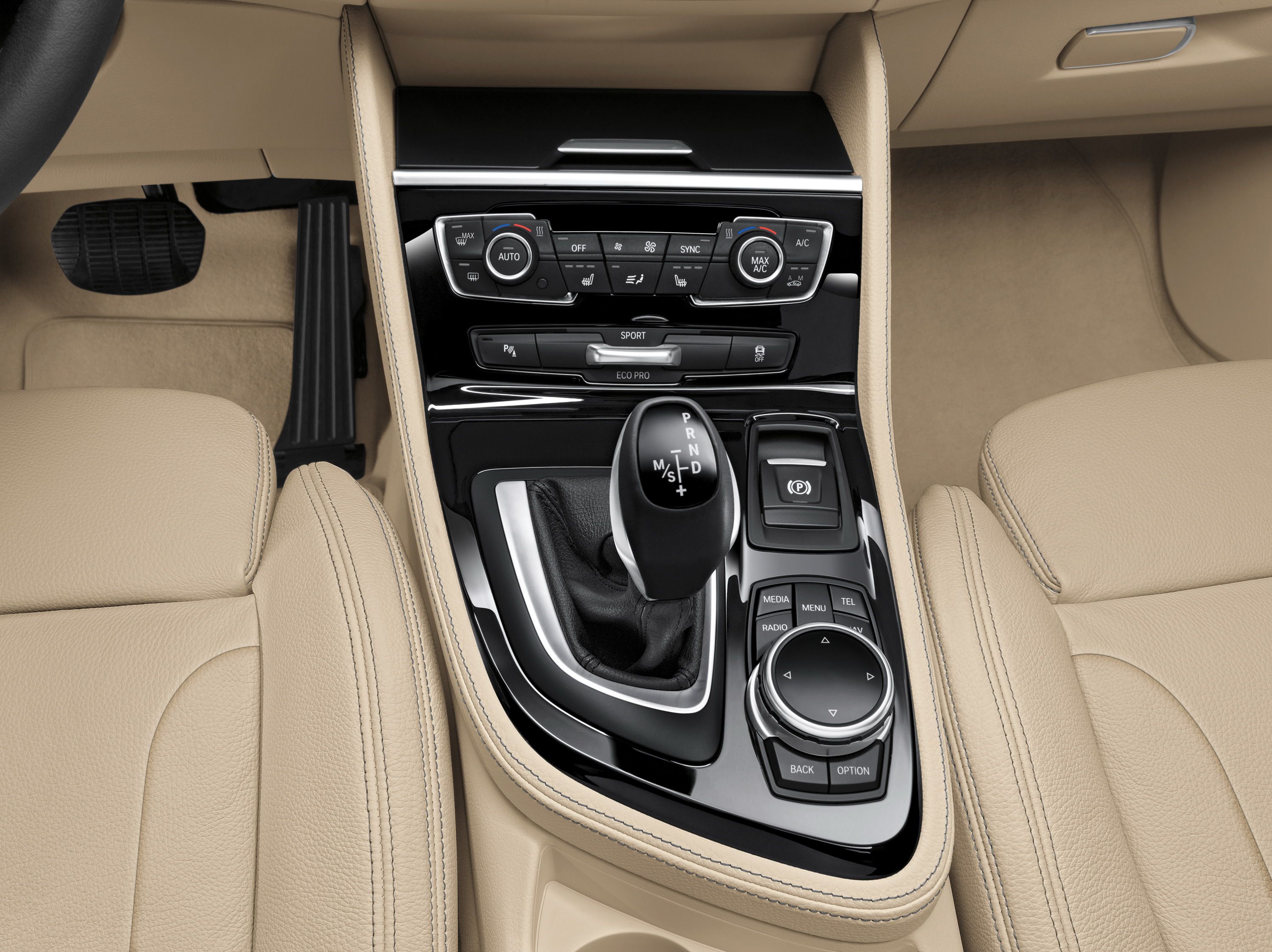
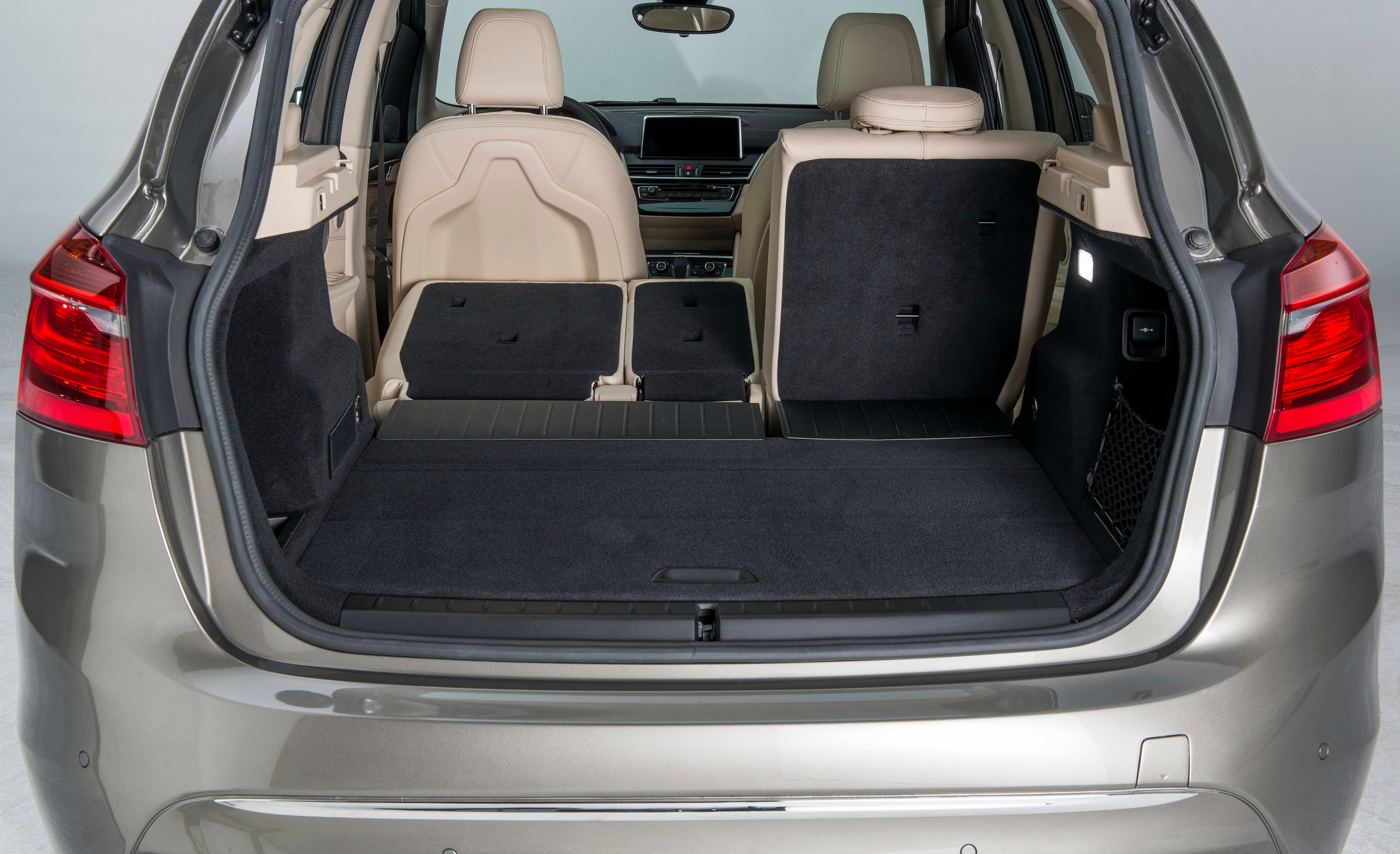
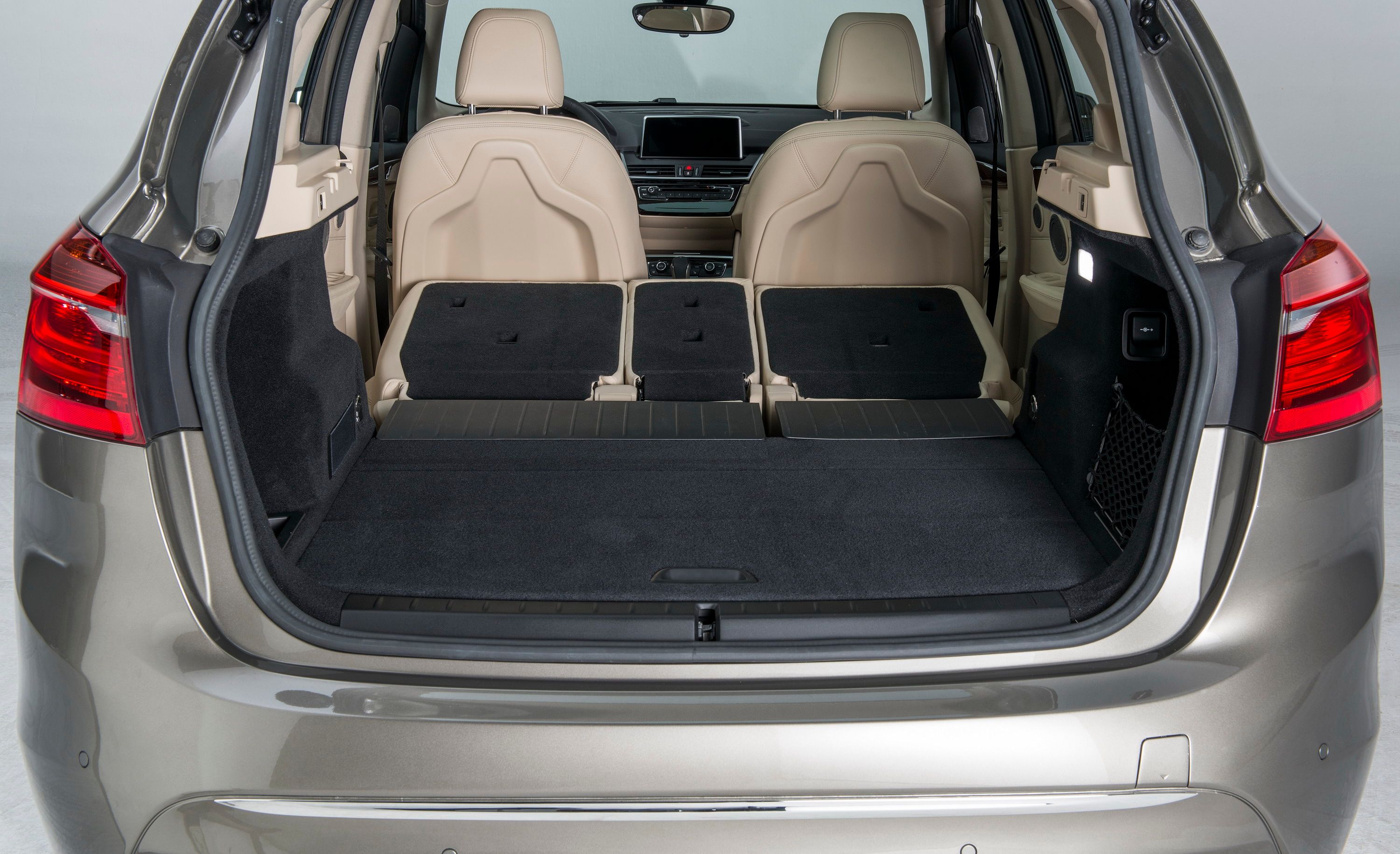
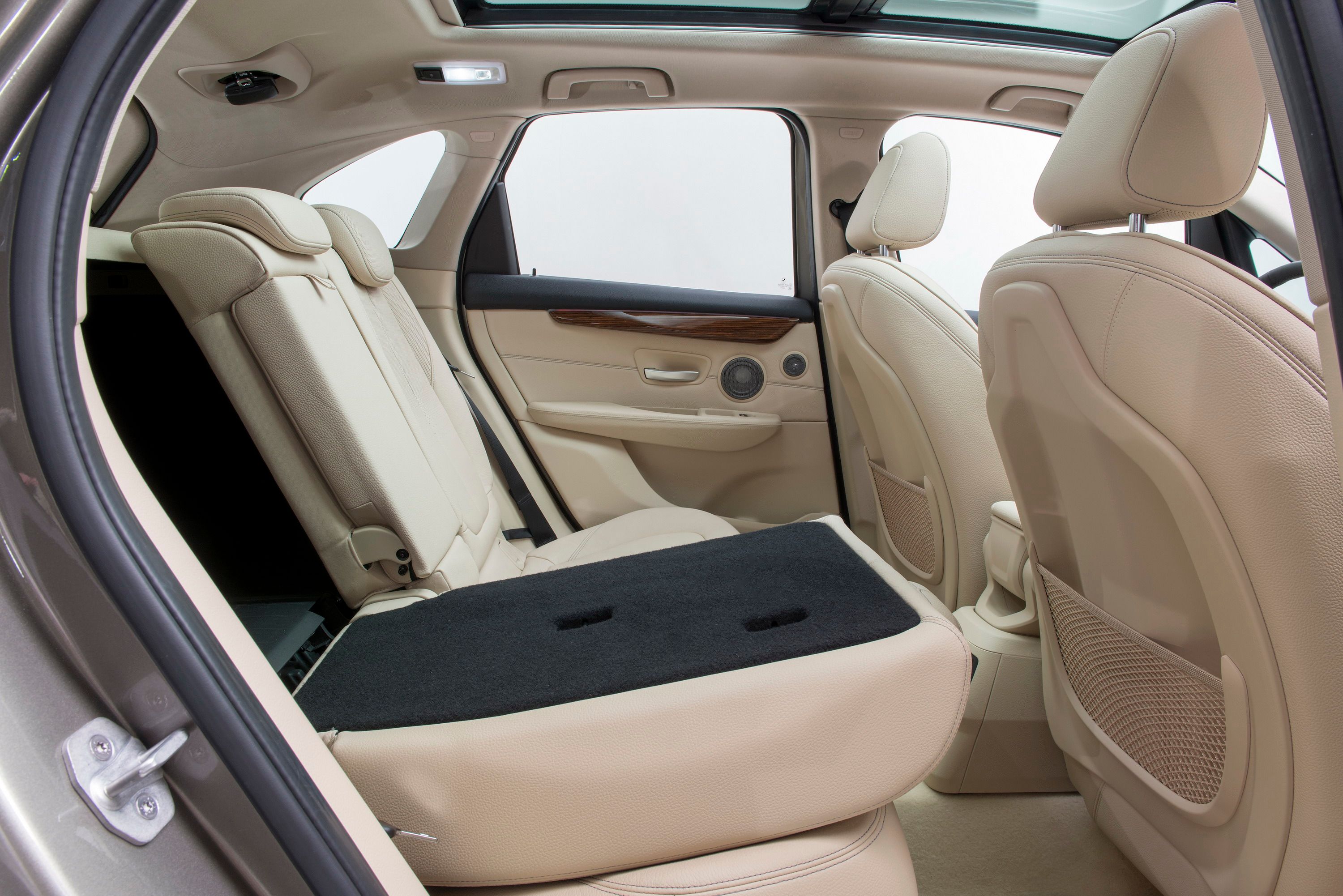
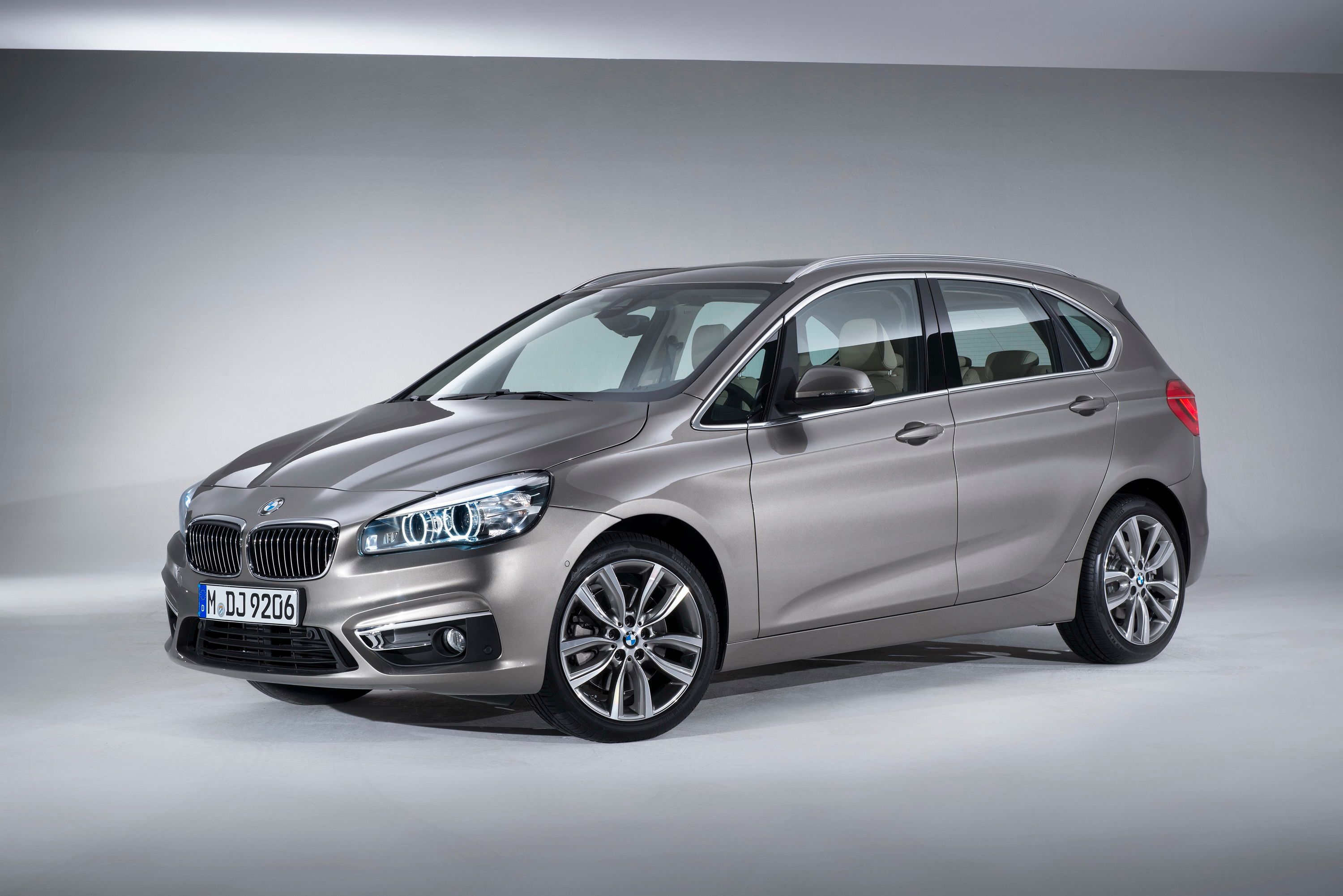
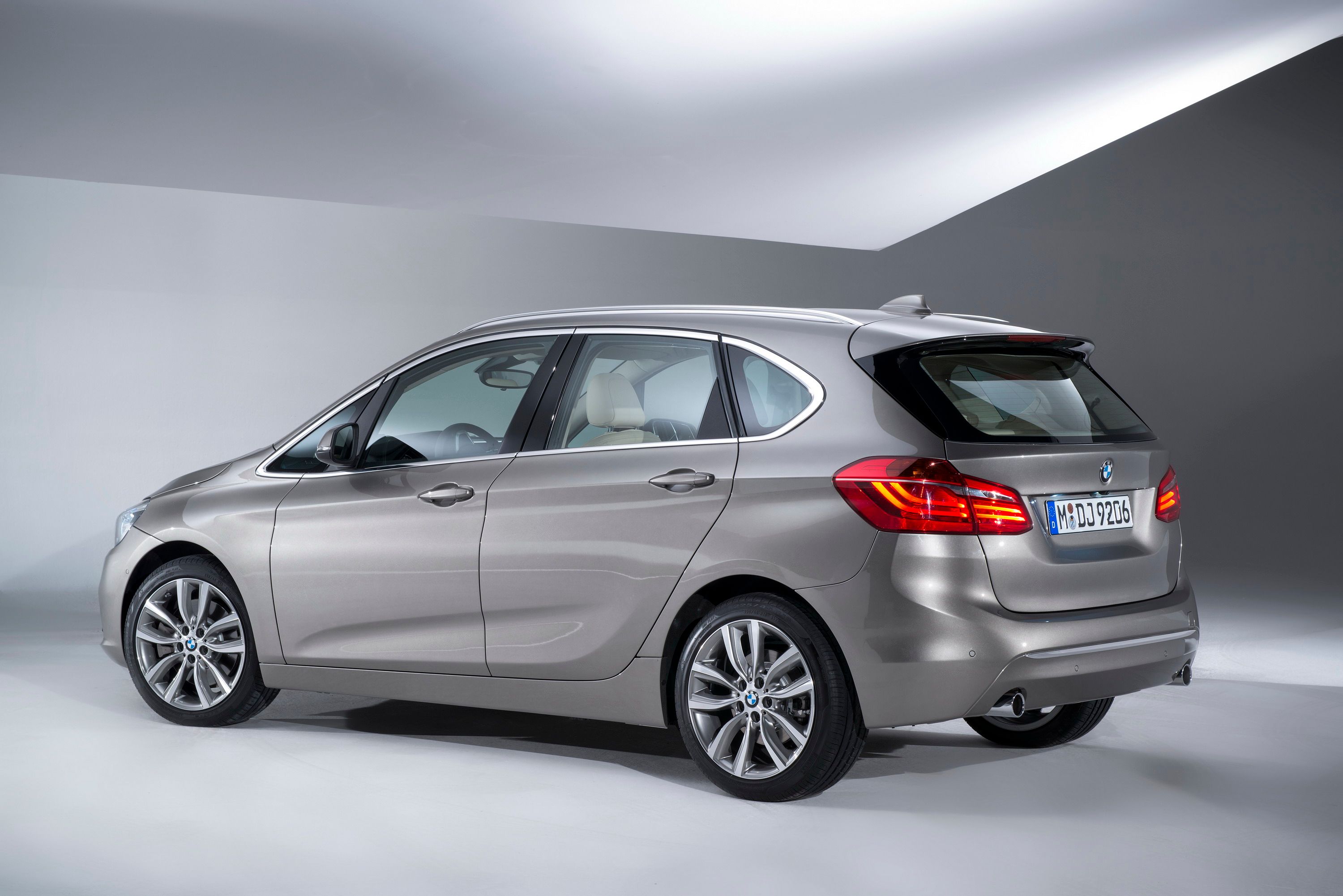
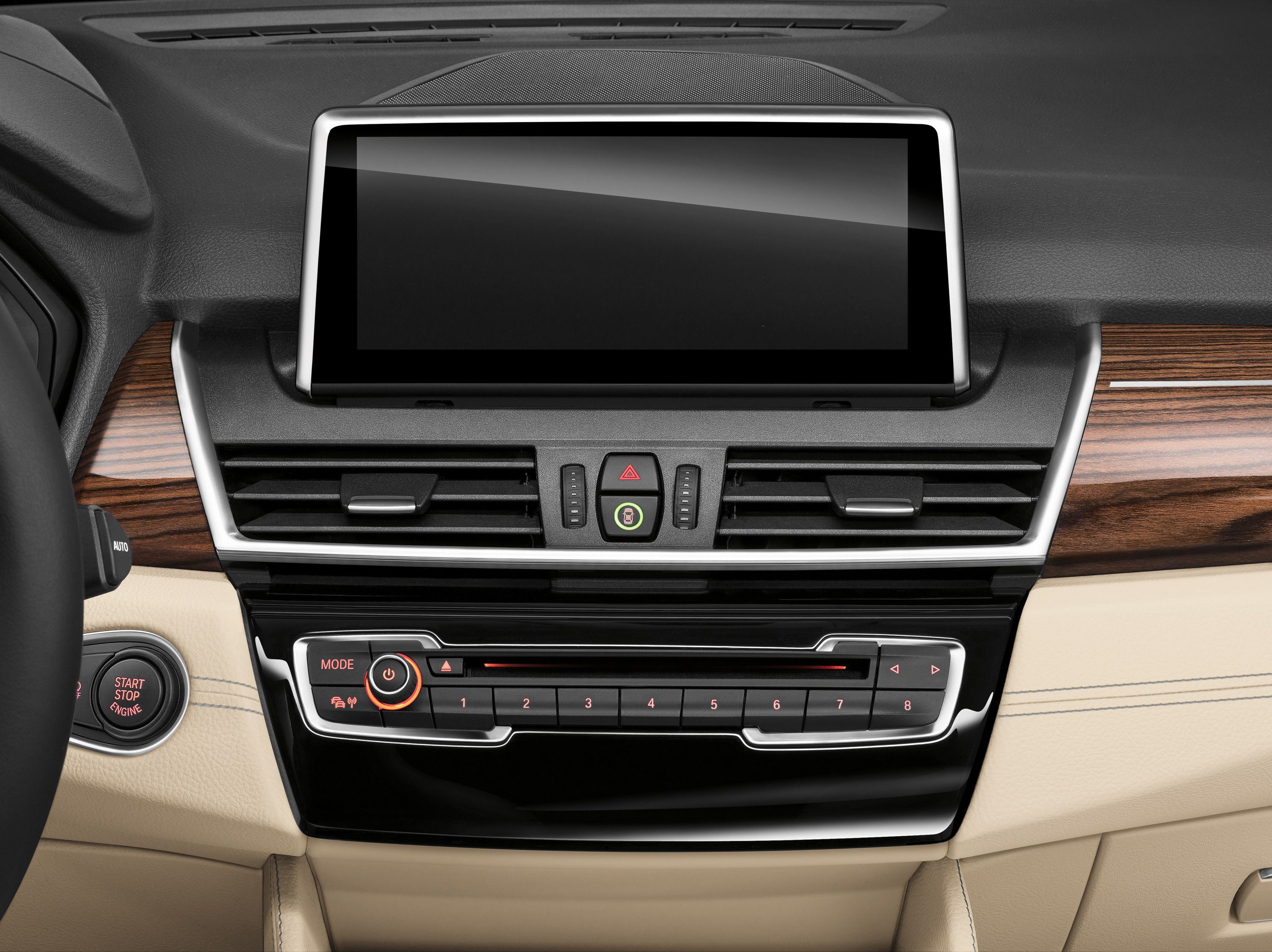
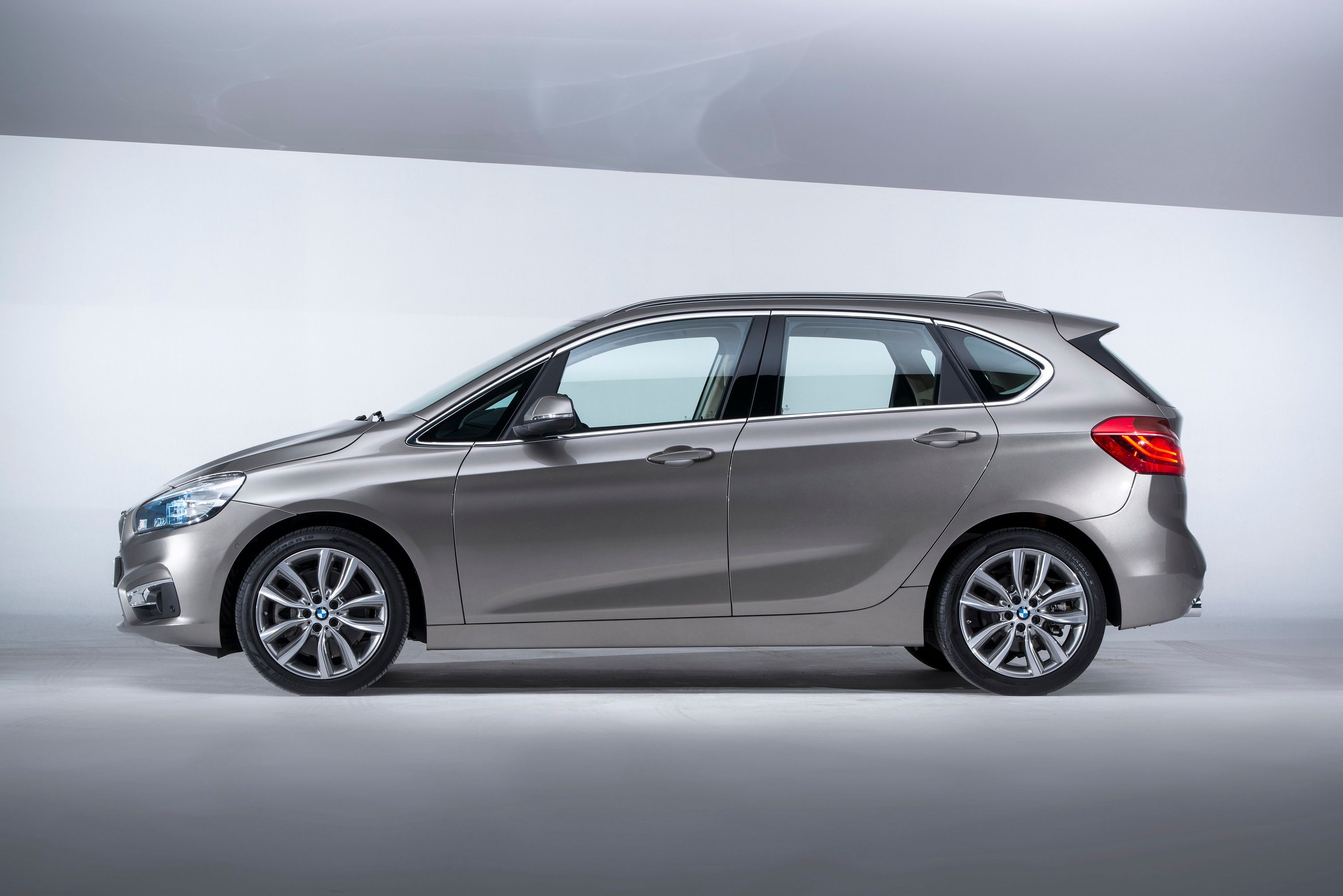
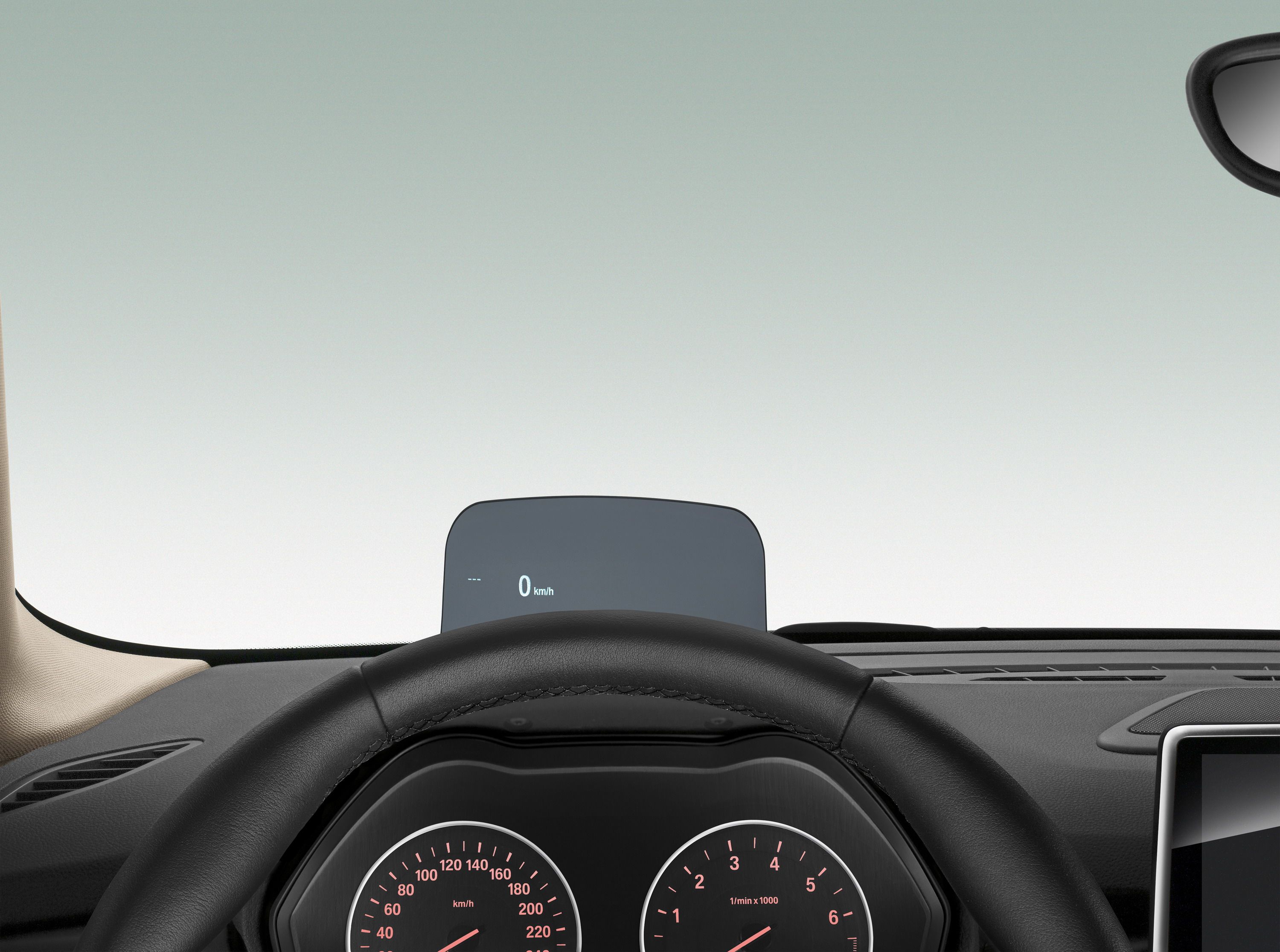
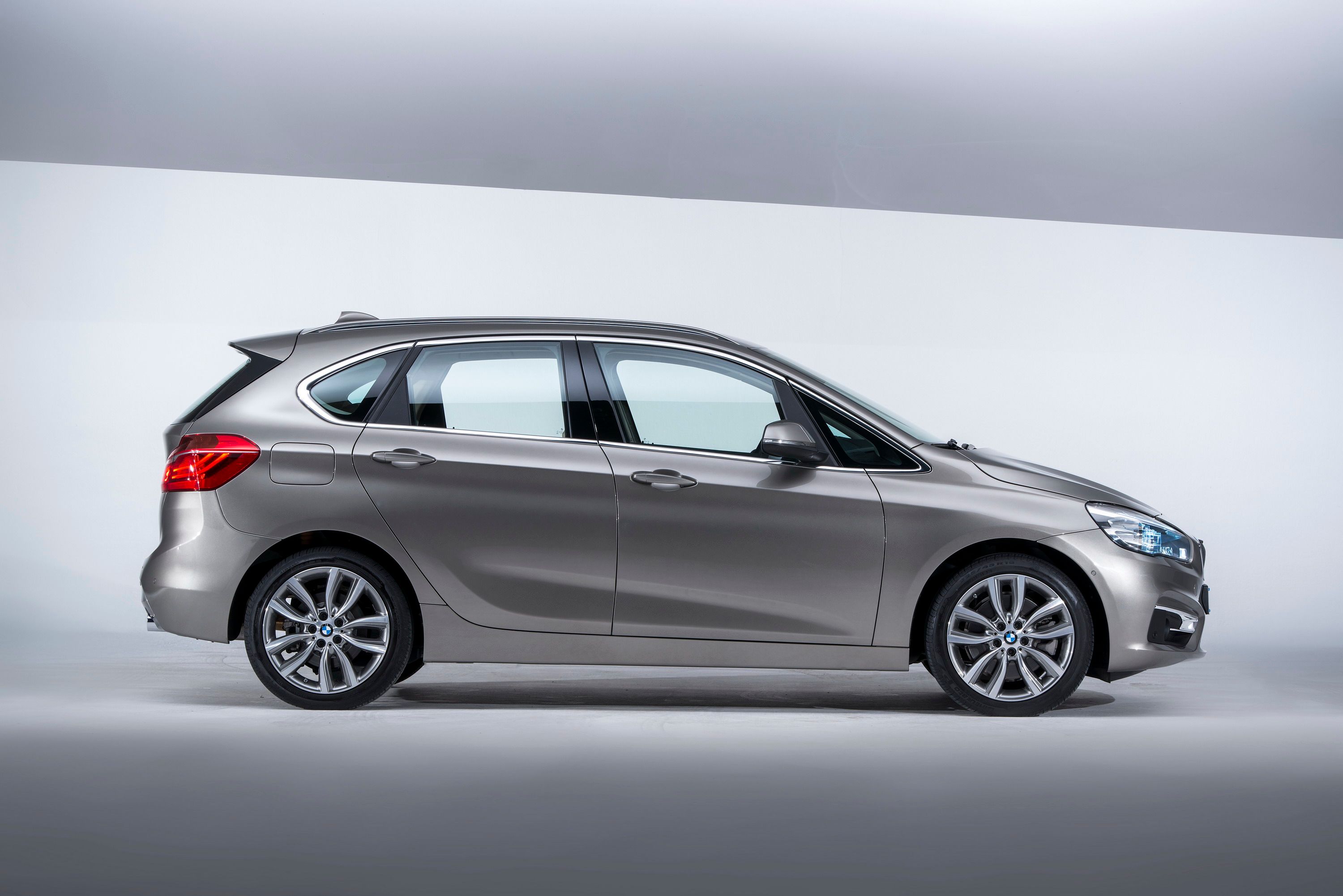
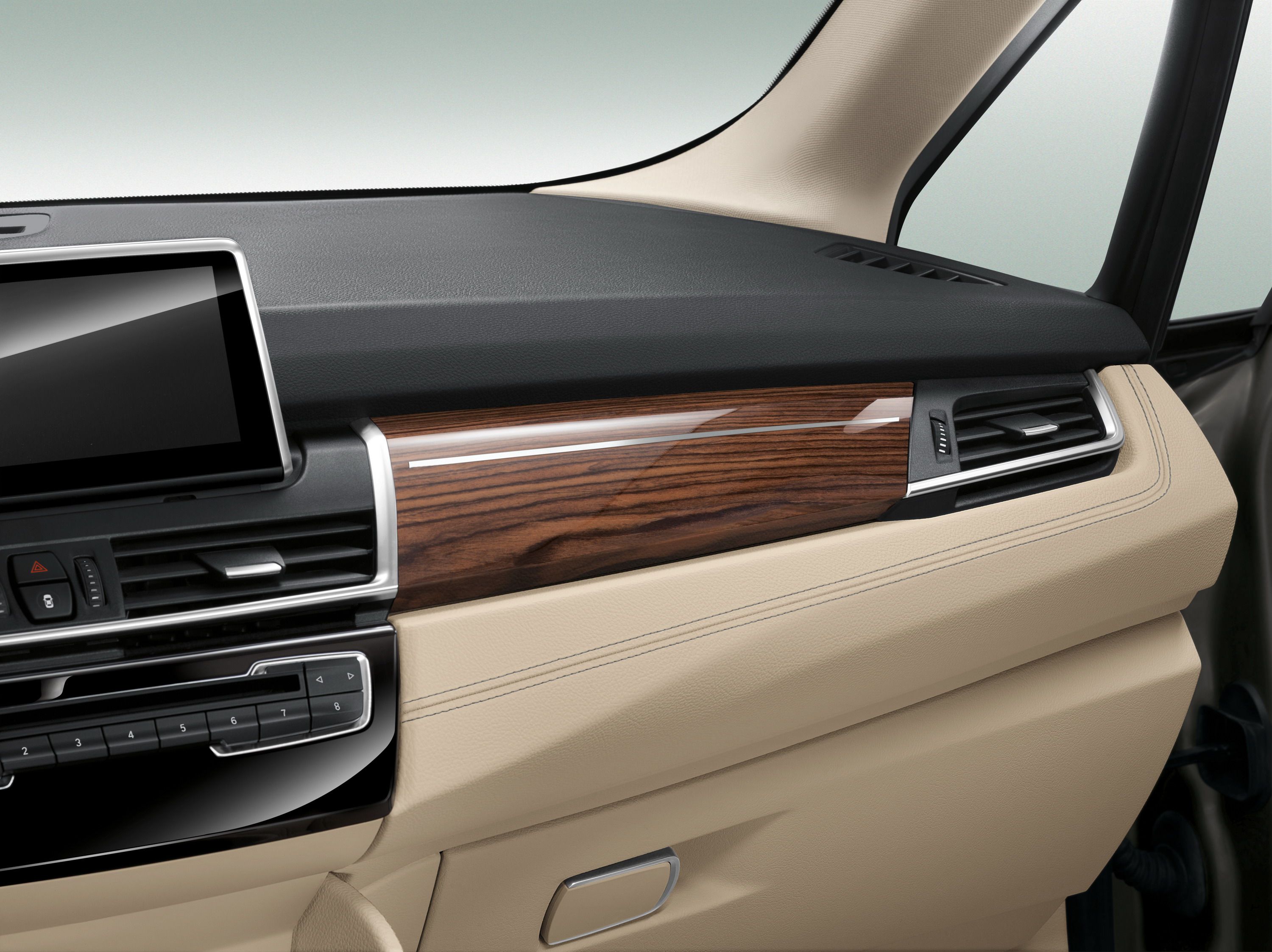
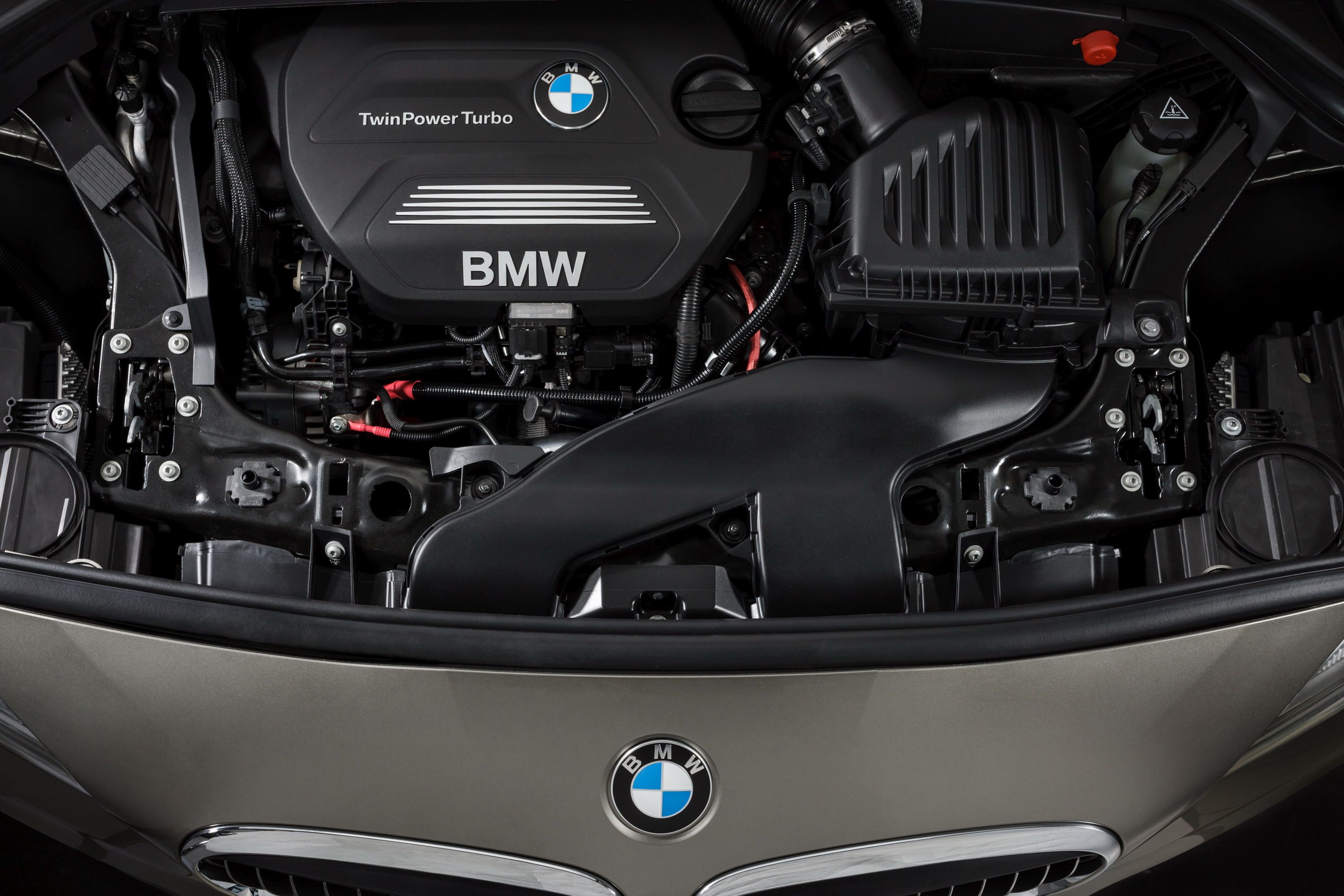
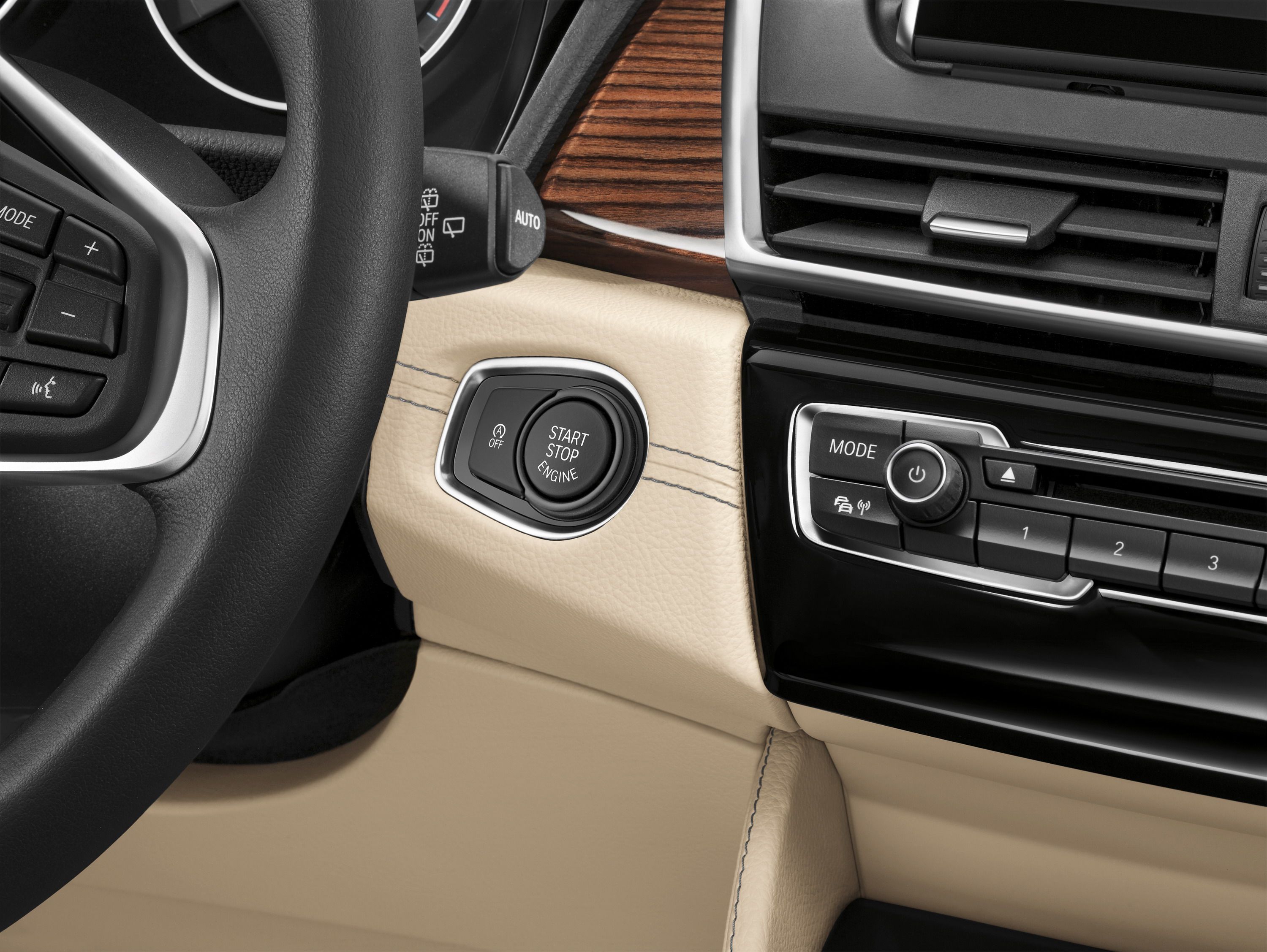
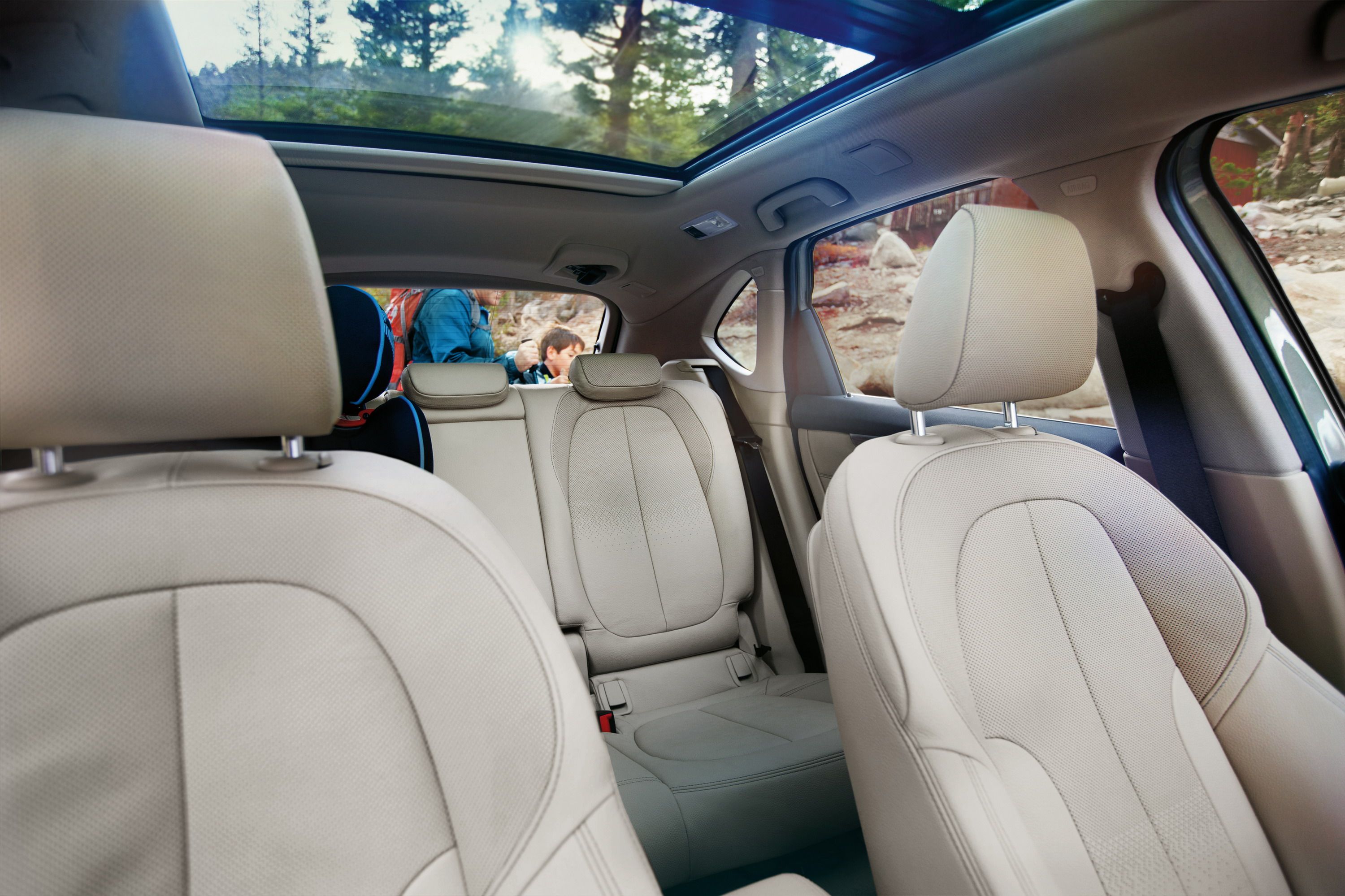
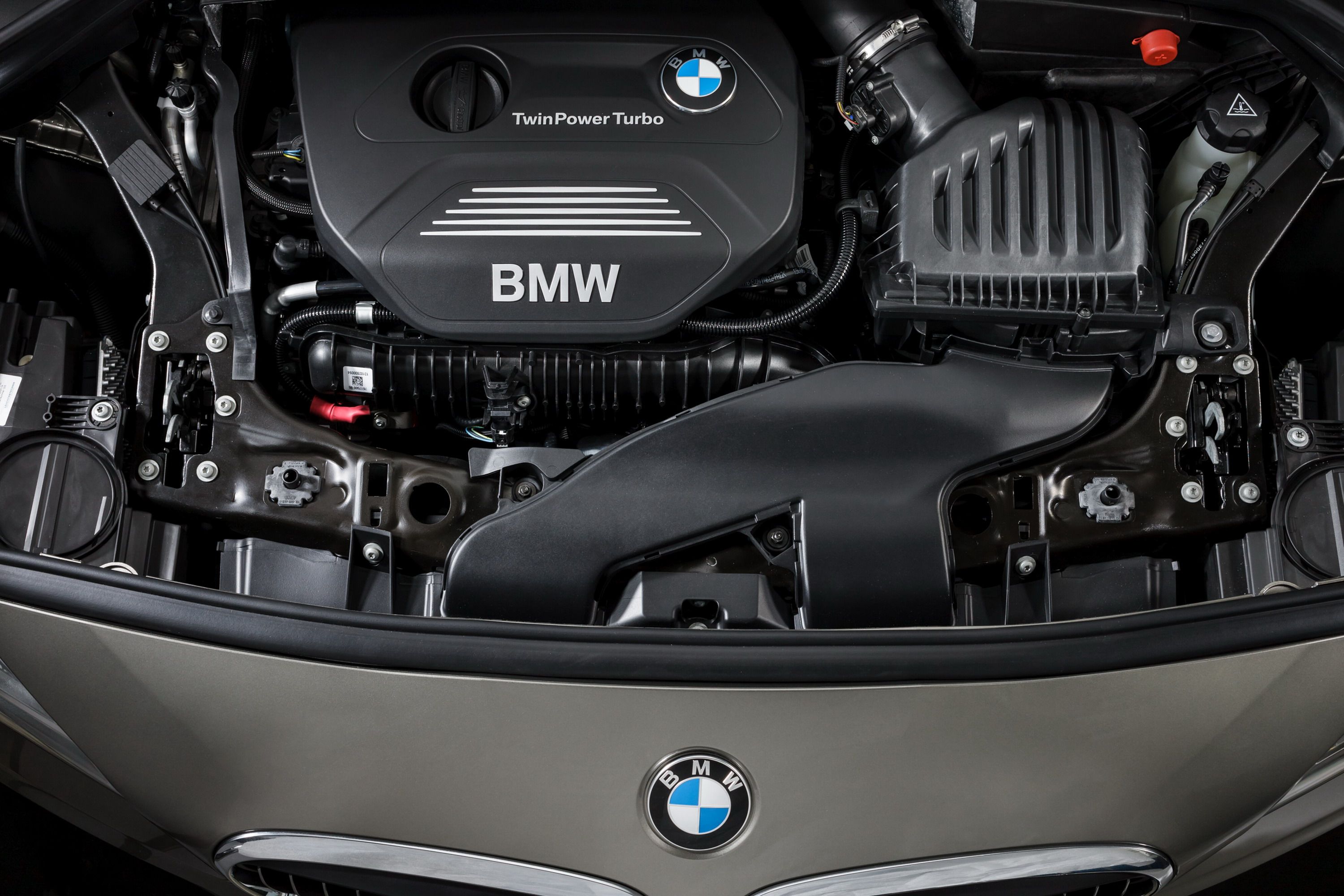
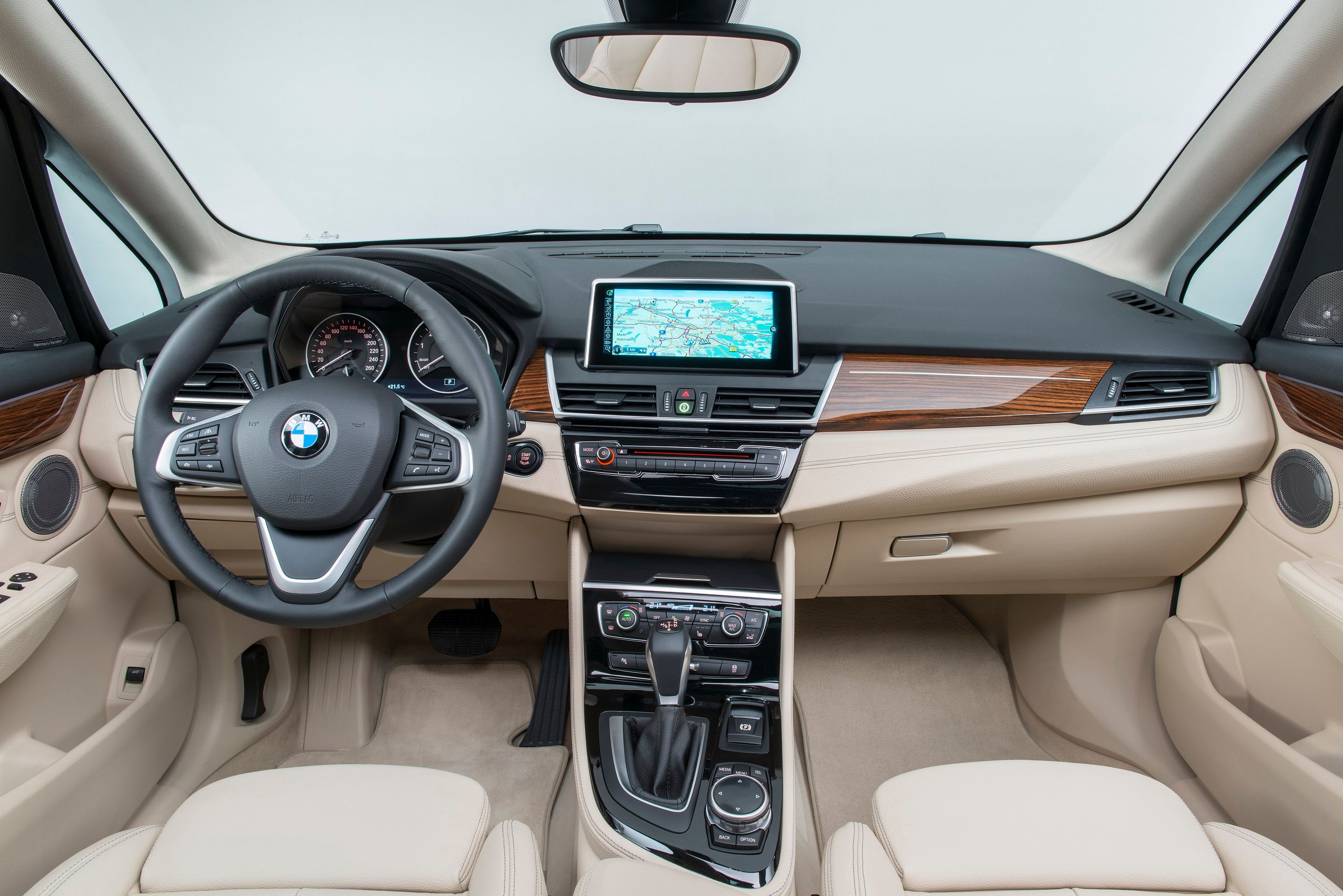
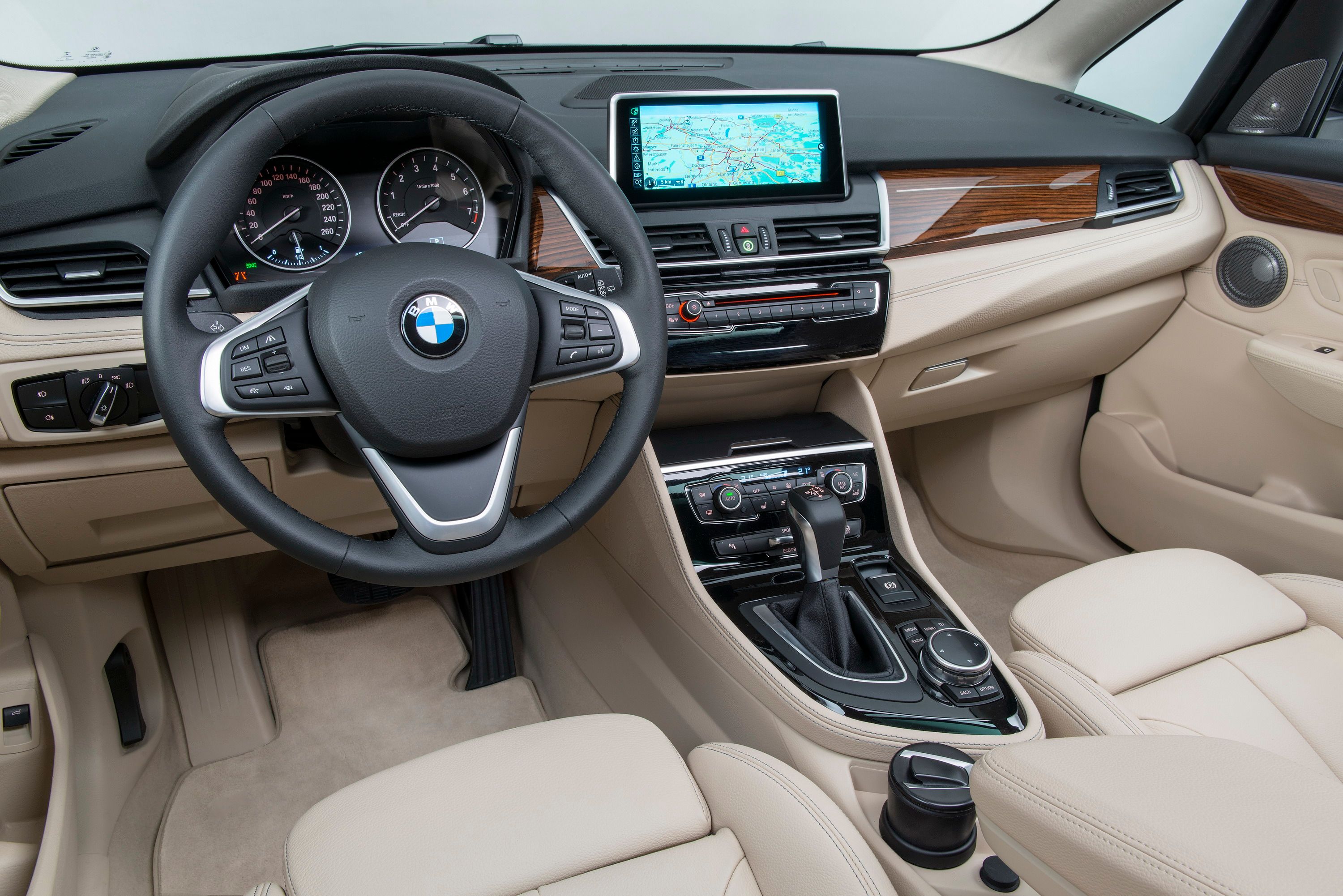
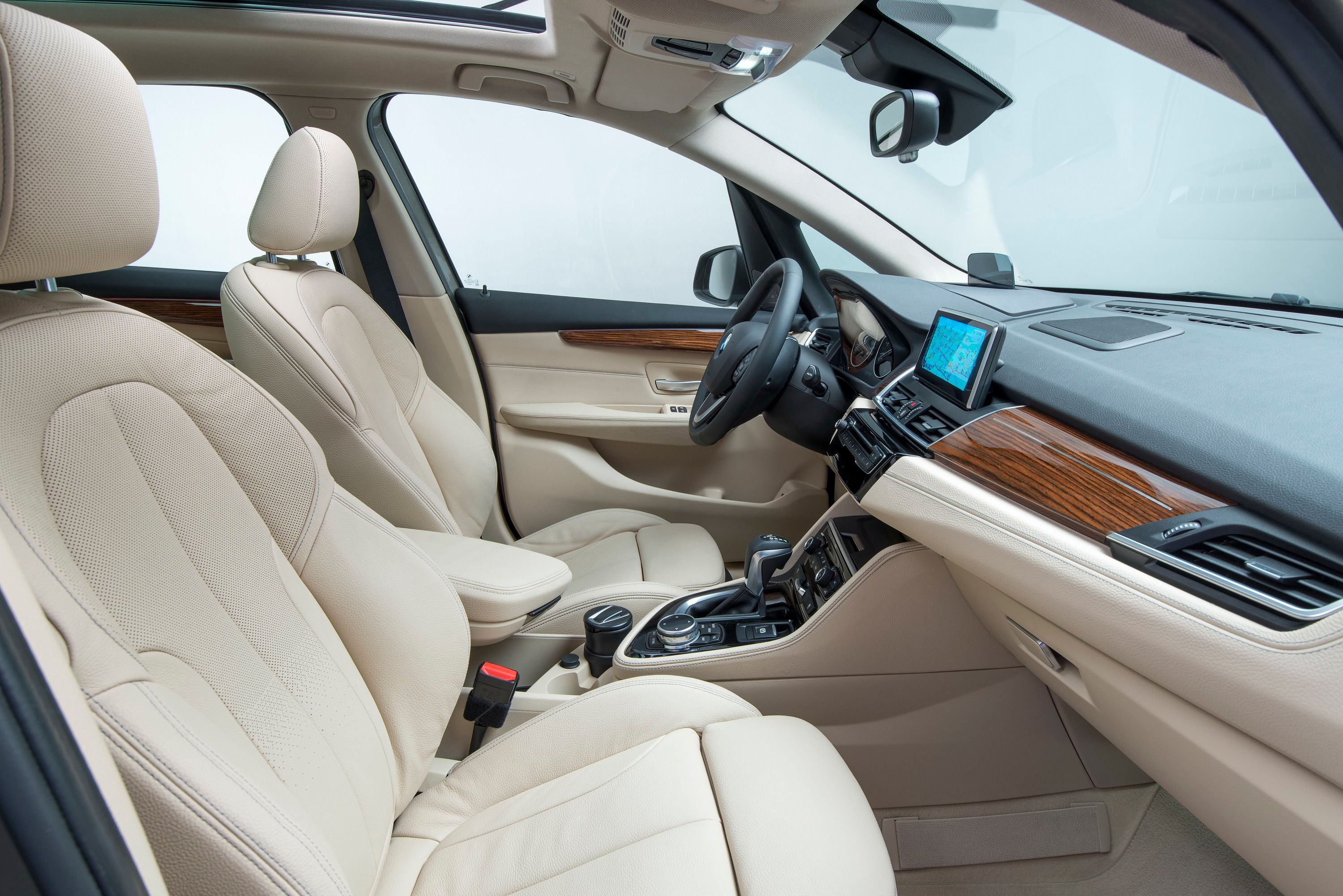
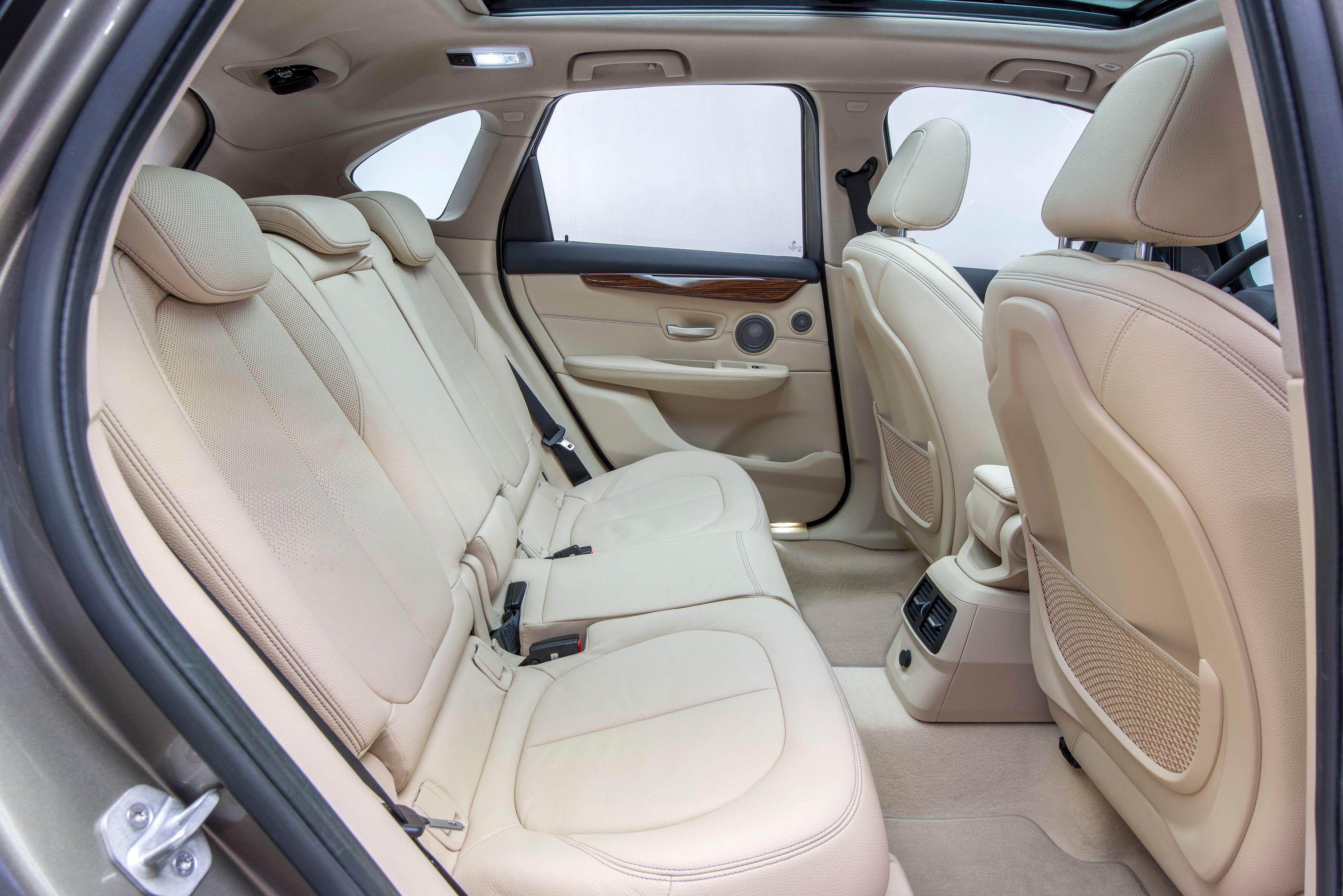
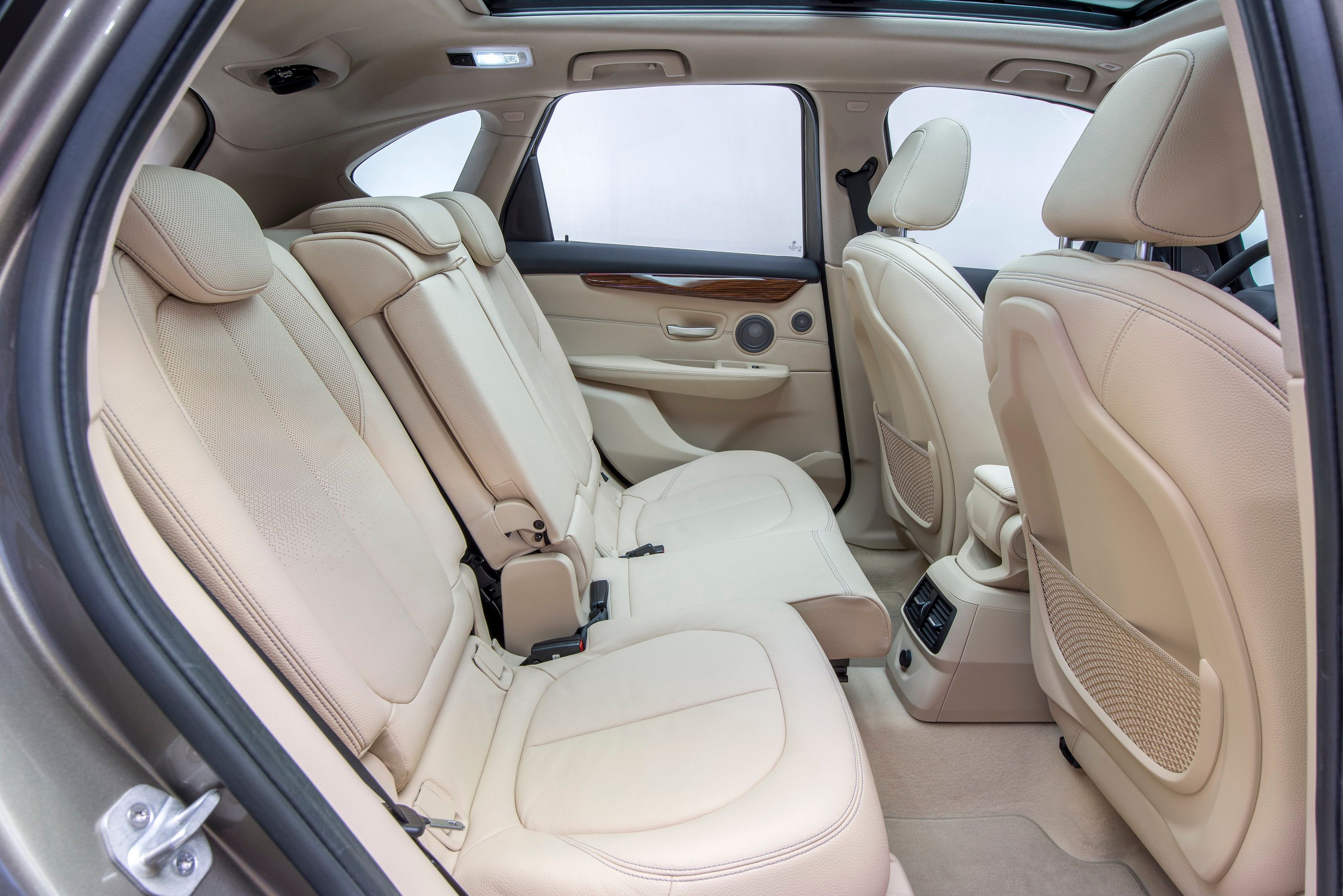
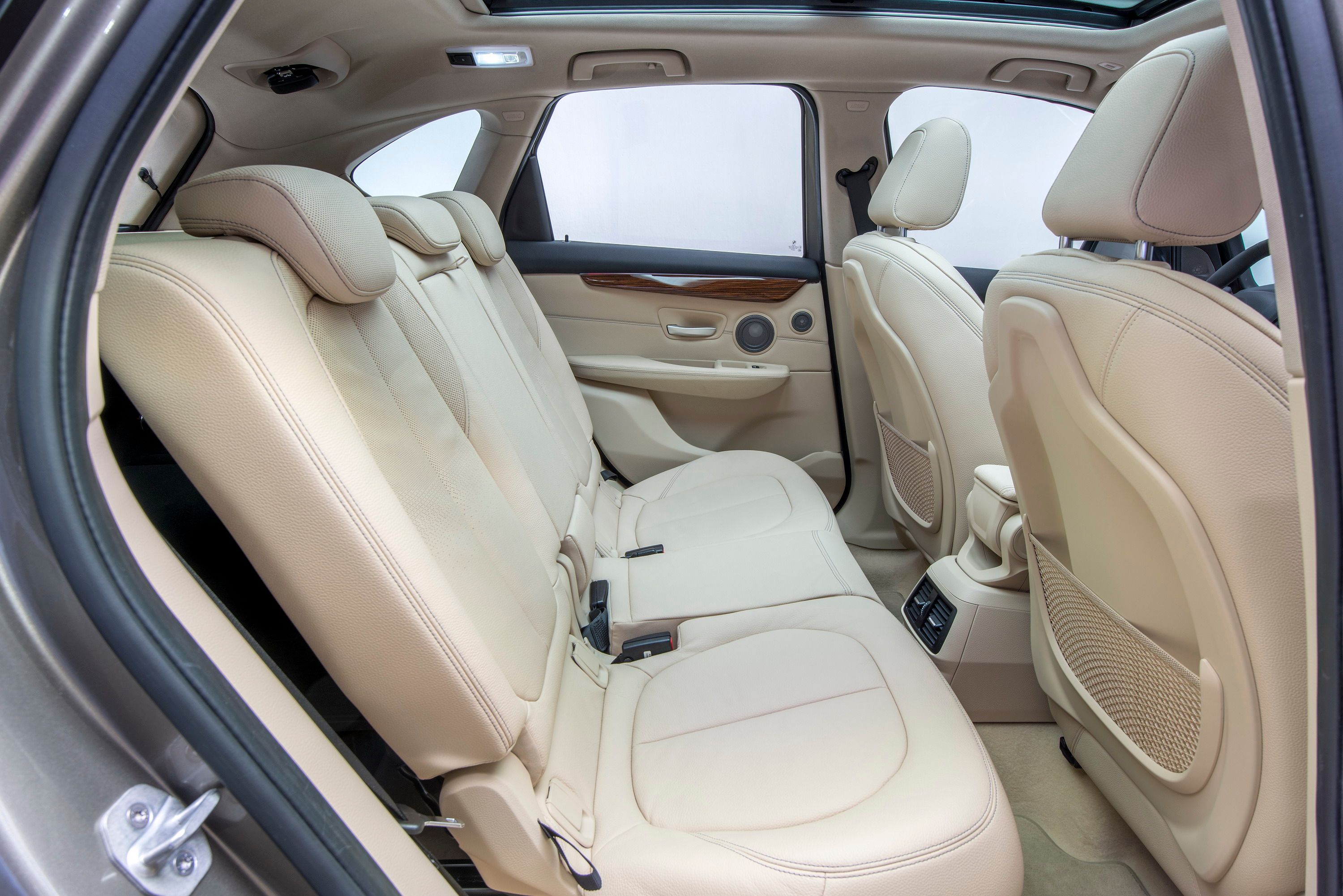
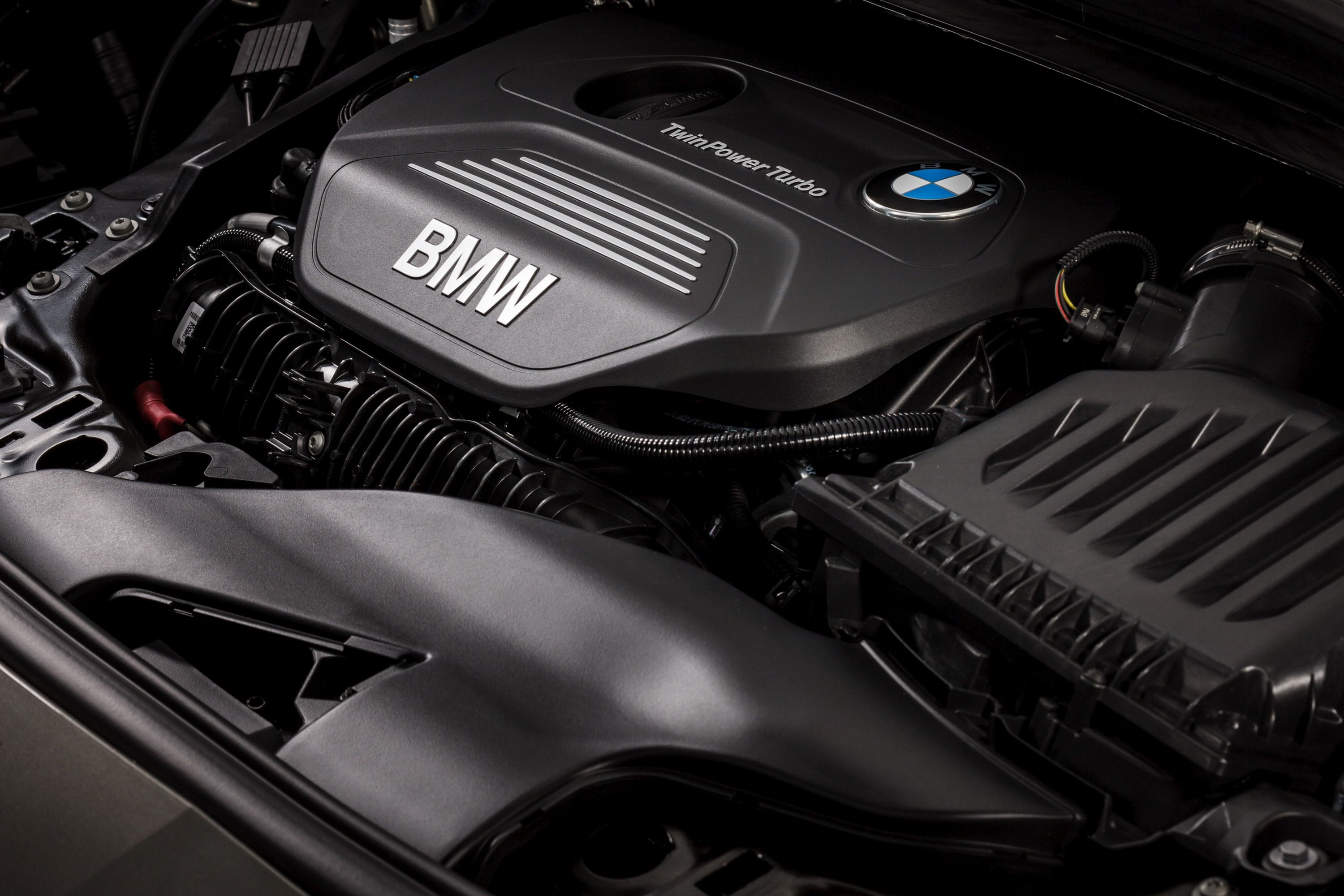
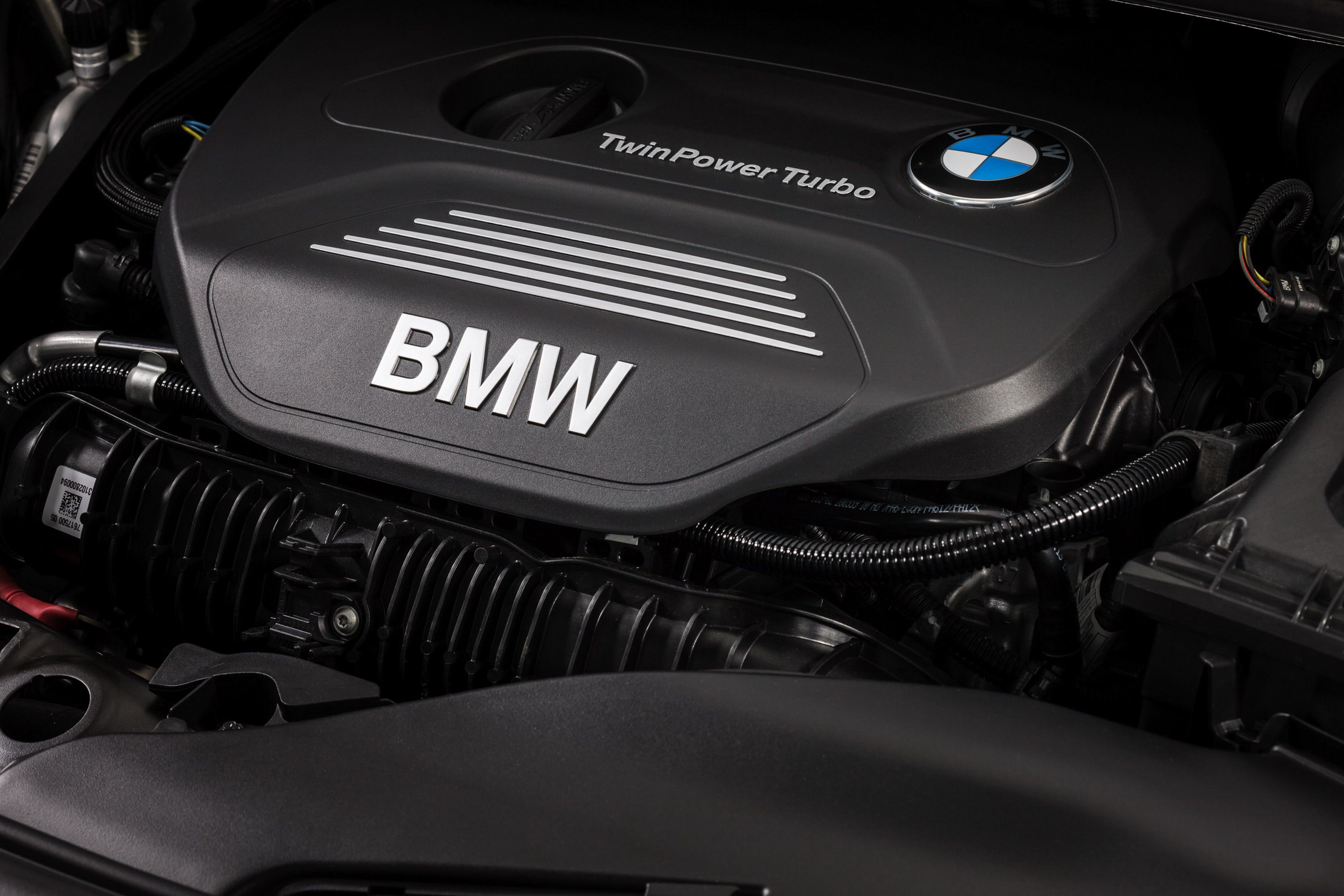
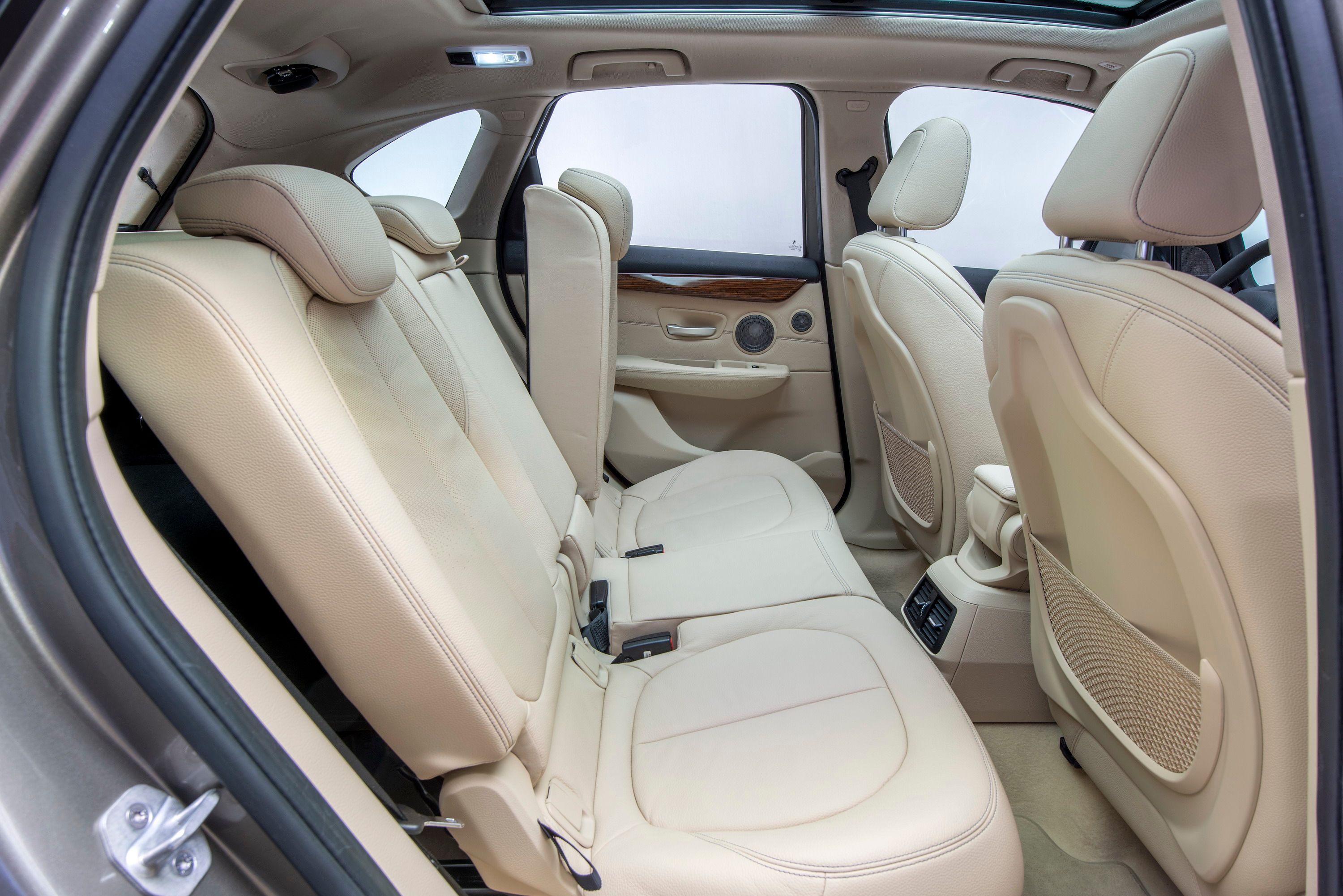
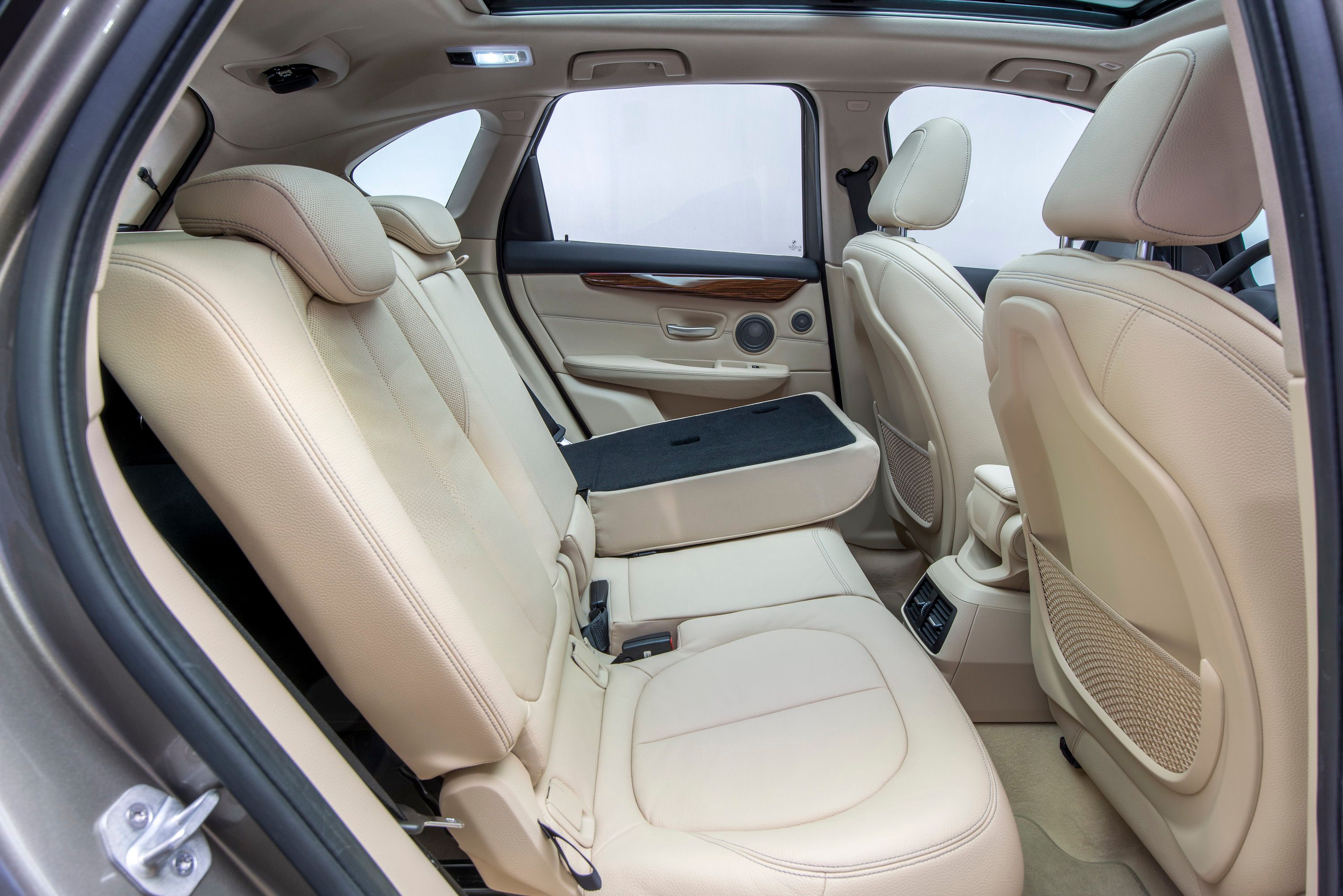
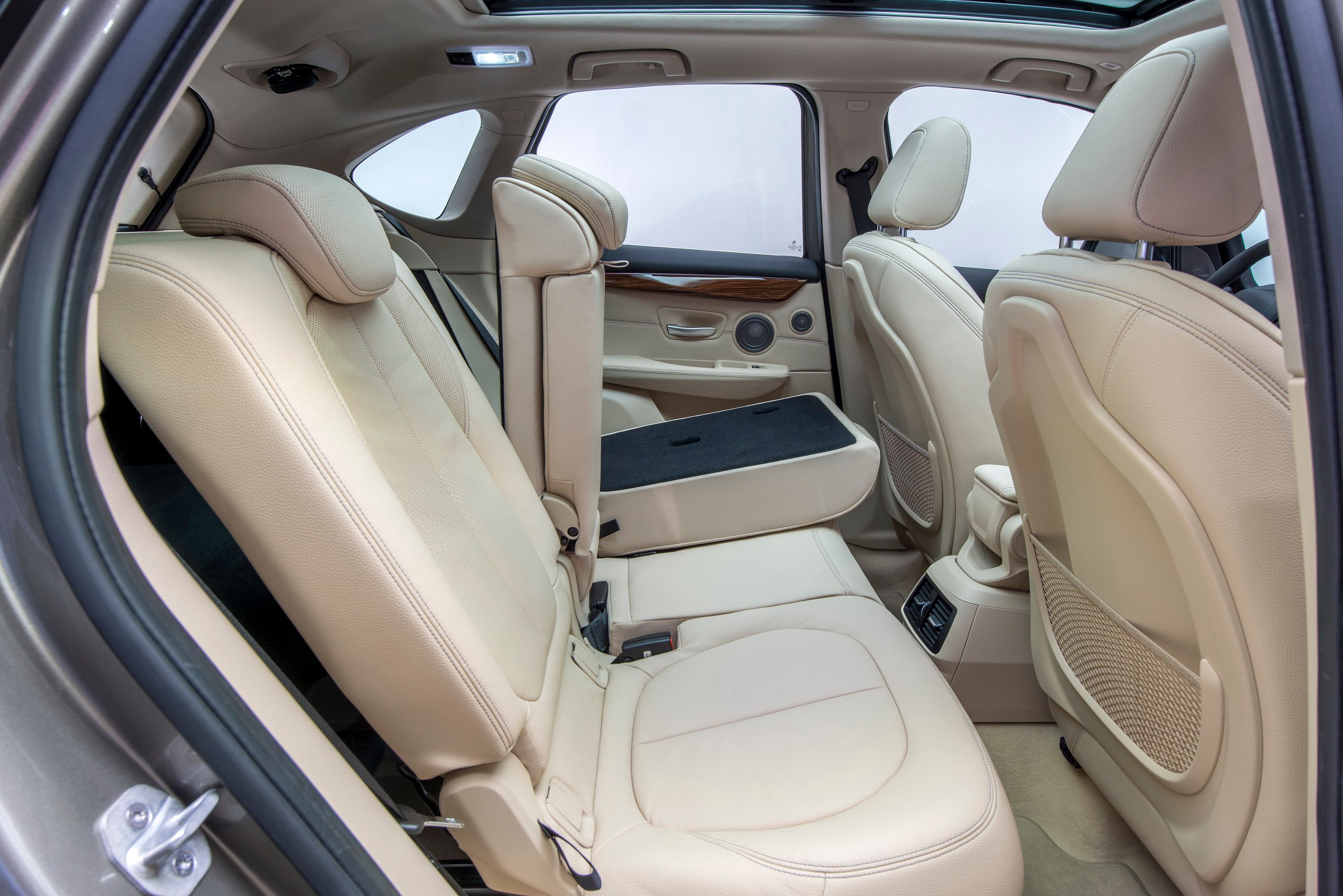
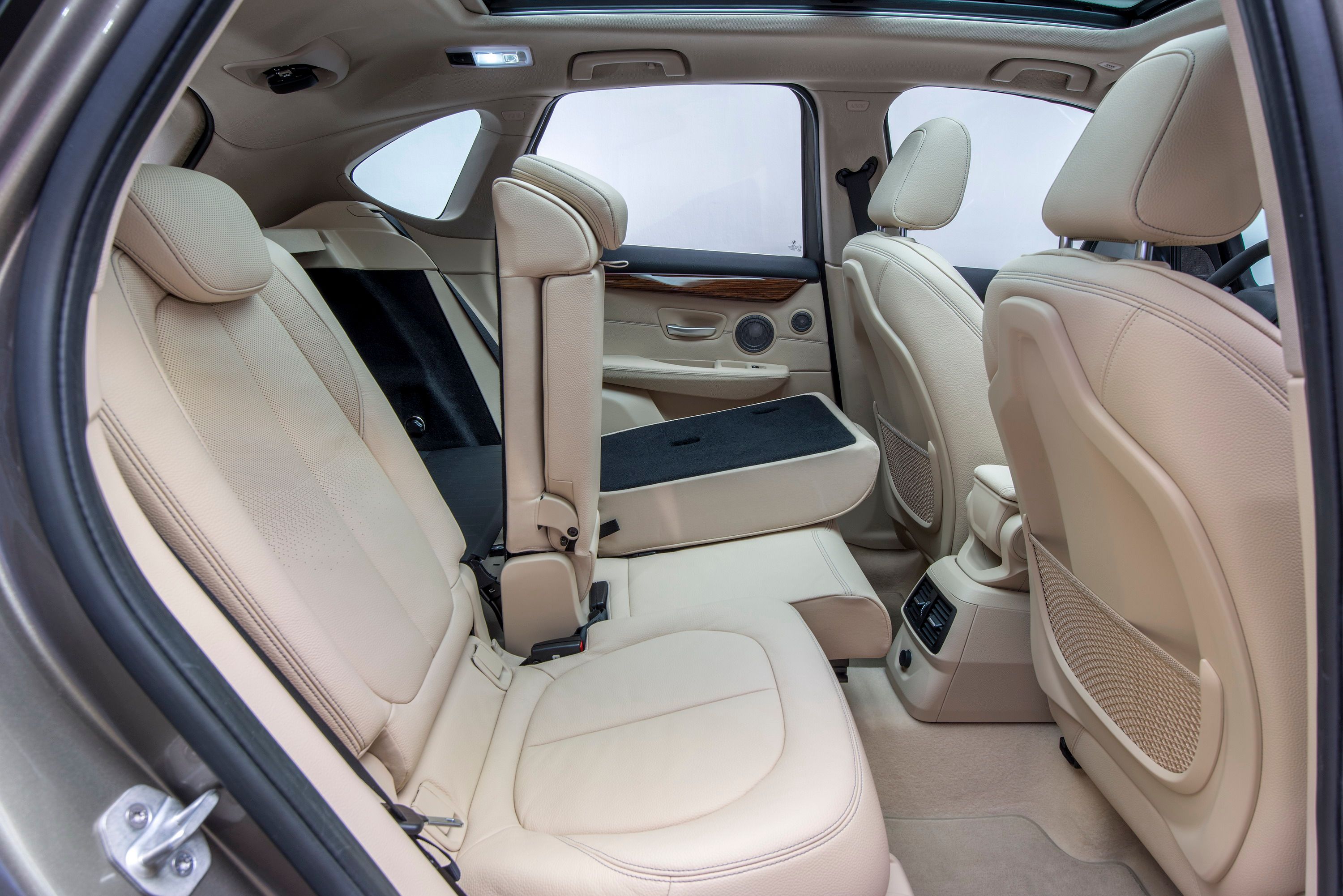
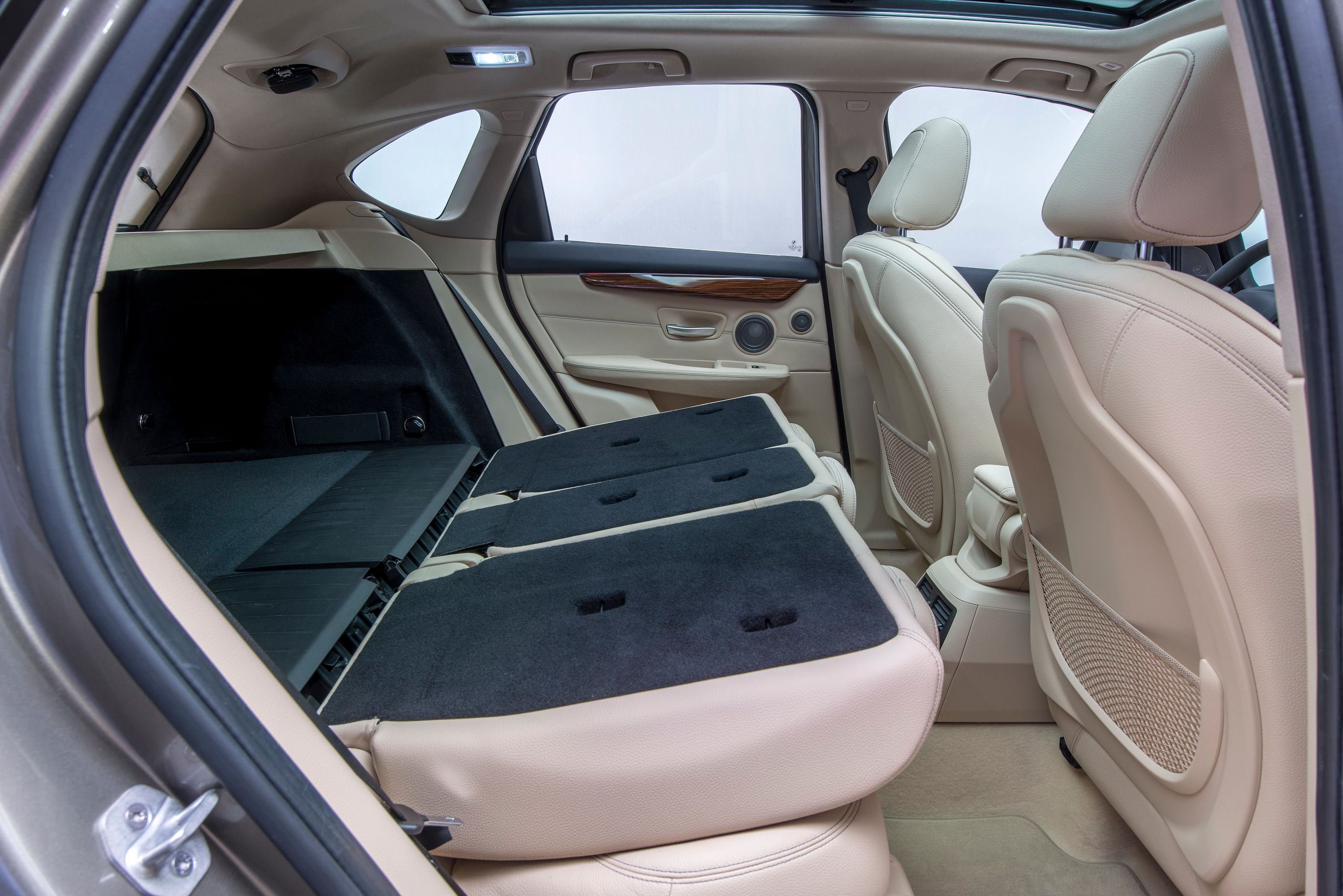
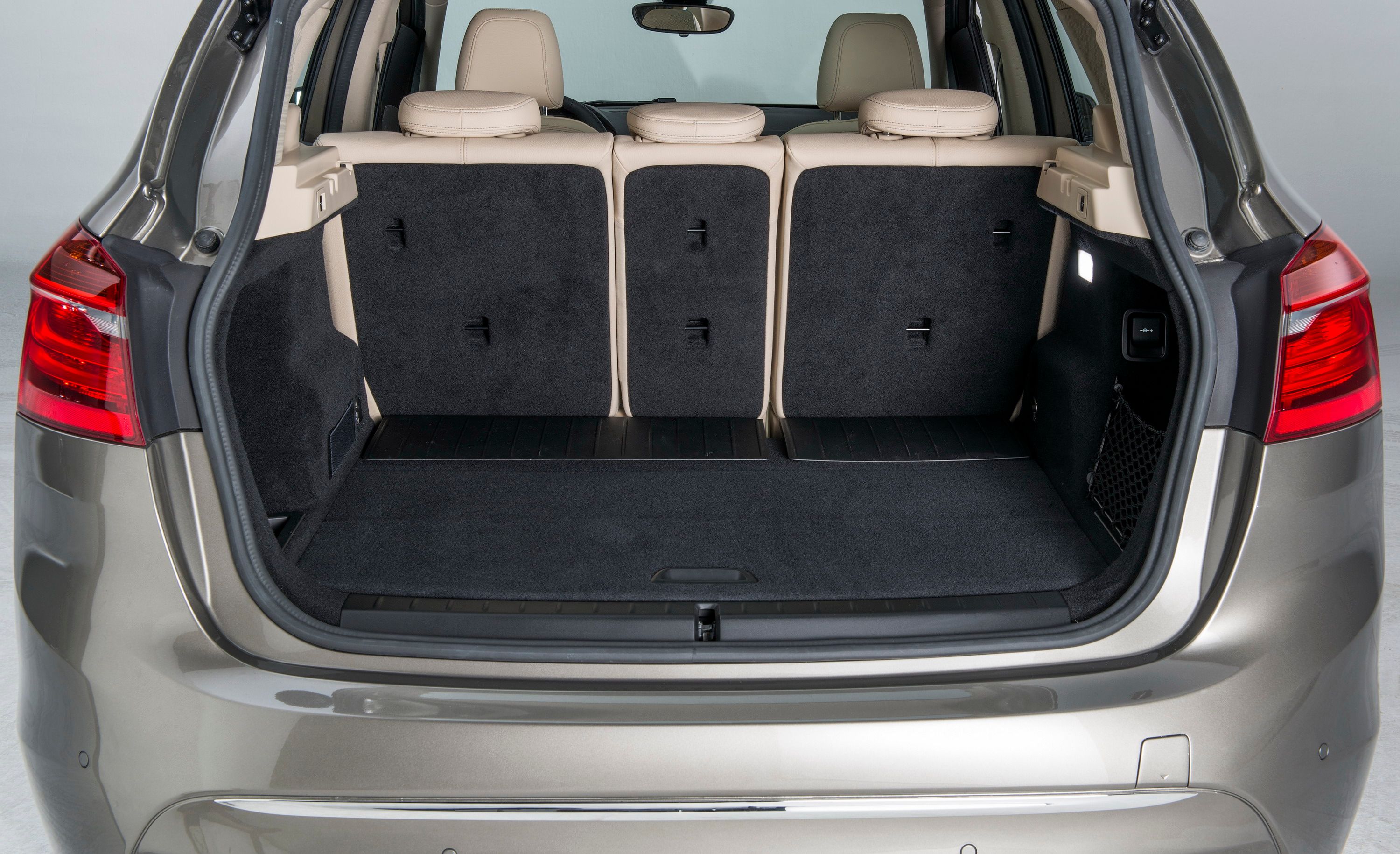
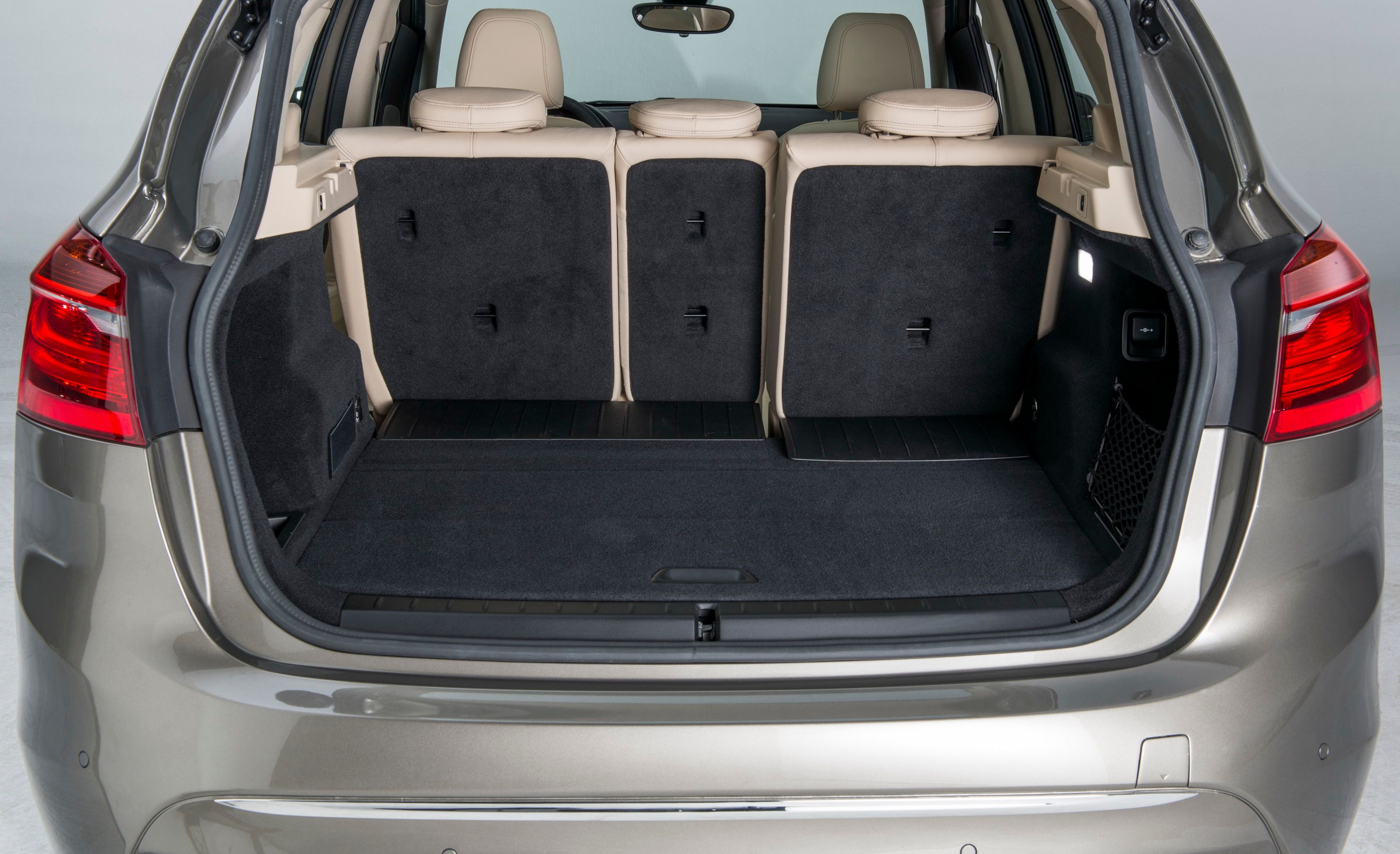
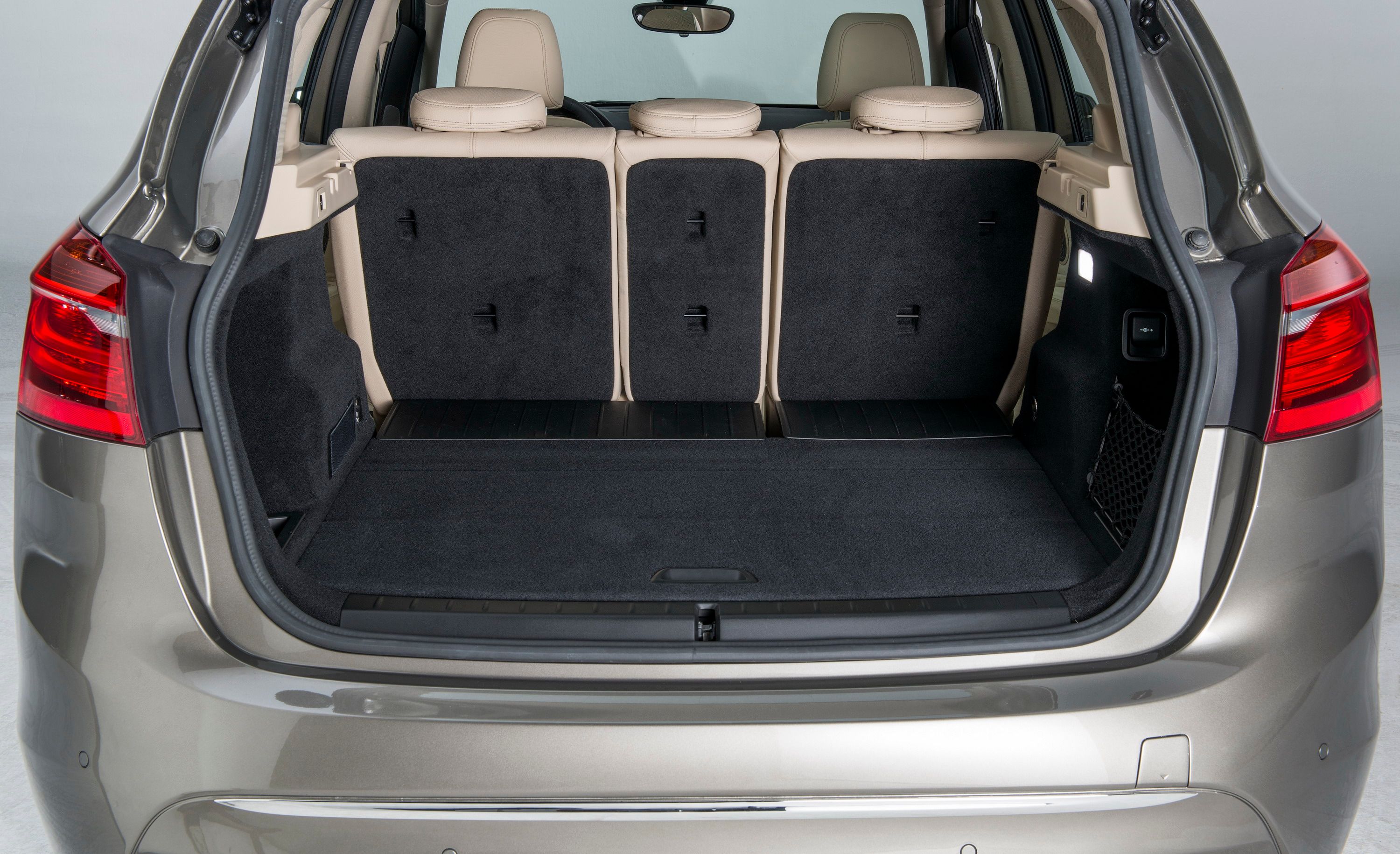
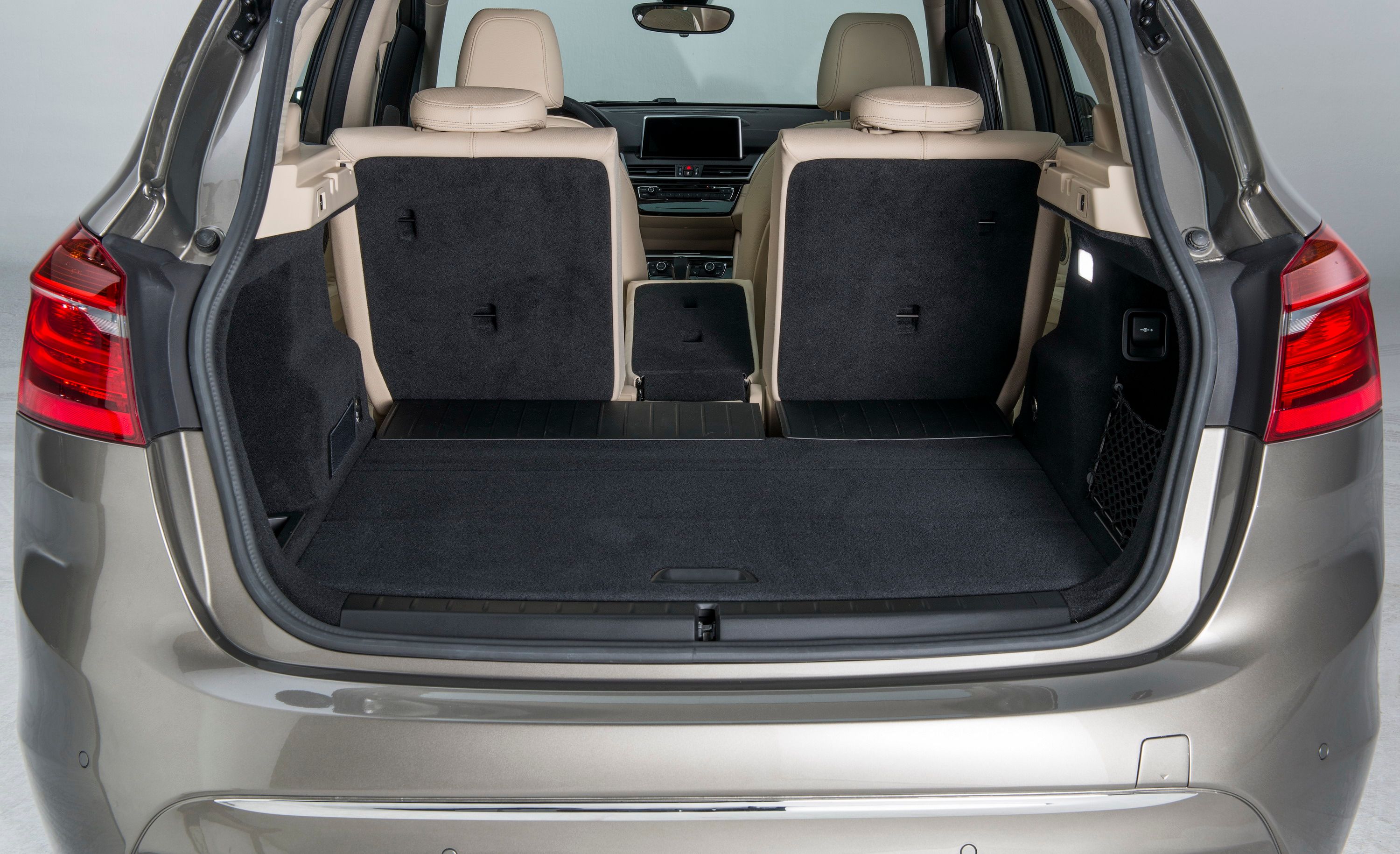









































































- Make: Array
- Model: 2014 - 2020 BMW 2 Series Active Tourer
- Engine/Motor: inline-3
- Horsepower: 136 @ 4750
- Torque: 162 @ 1250
- Transmission: 6-speed manual
- [do not use] Vehicle Model: Array
Exterior
As painful as it may be to say, the 2 Series AT is reminiscent of the Ford C-Max. From the high roof that traces the same quasi-coupe slope and the rear lift gate to the door handles perched on the rising belt line and the short front overhang, the BMW just looks very…non-BMW-ish. However, the Bavarians have added enough BMW flair to squash any further association with the C-Max or any other Spec-B car.
Quad LED headlights flank the signature kidney bean grille with the blue and white BMW roundel badge perched above leaving strong accent lines running the length of the hood in its wake. The triple-slotted lower air dam with integrated fog lights really move the 2 Series’ looks up-market.
Around to the side, a strong accent line just above the bottom doorsills gives the 2 a planted look while the rising belt line lends an air of rapid movement to the car. The shark fin antenna, spoiler over the rear window, and dual chrome-tipped exhausts pipes further the speedier look about the car.
As for the styling differences between the Active Tourer and Grand Tourer, the latter is 8.2 inches longer and 1.9 inches taller, with the length happening in the rear doors and height happening at the B-pillar. The Grand Tourer also keeps a flatter roofline to accommodate headroom in the third-row seat As such, the Grand Tourer’s rear glass is more vertical, giving it a more mini van-like appearance.
What’s New For 2018
BMW has given the 2 Series AT and GT a slightly taller nose with larger kidney grilles. A new design for the LED fog lights and LED headlights are there, though the differences are hard to casually spot. The slight changes carry onto the back, where the lower apron has a deeper character intention between the dual exhaust tips. And speaking of exhaust tips, all four-cylinder models have the dual, chrome-tipped pipes.
The M Sport edition, available on the Active Tourer, now has a more aggressive lower apron and a blacked out rear apron that accompany the other changes found on the 2018 models.
Jucaro Beige and Sunset Orange join the color palette and six new wheel styles are available. There are four new 17-inch options, an 18-inch option, and a new 19-inch option.
2014 BMW 2 Series Active Tourer - Exterior Dimensions
|
Length |
4342 mm (170.94 inches) |
|
Width |
1800 mm (70.86 inches) |
|
Height |
1555 mm (61.22 inches) |
|
Wheelbase |
2670 mm (105.11 inches) |
|
Track, front/rear |
1561/1562 (61.45/61.49 inches) |
Interior
The interior is where the 2-Series Active Tourer really shines. BMW seems to have done its homework on what customers look for in this vehicle segment. Generous cargo room abounds behind the rear bench, and even more is accessible when the 40/20/40 rear seatbacks are folded flat. Naturally, the Grand Tourer’s 50/50-split third row folds flat, too.
Up front, the center console, dashboard, and instrument cluster are unmistakably BMW. Materials, fit and finish, and amenities appear to be on par with more expensive models, like the 3 Series->ke290. The iPad-like navigation screen is perched atop the center stack and will be a welcome companion while trekking through unfamiliar urban environments. An electronic emergency brake lever is standard fair as well as the iDrive knob sitting next to the leather-booted shifter. BMW’s smart key and push-button starting is present along with plenty of redundant steering wheel controls. A heads-up display is also available.
What’s New For 2018
As minimal as the exterior update are, so too are the interior changes. The 2018 models have a new black background in the gauge cluster, the iDrive infotainment system has been updated with the latest software and apps, and the automatic transmission receives an updated electronic shifter. BMW also added three new upholstery options, two of which are a cloth and Sensatec combination and the third a new Mocha color with the leather option.
Drivetrain
The 2018 BMW 2 Series Active Tourer and Grand Tourer will retain the five engine options, but improvements to the crankshaft, heat management systems, valve train, and turbos all bring more power and greater efficiency. The diesel engines now all come with an after-treatment particulate filter, an NOX absorber catalyst, and a selective catalytic reduction system that uses the typical urea fluid to reduce emissions. BMW’s TwinPower Turbo setup is also found on the diesel modes, too, which includes two turbos.
The trims include the 218i and 220i gasoline engines and the 216d, 218d, and 220d turbodiesels. Horsepower ranges from 109 to 231 in the Active Tourer and from 109 to 192 in the Grand Tourer. Joining the eight-speed automatic and six-speed manual for 2018 is a seven-speed dual clutch automatic.
As for the 225xe iPerformacne Active Tourer, it boasts a 28-mile range on all-electric power. With the gasoline engine running, it enjoys a total output of 224 horsepower with fuel economy estimated to average an impressive 113 to 122 mpg.
Fuel economy for the gasoline and diesel powertrains are said to range between 44.1 and 65.7 mpg. Keep in mind, these number are calculated using Europe’s overzealous predictions, so real-world mileage might come in lower.
When it debuted for 2015, he 2-Series Active Tourer was initially available with three engine choices. Starting out in the 218i, a 1.5-liter turbocharged inline-three generating 136 horsepower and 162 pound-feet of torque. BMW listed the 0-to-62 mph time at 9.3 seconds. A six-speed manual transmission was standard issue here. Further up the list was the 225i fitted with a 2.0-liter turbocharged inline-four making a decent 231 horsepower and 258 pound-feet of torque. It only came with an eight-speed automatic transmission, however. Rounding out the lineup was 218d powered by a 2.0-liter turbodiesel making 150 horsepower and 243 pound-feet of torque.
2014 BMW 2 Series Active Tourer - Drivetrain Specifications
|
Config./No. of cyls./valves |
in-line/3/4 |
in-line/4/4 |
in-line/4/4 |
|
Engine technology |
BMW TwinPower Turbo technology with twin-scroll turbocharging, High Precision Direct Petrol Injection |
BMW TwinPower Turbo technology with variablegeometry turbocharger, common rail direct injection |
BMW TwinPower Turbo technology with variablegeometry turbocharger, common rail direct injection |
|
Effective capacity cc |
1499 |
1998 |
1995 |
|
Stroke/bore mm |
94.6/82.0 |
94.6/82.0 |
90.0/84.0 |
|
Compression ratio :1 |
11.0 |
10.2 |
16.5 |
|
Fuel |
min RON 91 |
min RON 91 |
Diesel |
|
Max. output kW/hp |
100/136 |
170/231 |
110/150 |
|
at rpm |
4500–6000 |
4750–6000 |
4000 |
|
Max torque Nm |
220 |
350 |
330 |
|
at rpm |
1250 |
1250 |
1750–2250 |
|
at rpm |
200 (124 mph) |
235 (146 mph) |
205 (127 mph) |
|
Top speed km/h |
9.3 |
6.8 |
8.9 |
Suspension
The suspension is a critical part of the 2-Series’ makeup. Up front lies a single-jointed spring strut axle while a multi-link setup is at home out back. BMW says the 2-Series has undergone plenty of fine-tuning in order to keep the BMW driving characteristics intact. An electromechanical steering system is said to provide generous feedback while eliminating torque steer.
BMW’s M Sport Line adds an aero package and sport suspension with larger alloy wheels, complete with the standard M badging, giving the 2 a more track-worthy look. We can’t say the 2 Series is anyone’s first choice when bombing the local autocross circuit.
Pricing
BMW has not announced pricing for the updated 2018 2 Series Active Tourer or Grand Tourer, but we don’t foresee a major jump. The 2017 Active Tourer starts at £24,270, or roughly $29,000 at current exchange rates. The Grand Tourer starts at £26,020, or roughly $31,100.
Competition
We mentioned it enough times in the article that we couldn’t neglect the C-Max in the competitors’ list. The C-Max is Ford->ke31’s first and only hybrid-only powertrain vehicle. It comes in two different powertrain flavors, the standard Hybrid model and the Energi Plug-in Hybrid, the latter of which is an electric-only vehicle.
Sharing the same size platform as the 2 Series, the C-Max does a good job of lugging cargo around town. It’s high seating position lends itself to great outward visibility for inner-city driving.
Prices for the C-Max start at $28,455 for the Hybrid version and $32,920 for the Energi Plug-in Hybrid.
The Fiat->ke30 500L (or Large) is a European alternative to the 2-Series with three engine choices available: the 1.4-liter I-4 gasser shared with the standard 500, the TwinAir version, along with a 1.3-liter turbodiesel. Seating and cargo capacities are much the same with the other two cars mentioned here, but styling is all its own. The Fiat brings its Italian flair to the table, although its look tends to be described as polarizing.
Prices start at just $19,195 and rise to just over $25,000.
Conclusion
BMW made an interesting call when green-lighting the 2 Series Active Tourer and Grand Tourer. The two cars don’t fit the brand’s ethos of “the ultimate driving machine.” Still, sales equals more profits, so it’s clear that BMW’s bottom line is more valued than its image. Then again, when Lamborghini is building an SUV and Corvette has a mid-engine supercar, anything seems possible.
Separate from their brand, the 2 Series AT and GT make great city cars for those needing to move people and cargo in the most efficient way possible, while still looking more well off than the neighbors and the ho-hum van. For that, the AT and GT make great sense. As a BMW, however, it’s hard to see how pair improve BMW’s standing as a German automaker.
Update History
Update 5/23/2017: The BMW 2 Series Active Tourer is set for a mid-cycle facelift. Check out the spy shots section below to see what changes are in store for the 2018 model year.
Mid-cycle Update Spy Shots 5/23/2017
The 2 Series Active Tourer is expected to see a generational shift in the next three to four years so, as usual, the mid-cycle facelift will be rather mundane. Expect to see the same angular angel eye rings around the headlight bulbs that we saw on the updated BMW M2 to go with a new taillight design. There will also likely be some very minor modification to the front and rear fascias, and maybe even a small update to the kidney grilles up front. As far as the interior goes, I wouldn’t expect much, but if the other 2 Series models are any indication, you can expect to see updated trim materials and an updated iDrive infotainment system. All other aspects of the car will remain the same including power output and overall design. We could potentially see some new exterior and interior color options or maybe a new wheel design, but that will be the extent of things.

